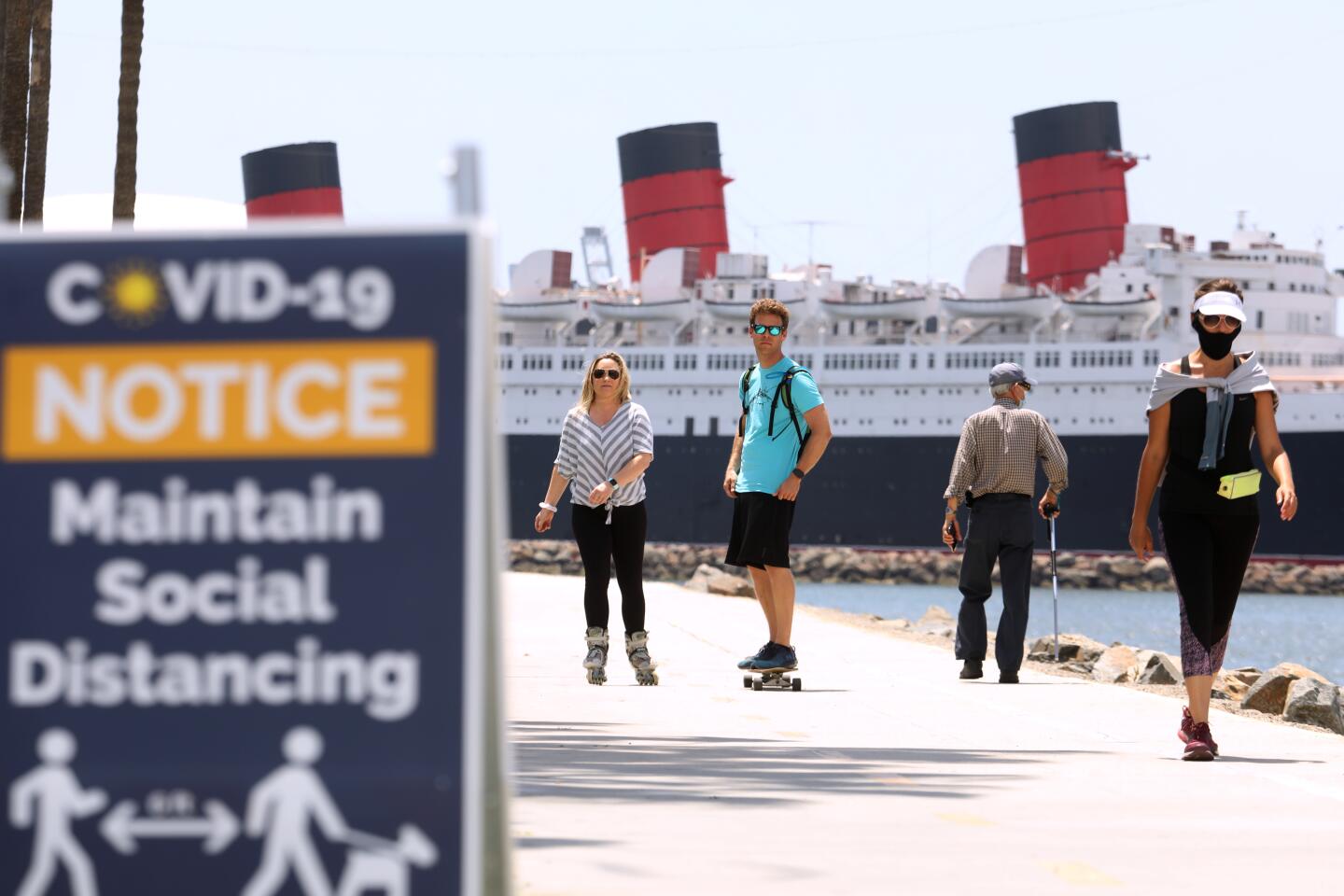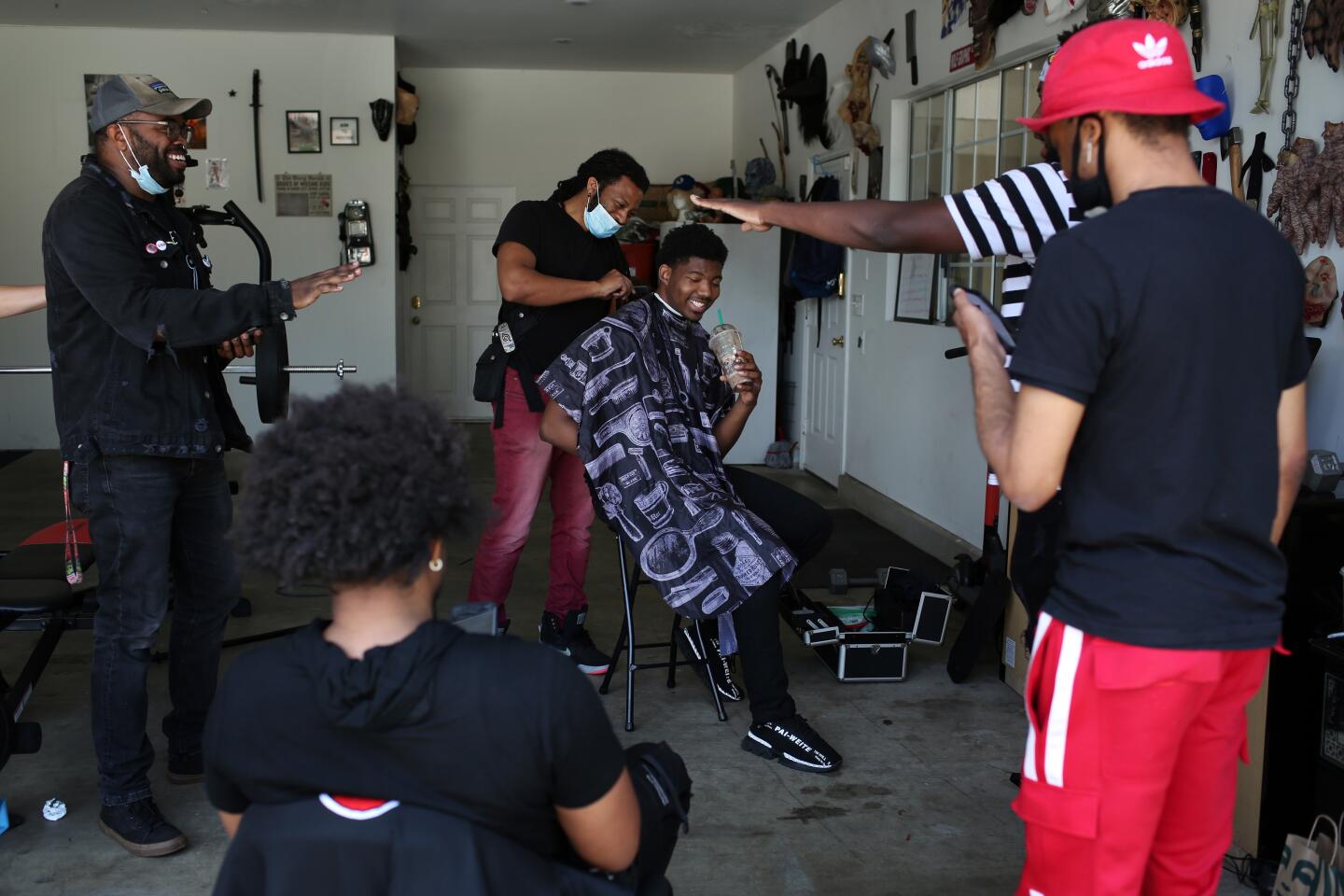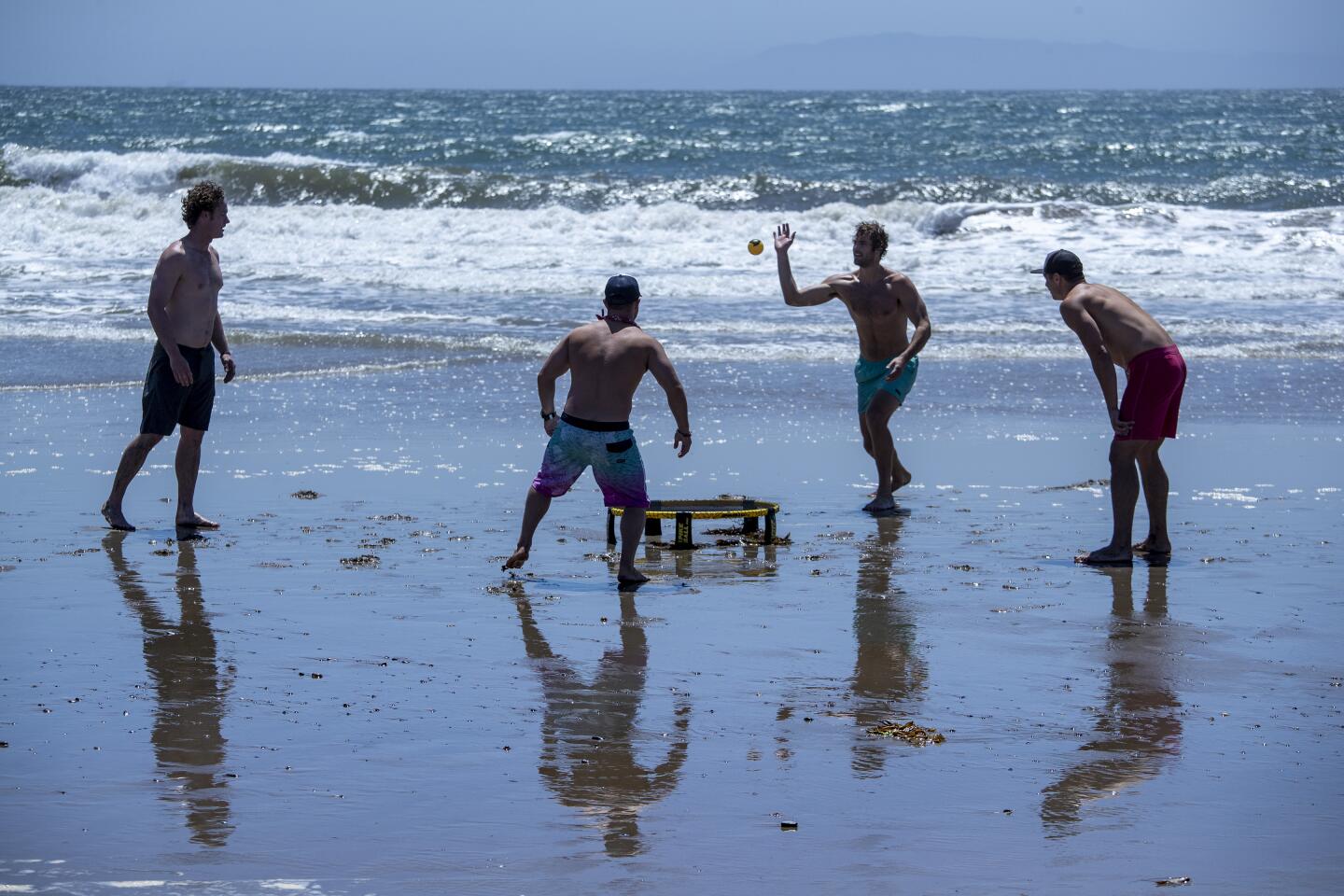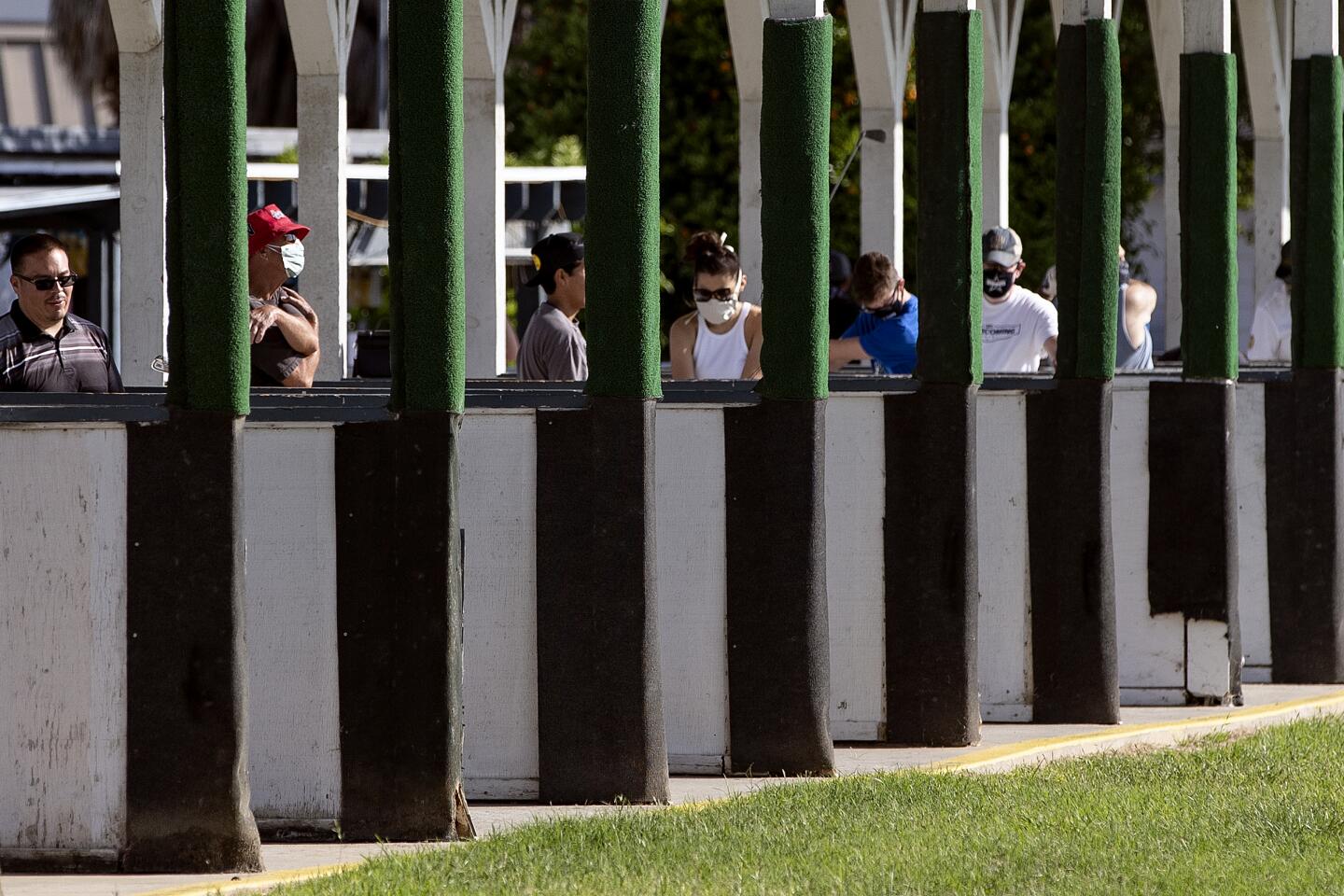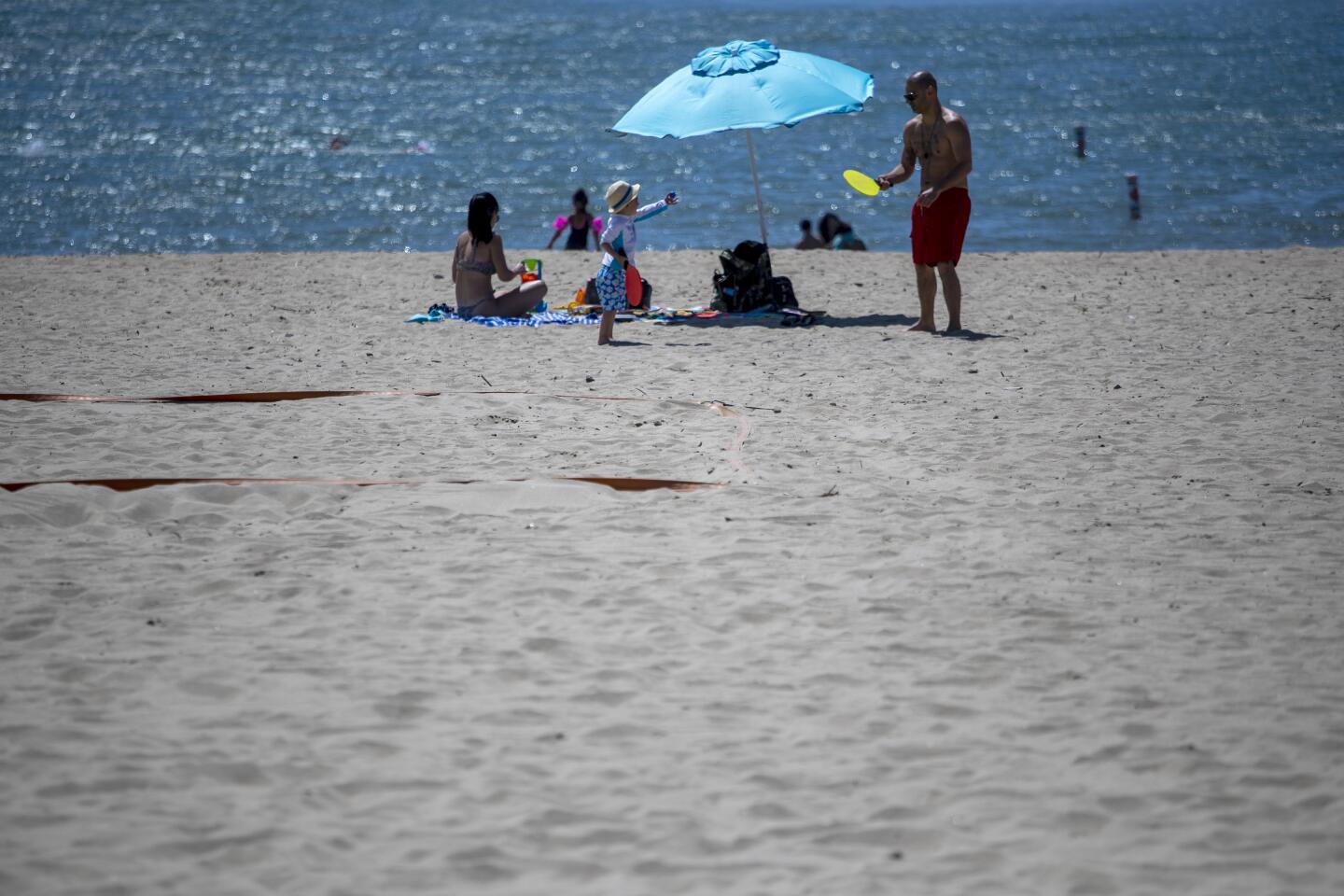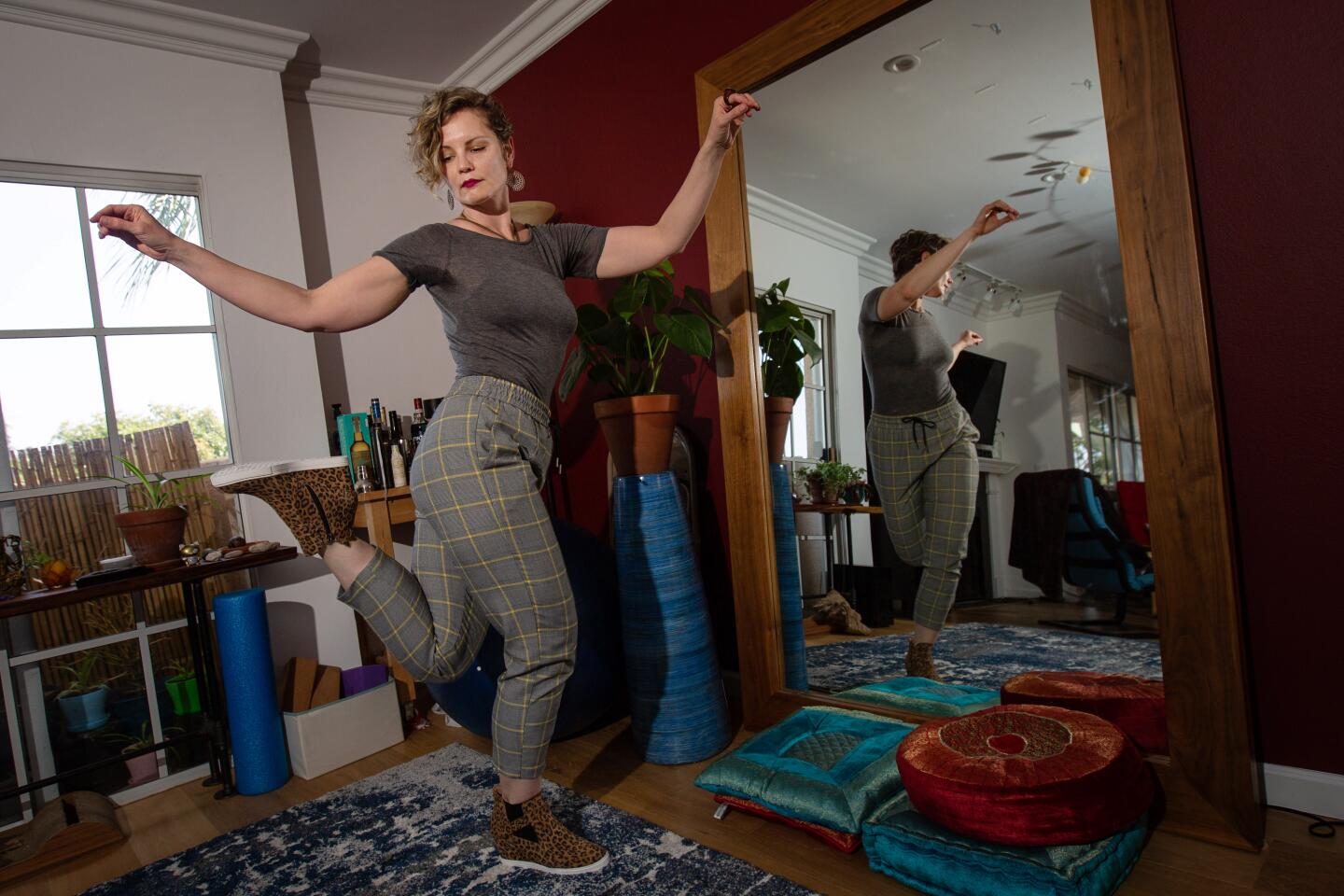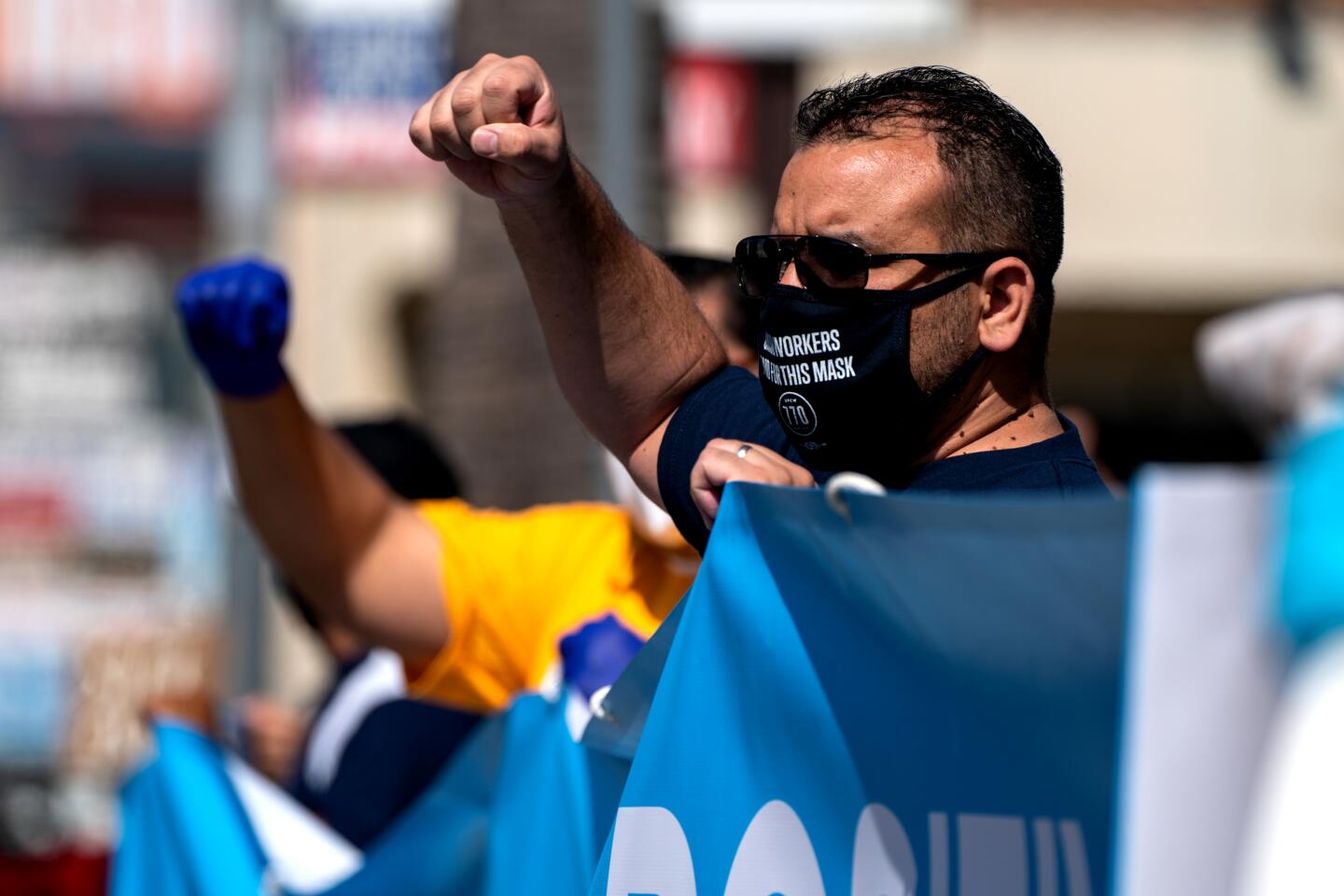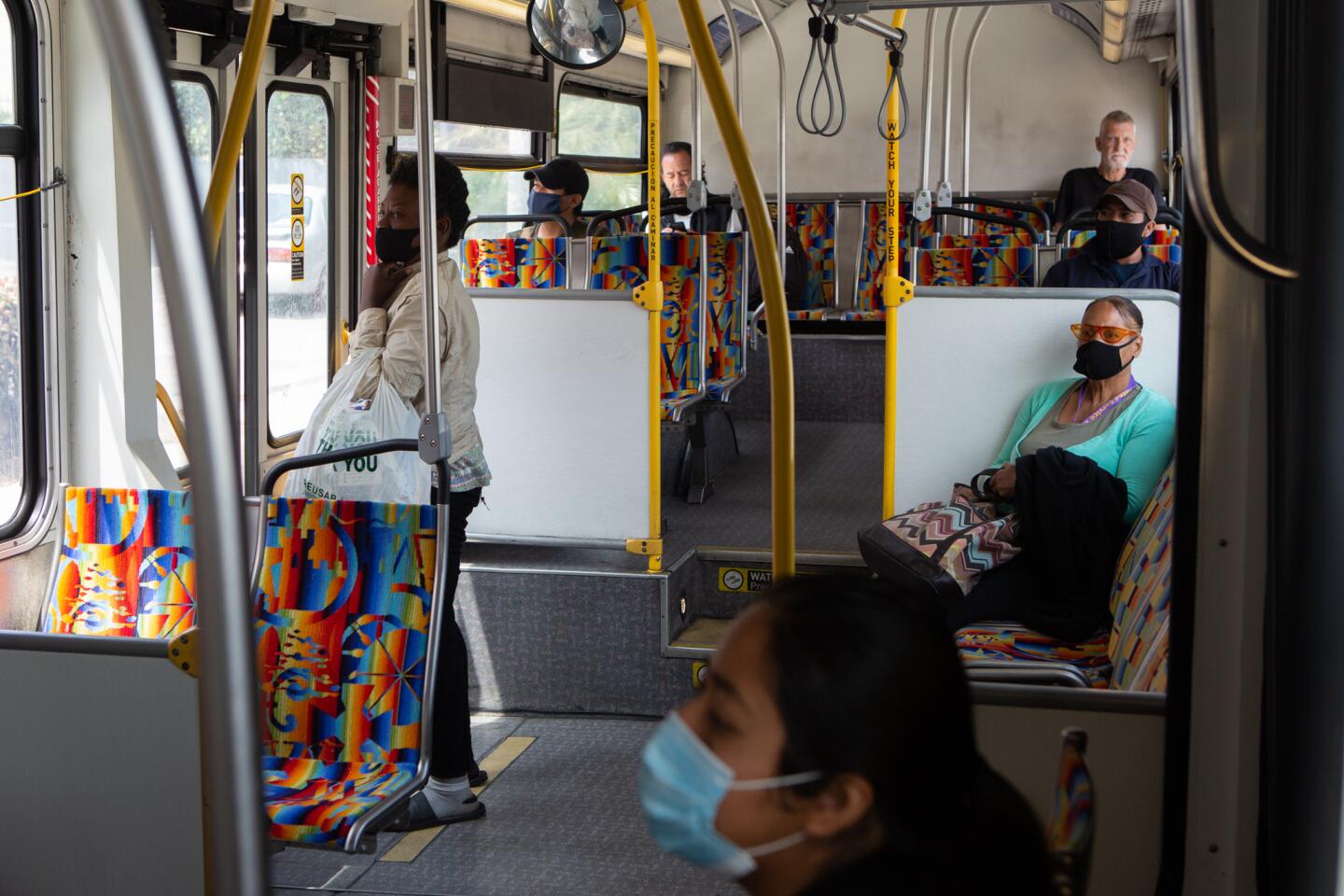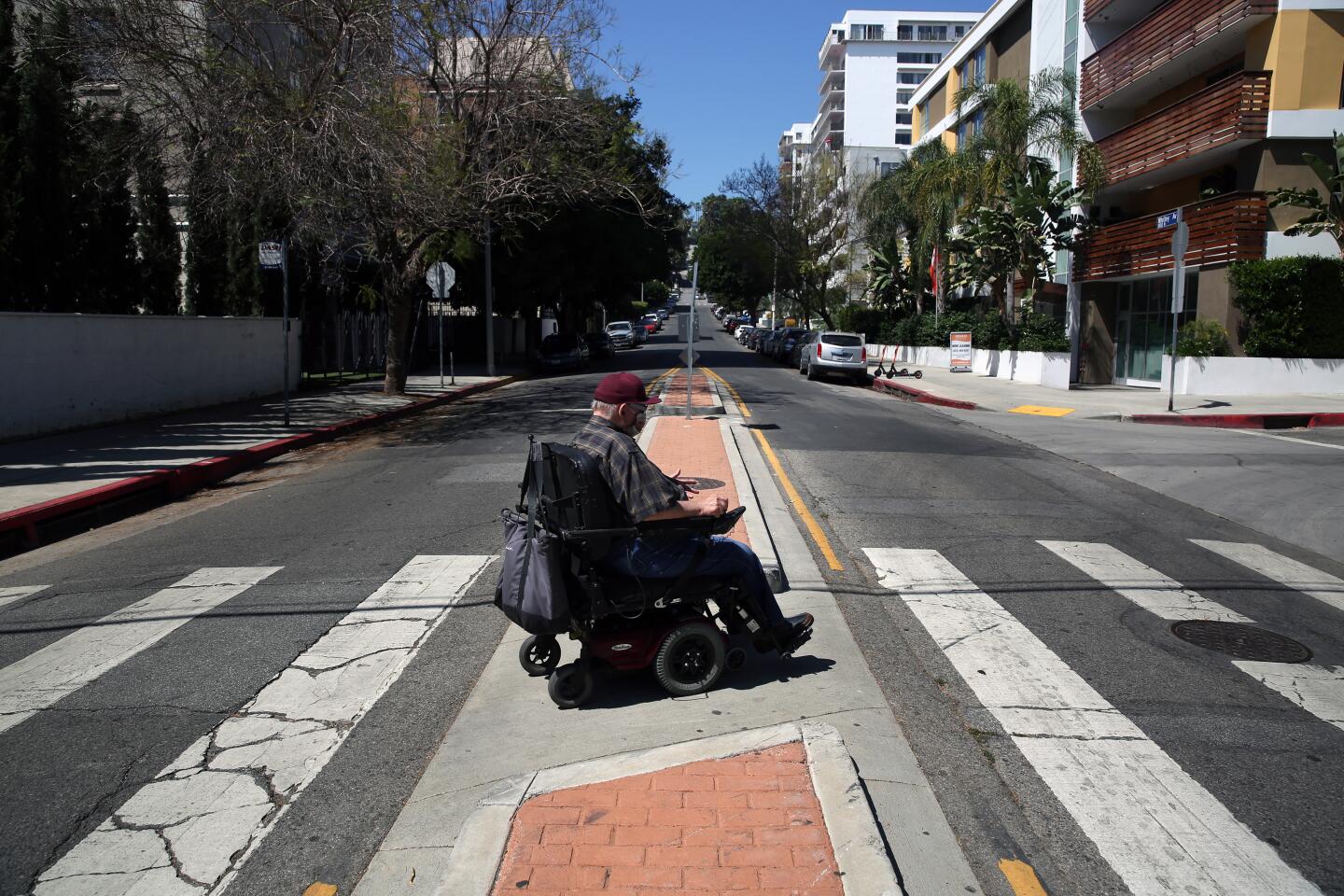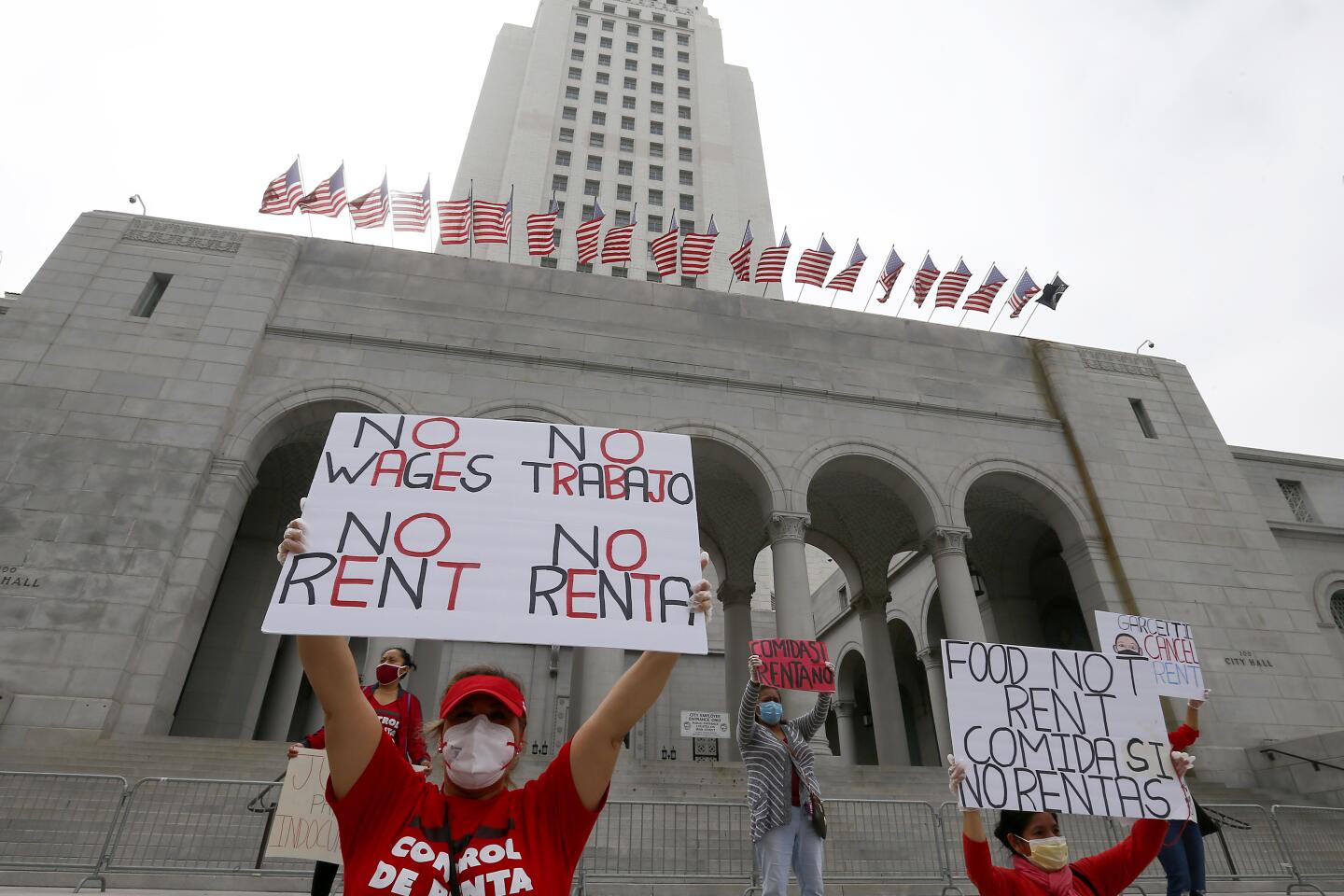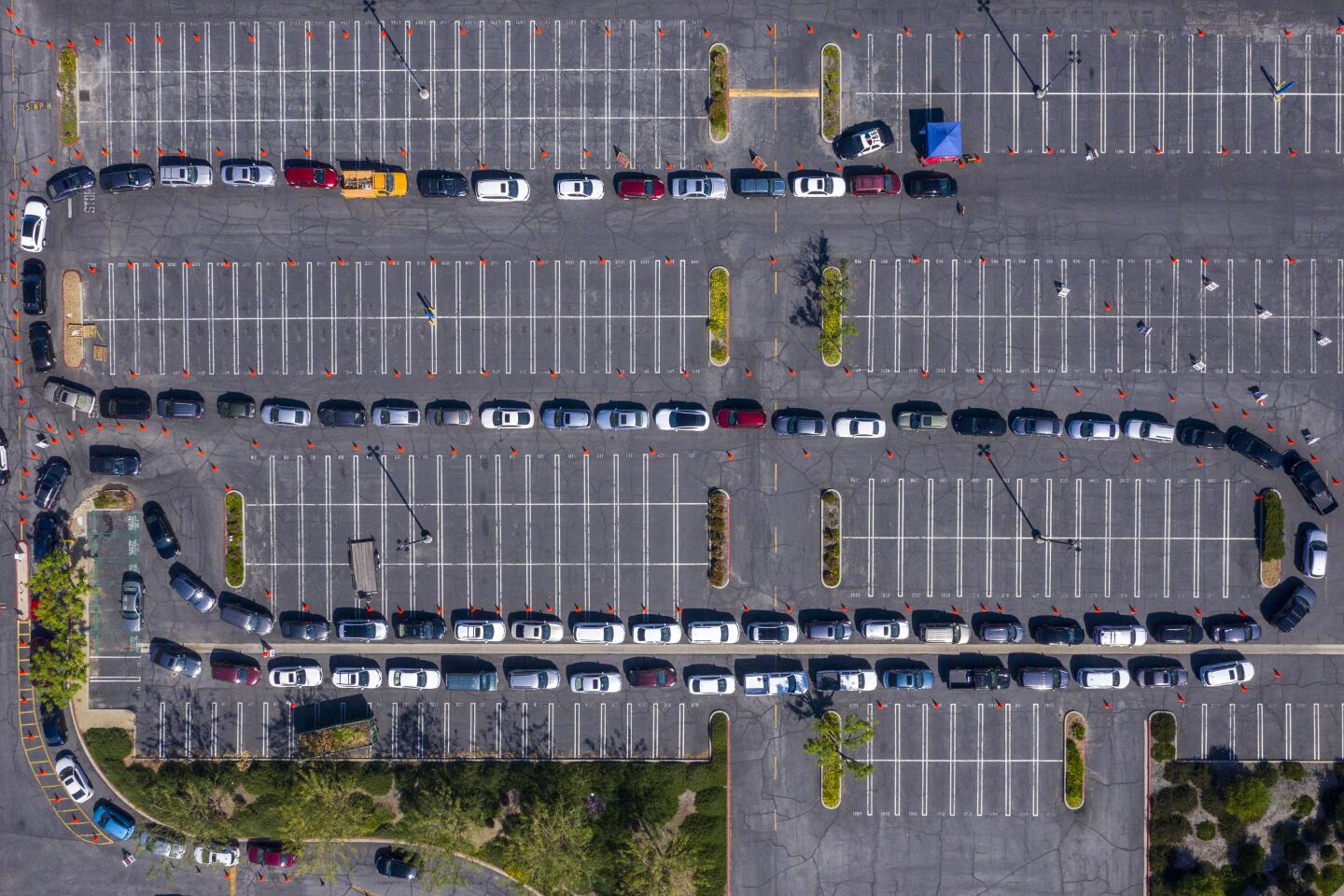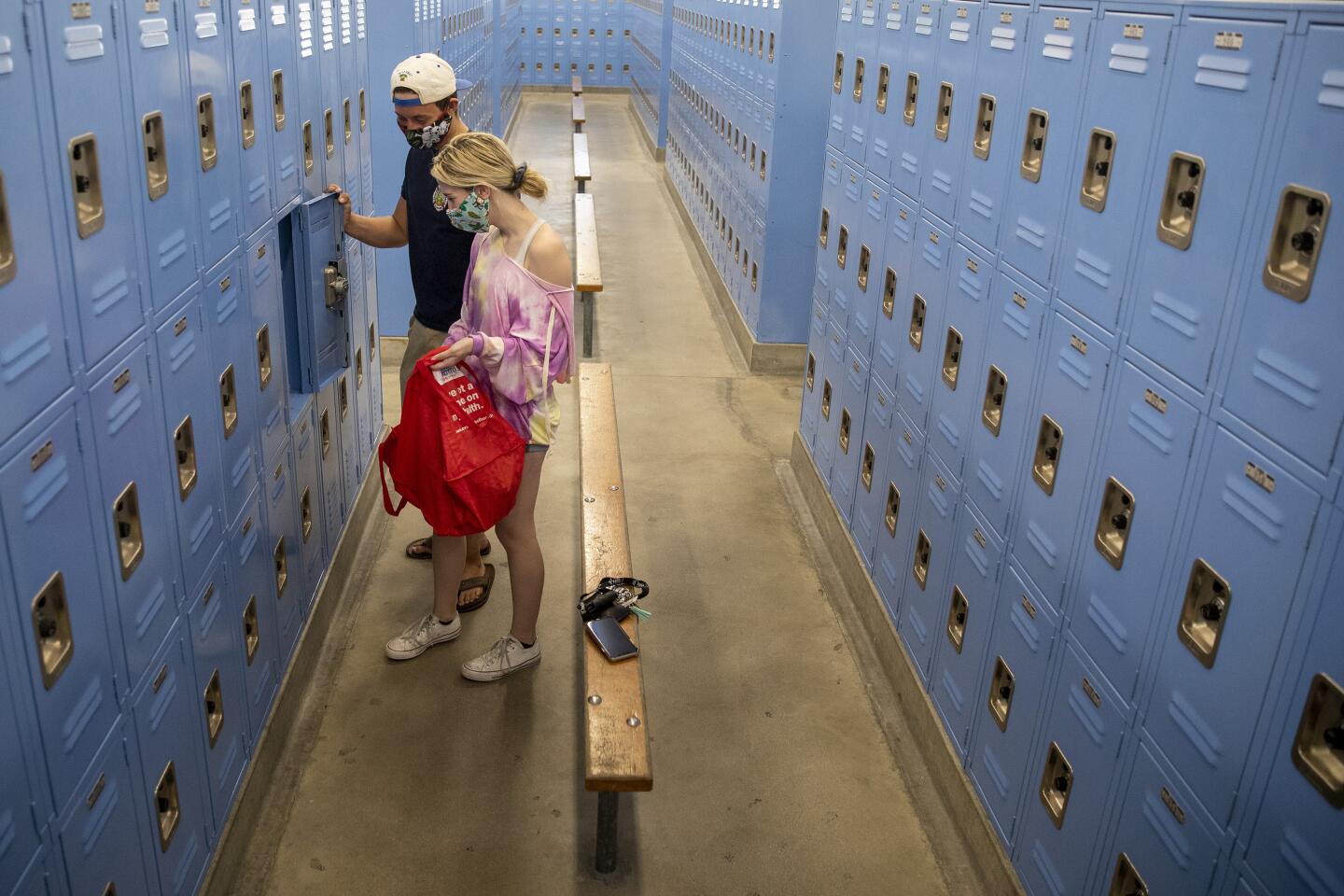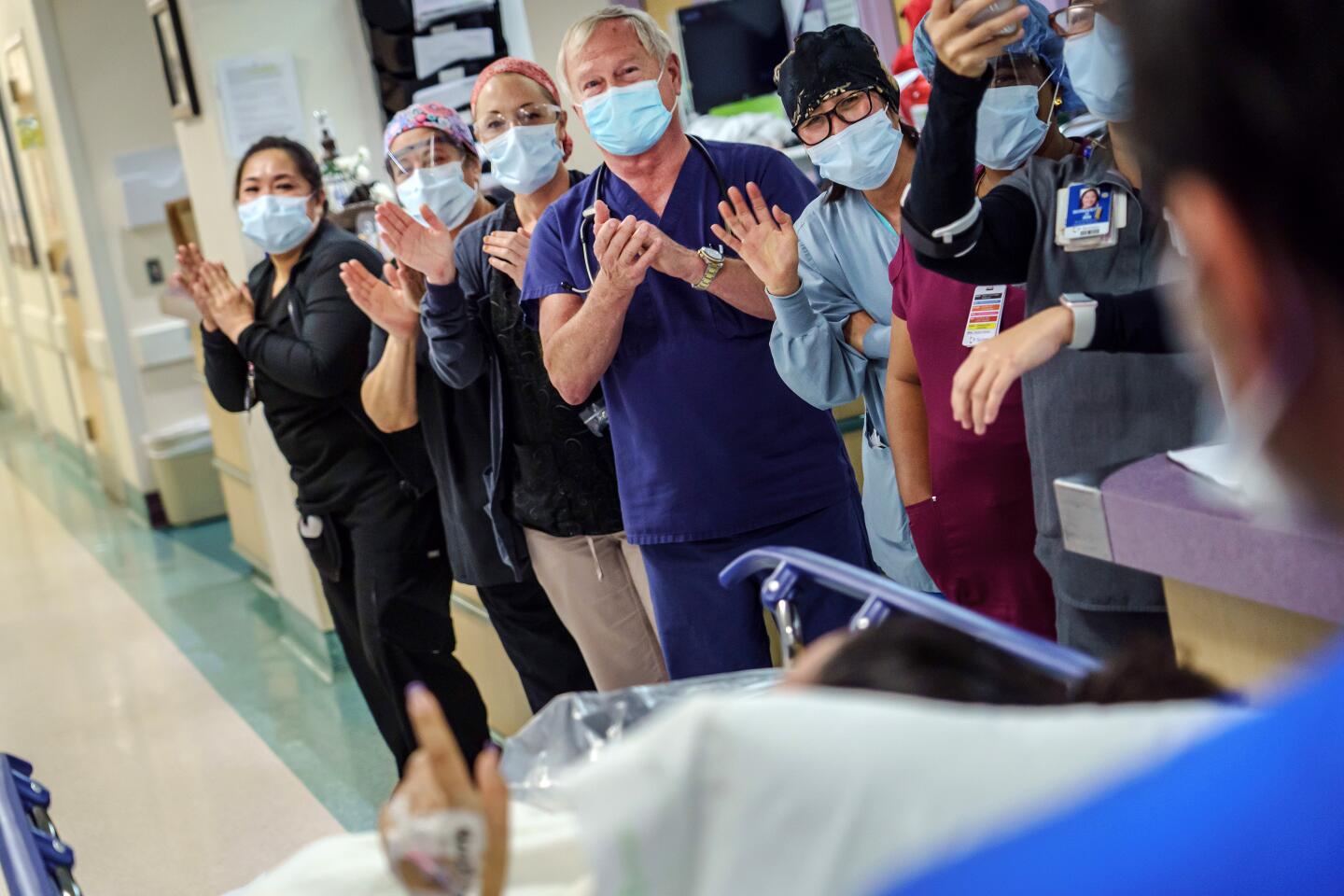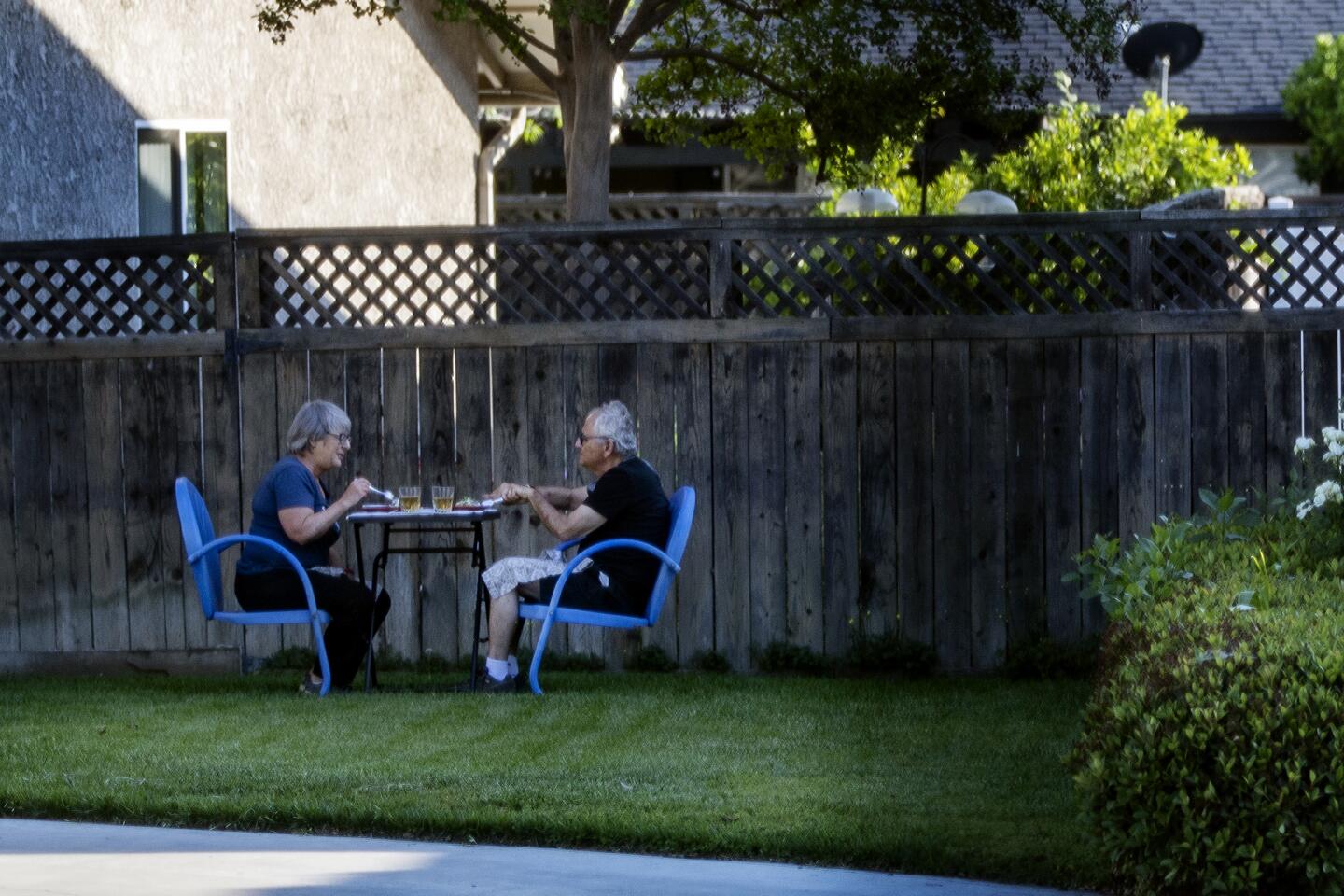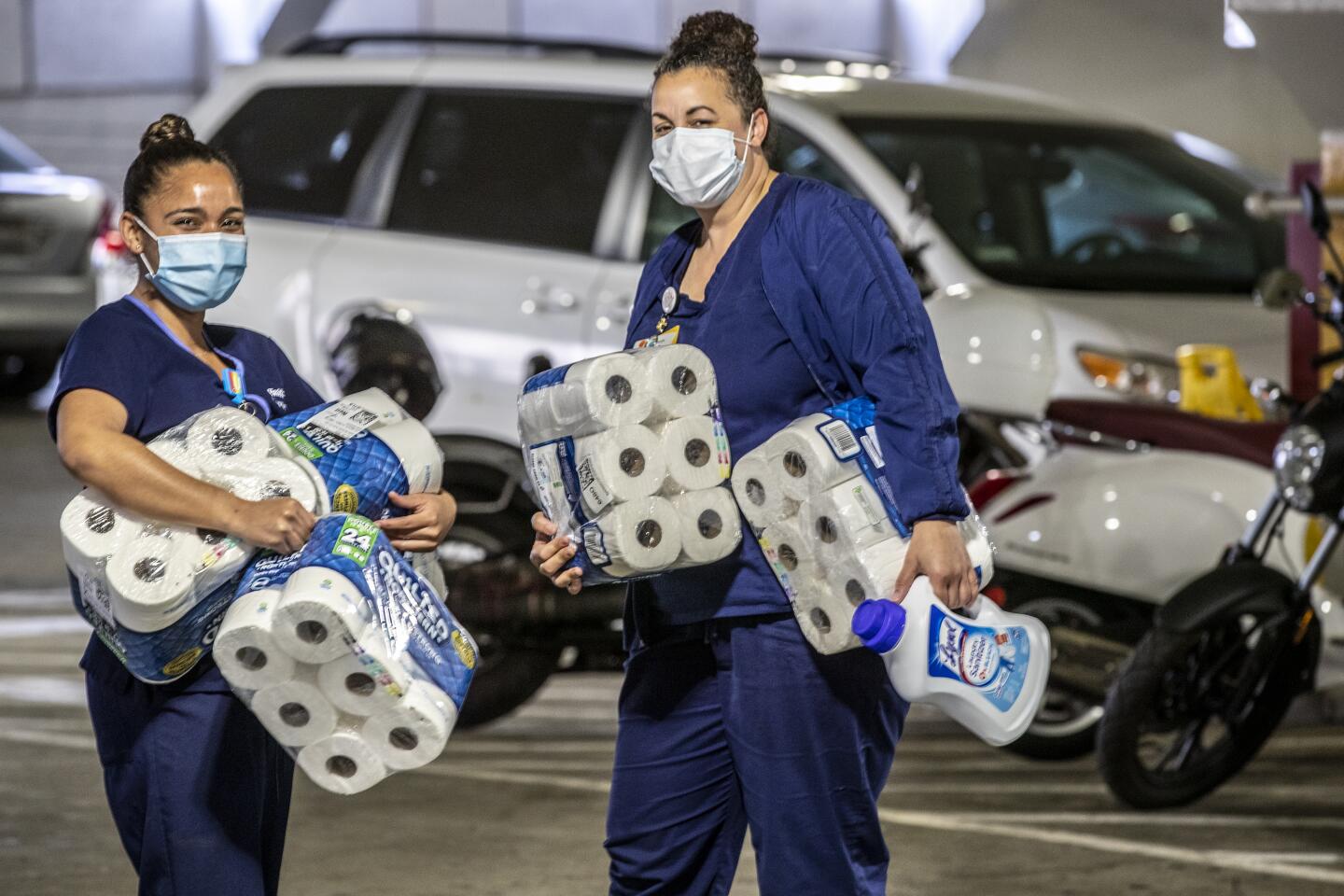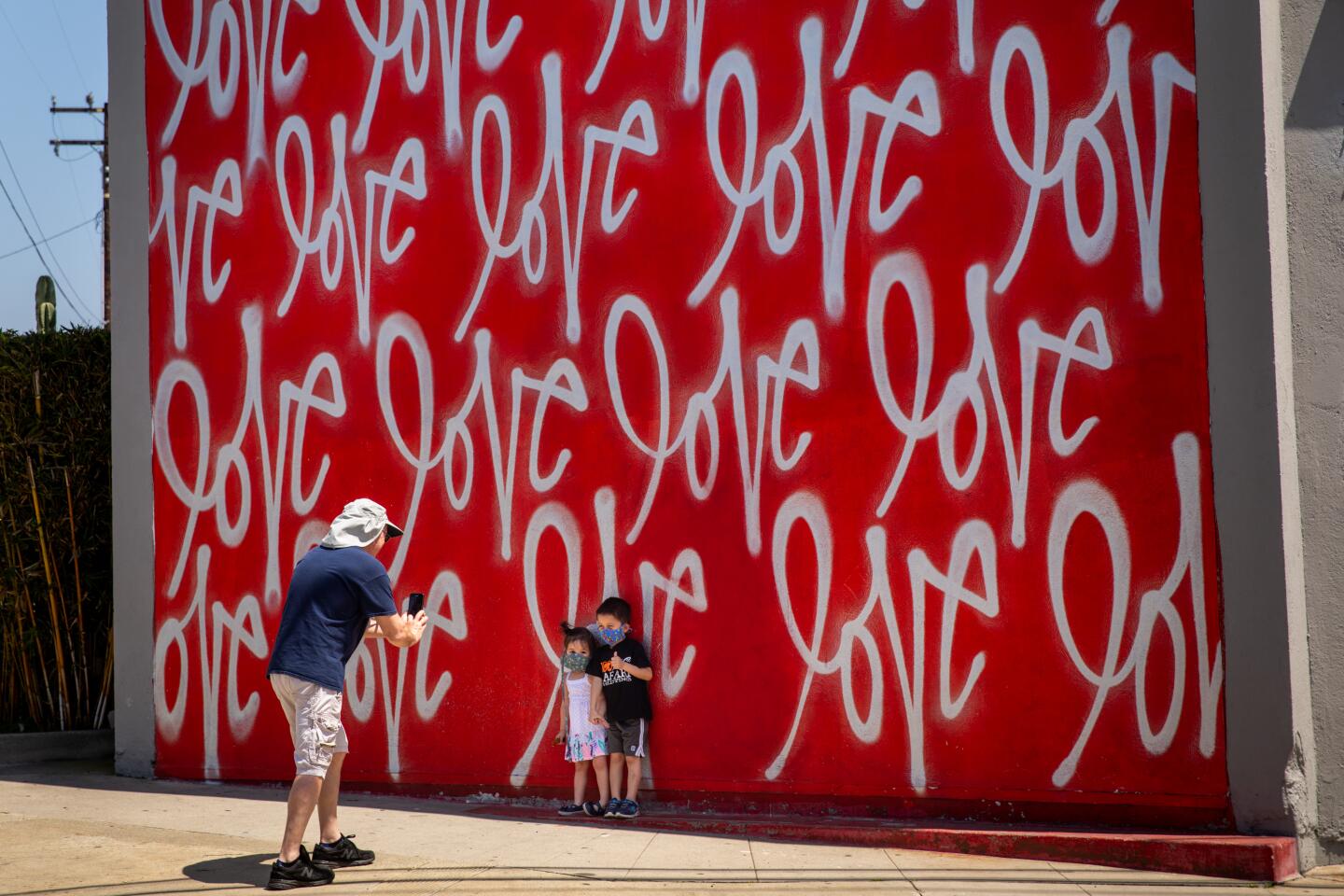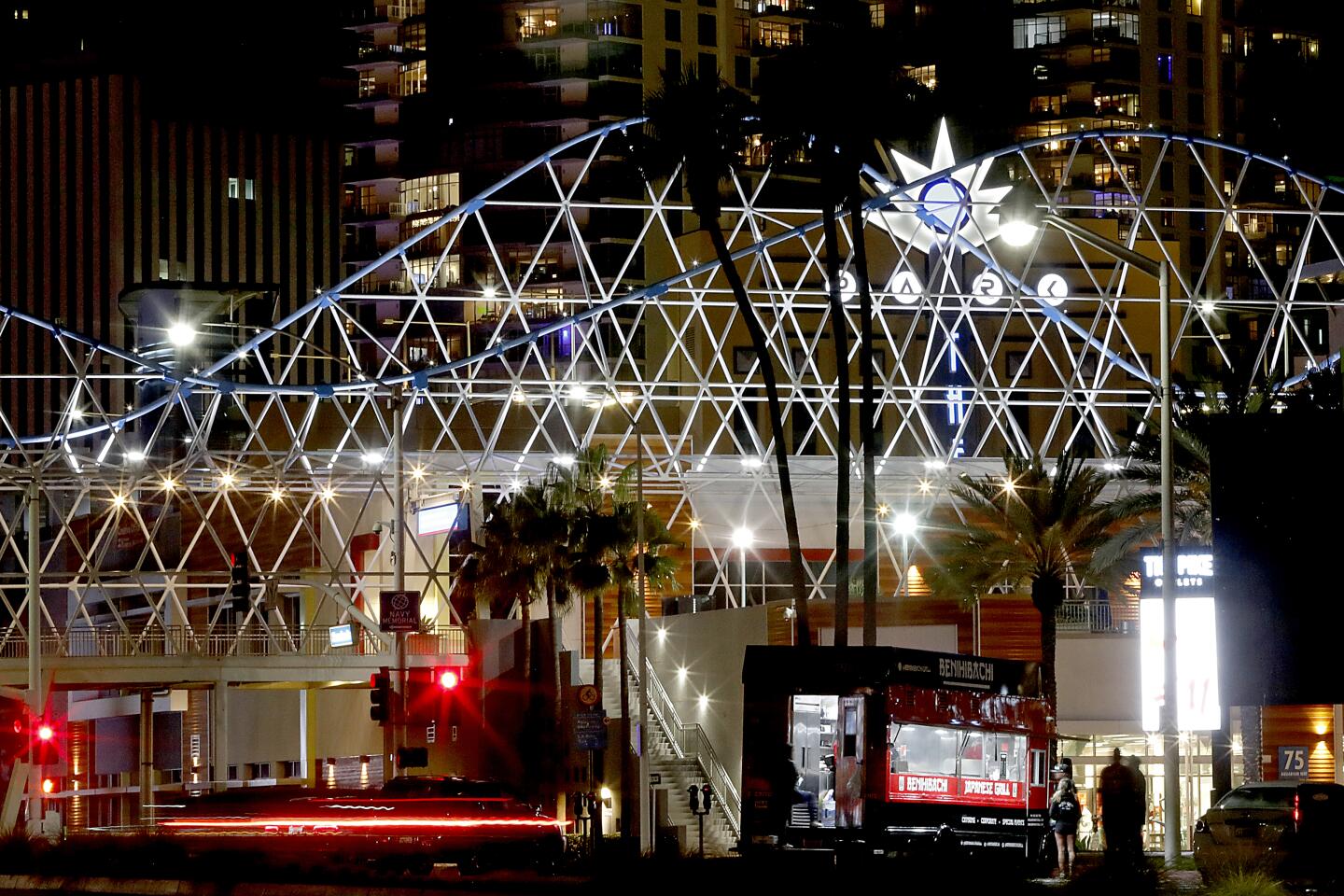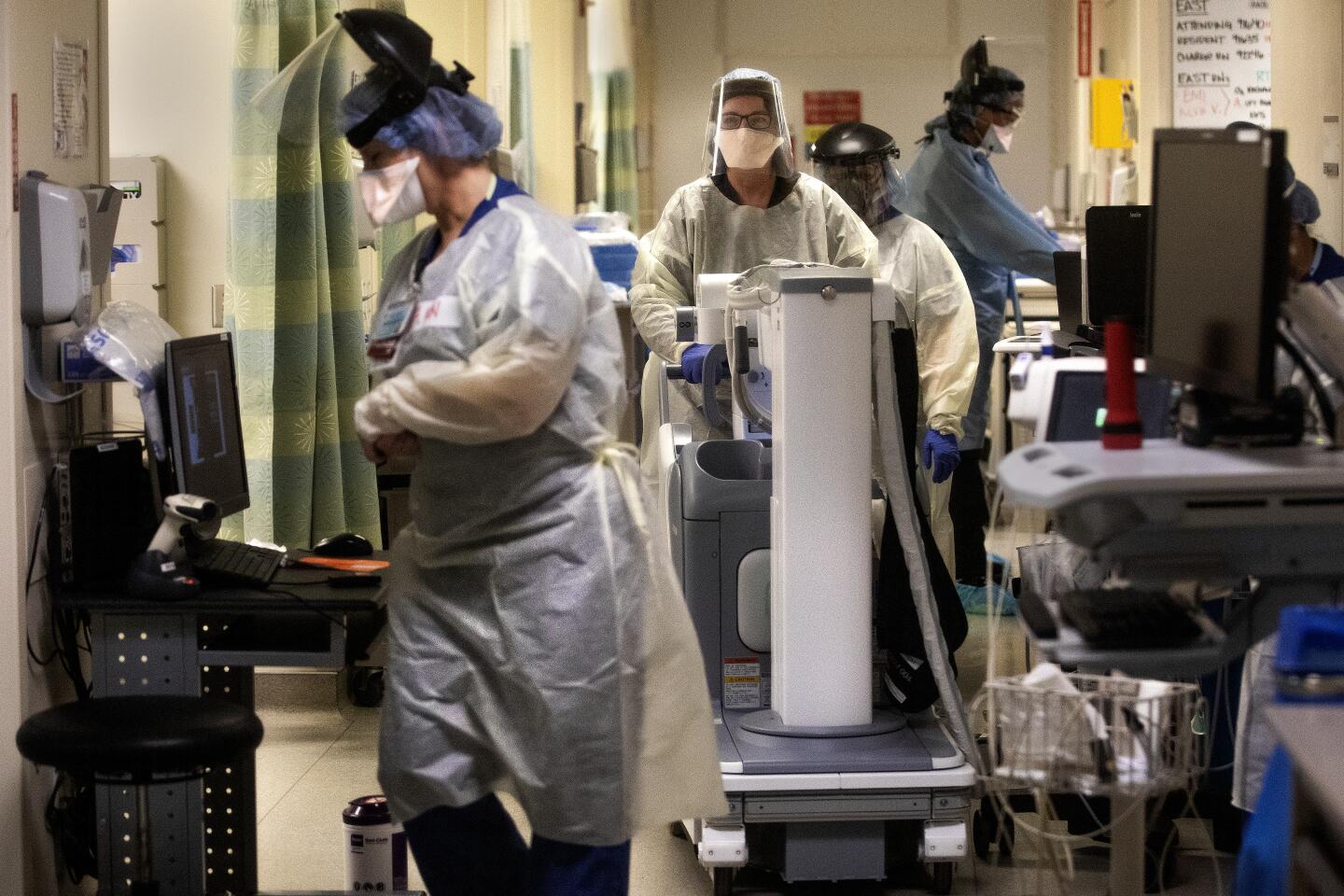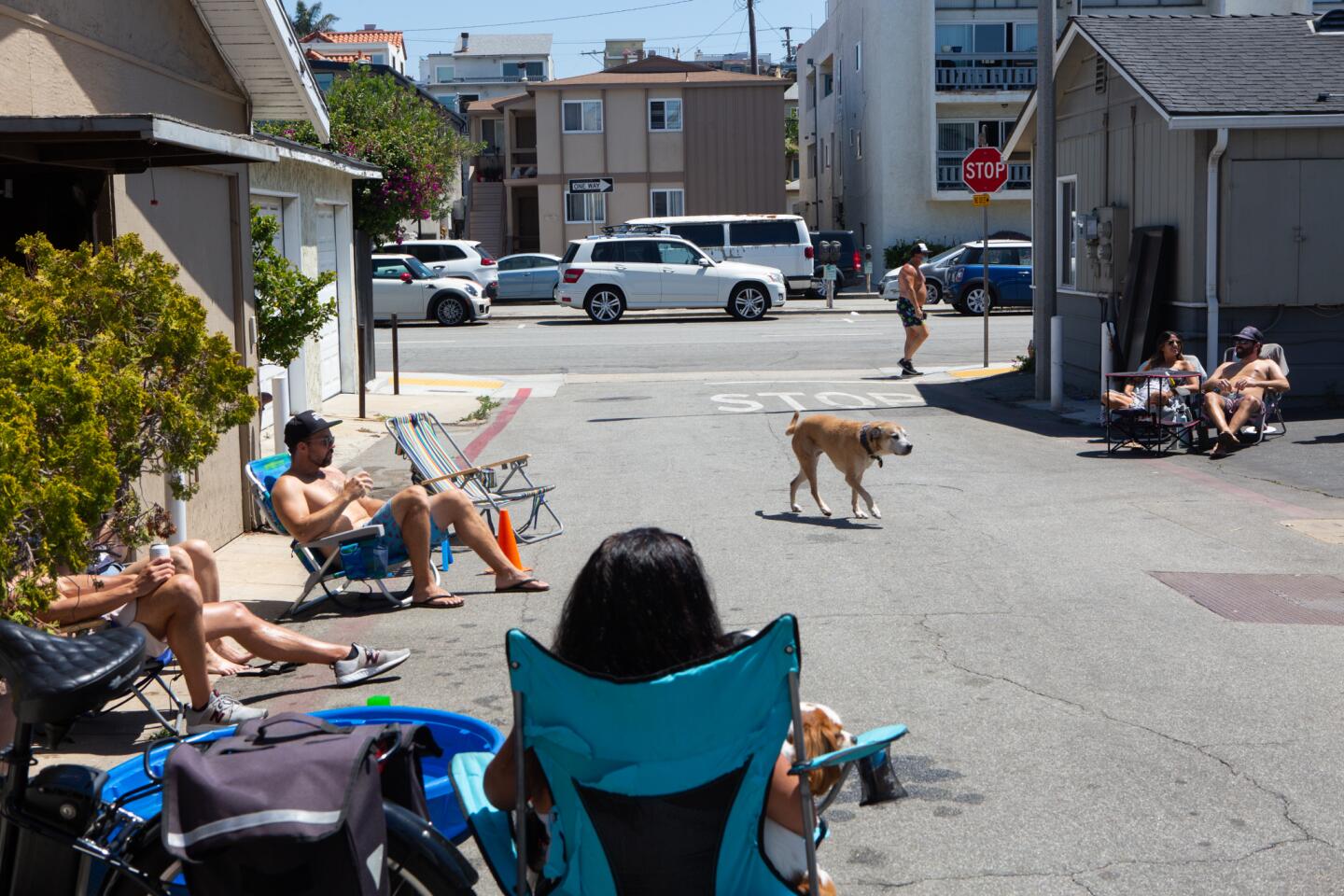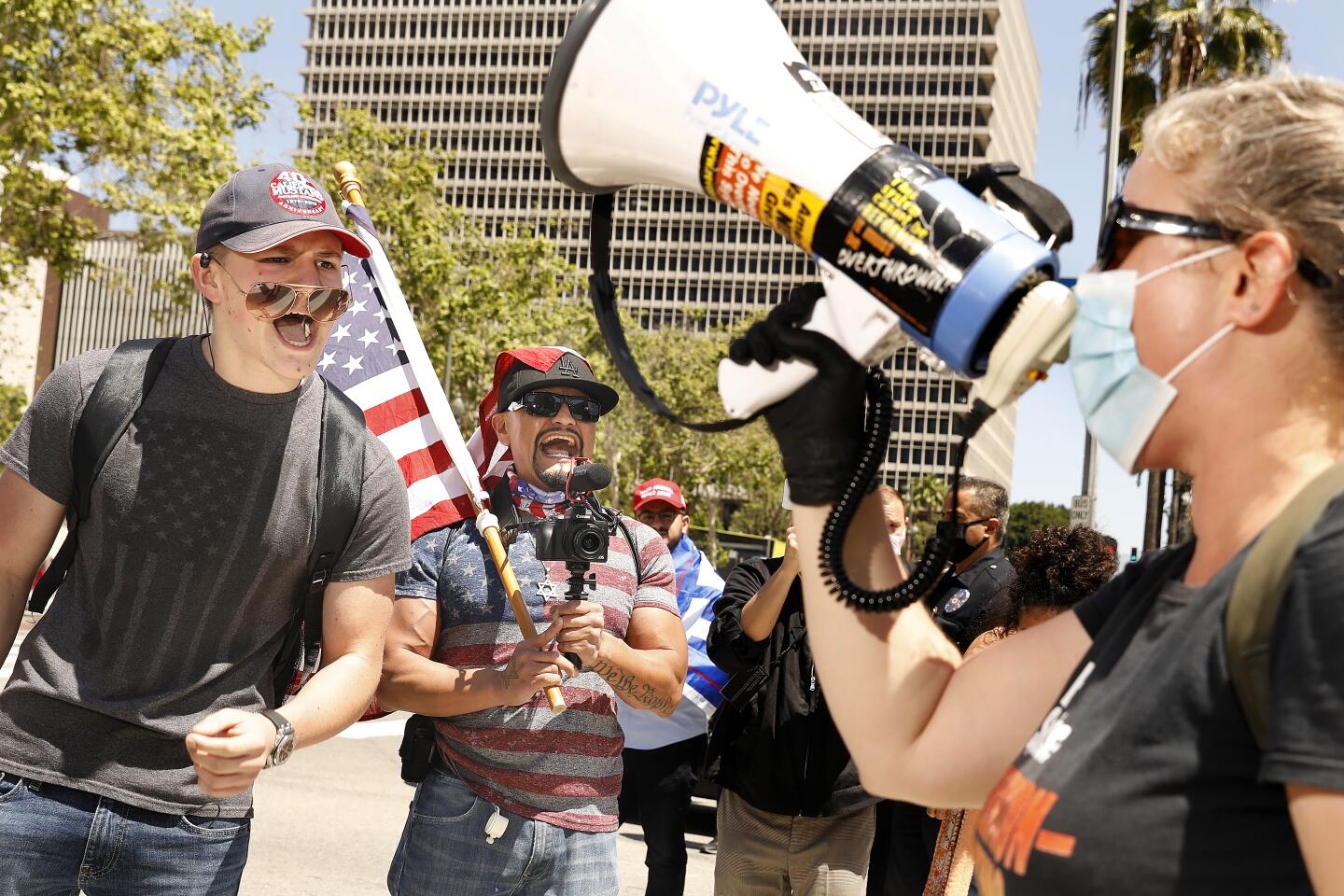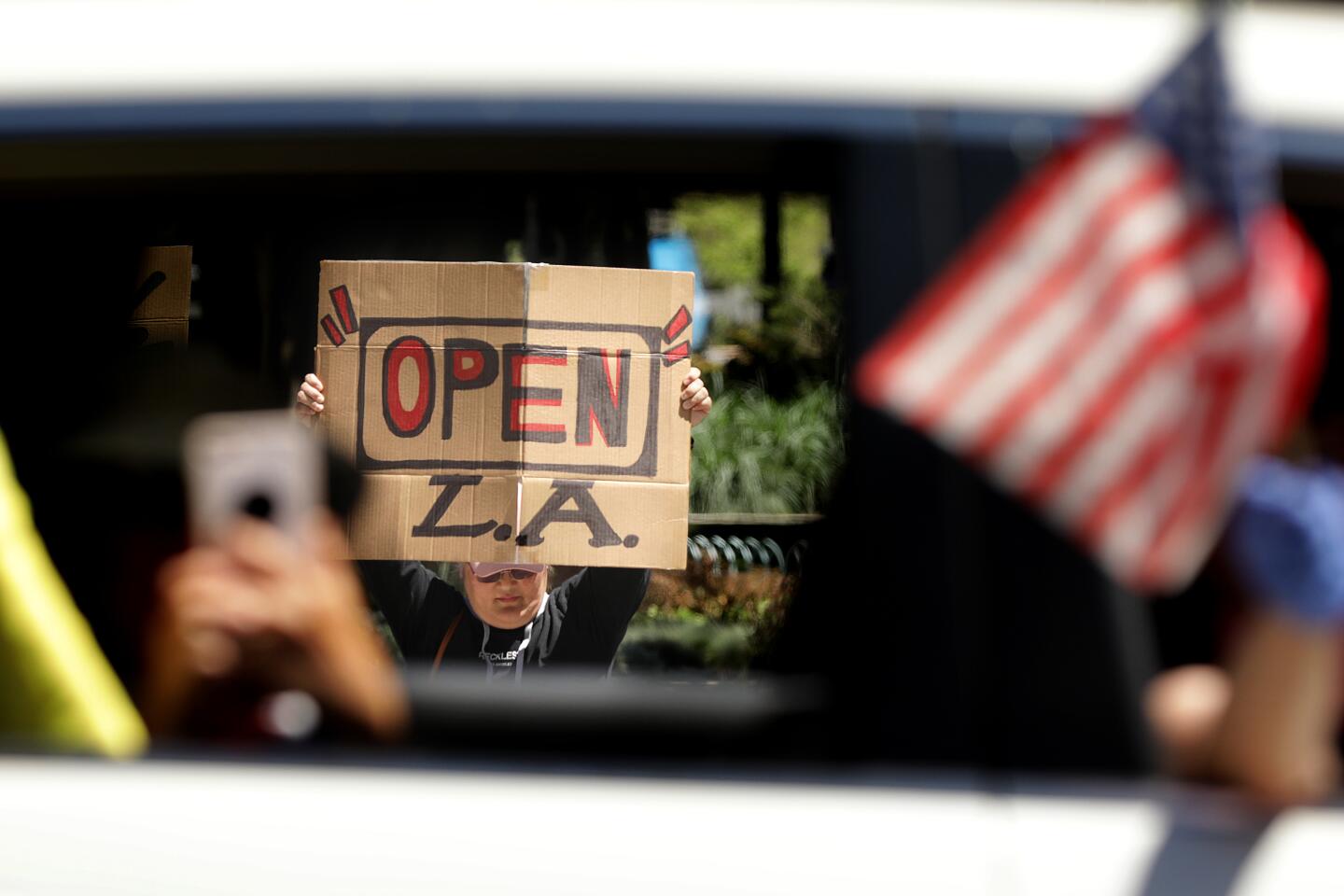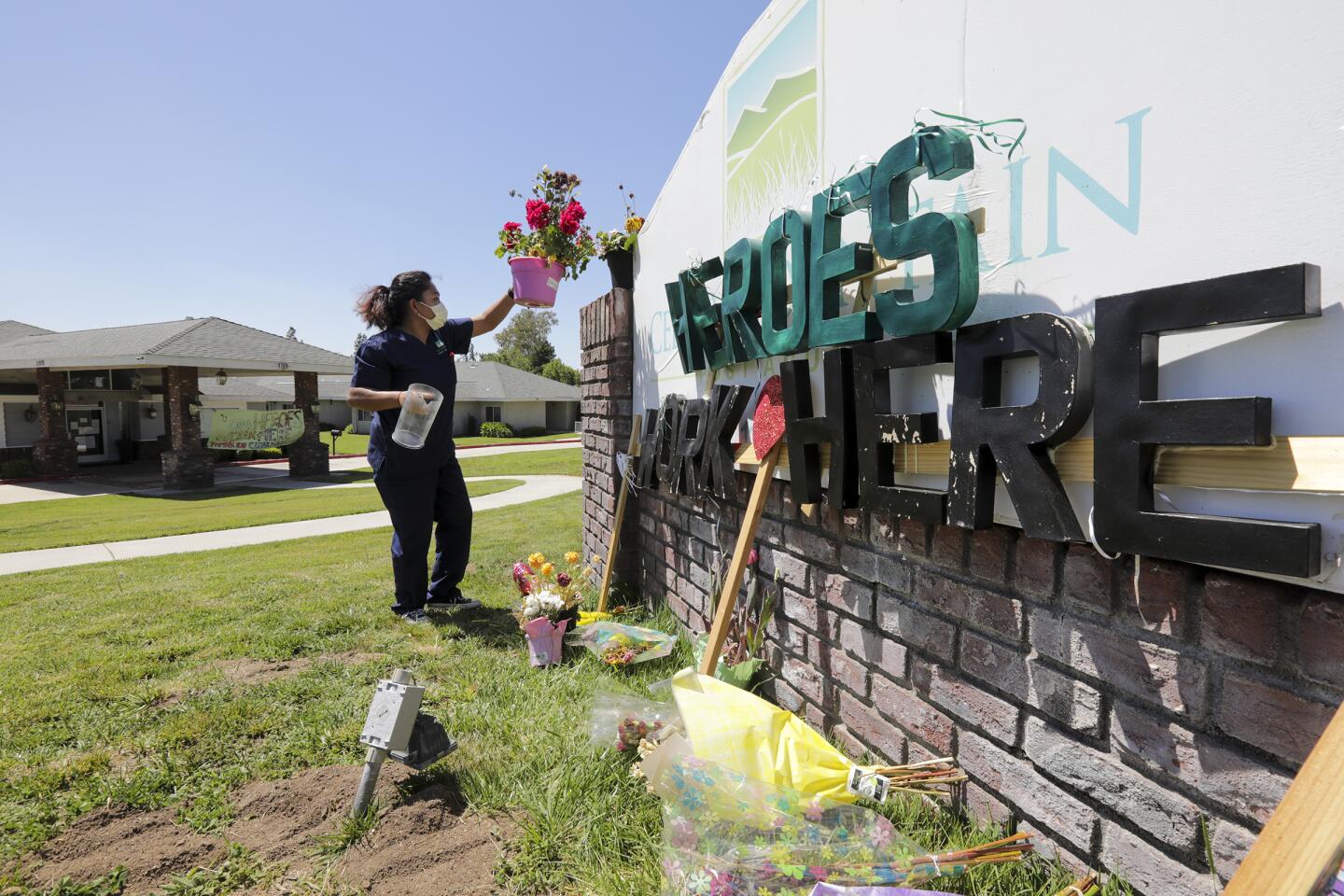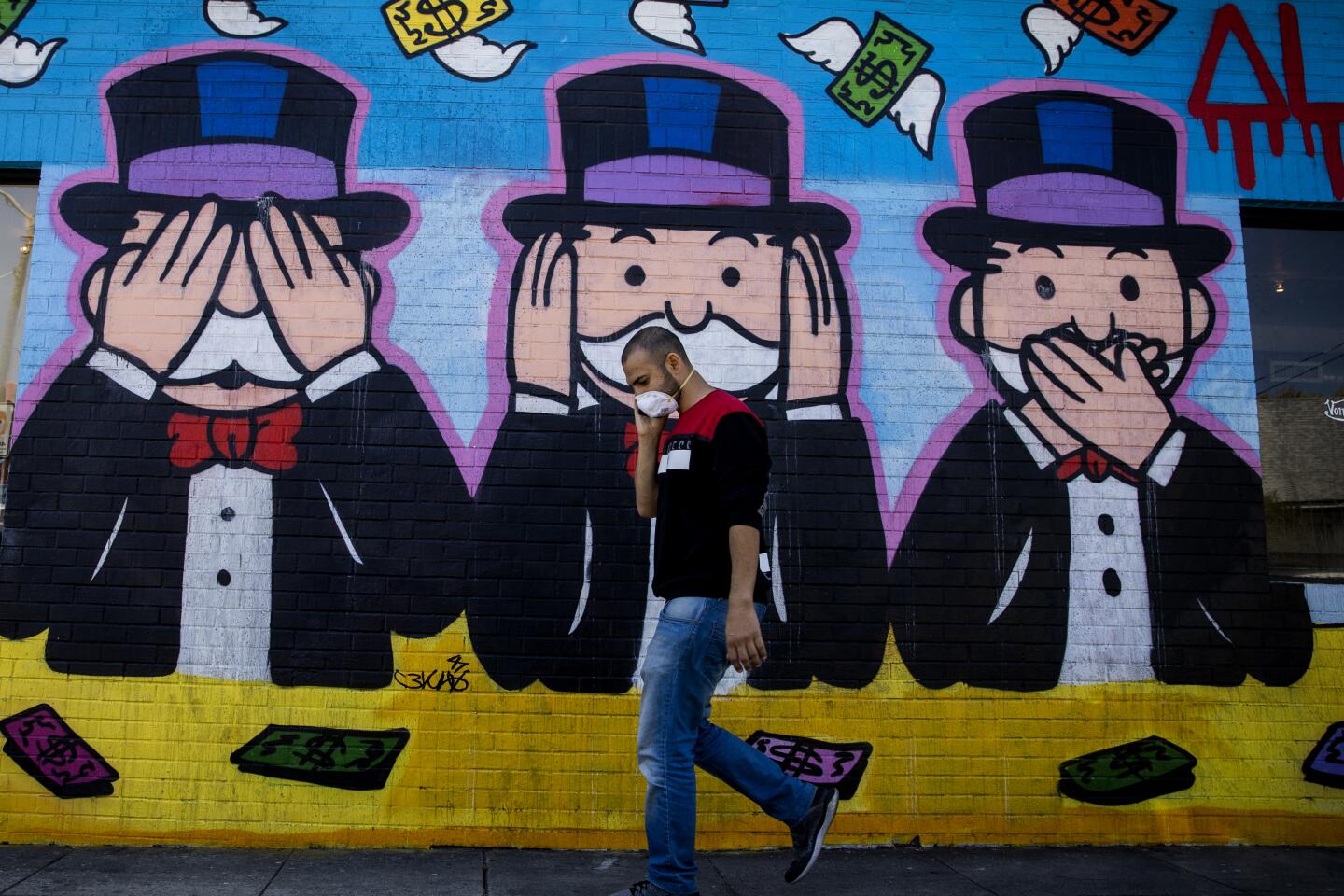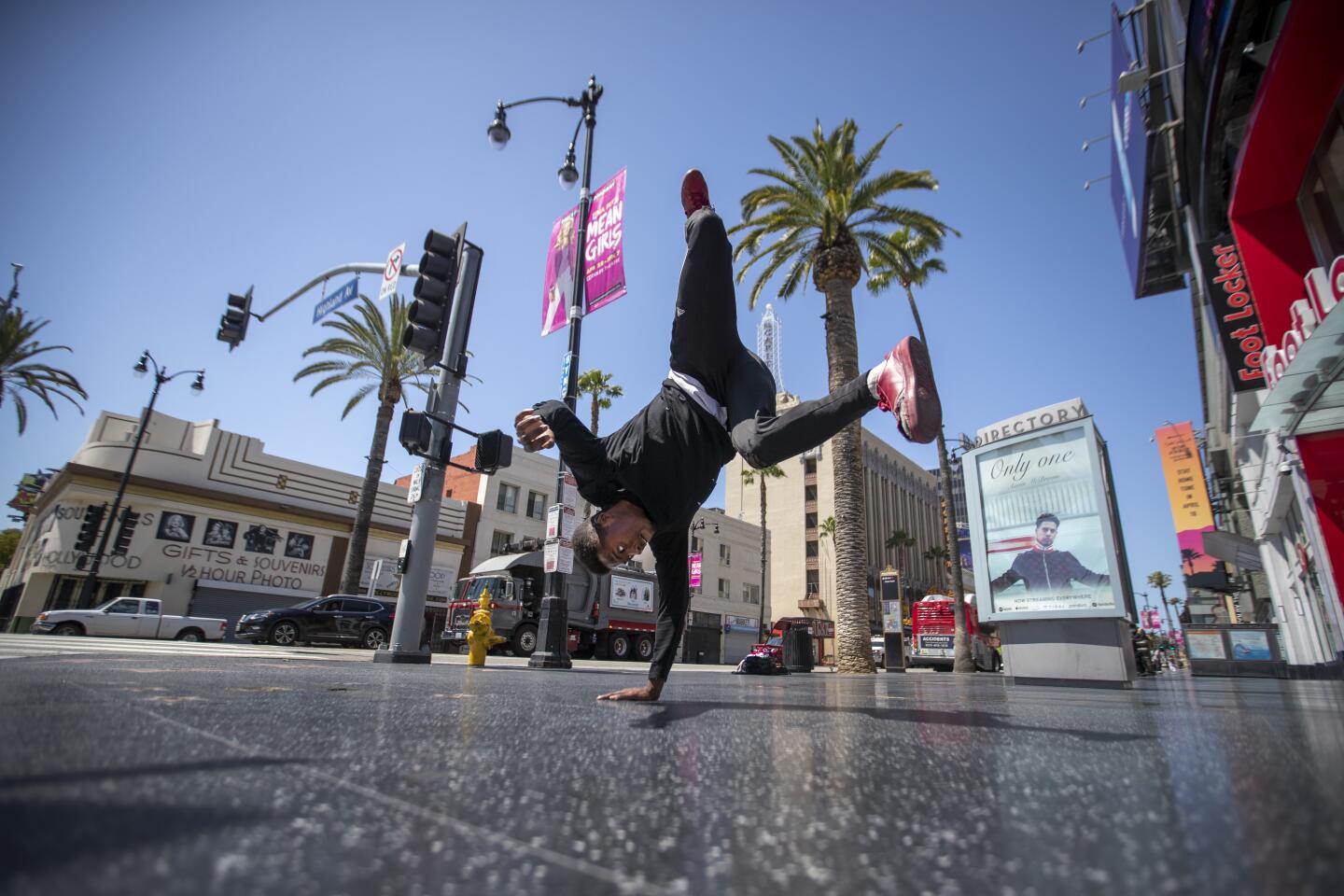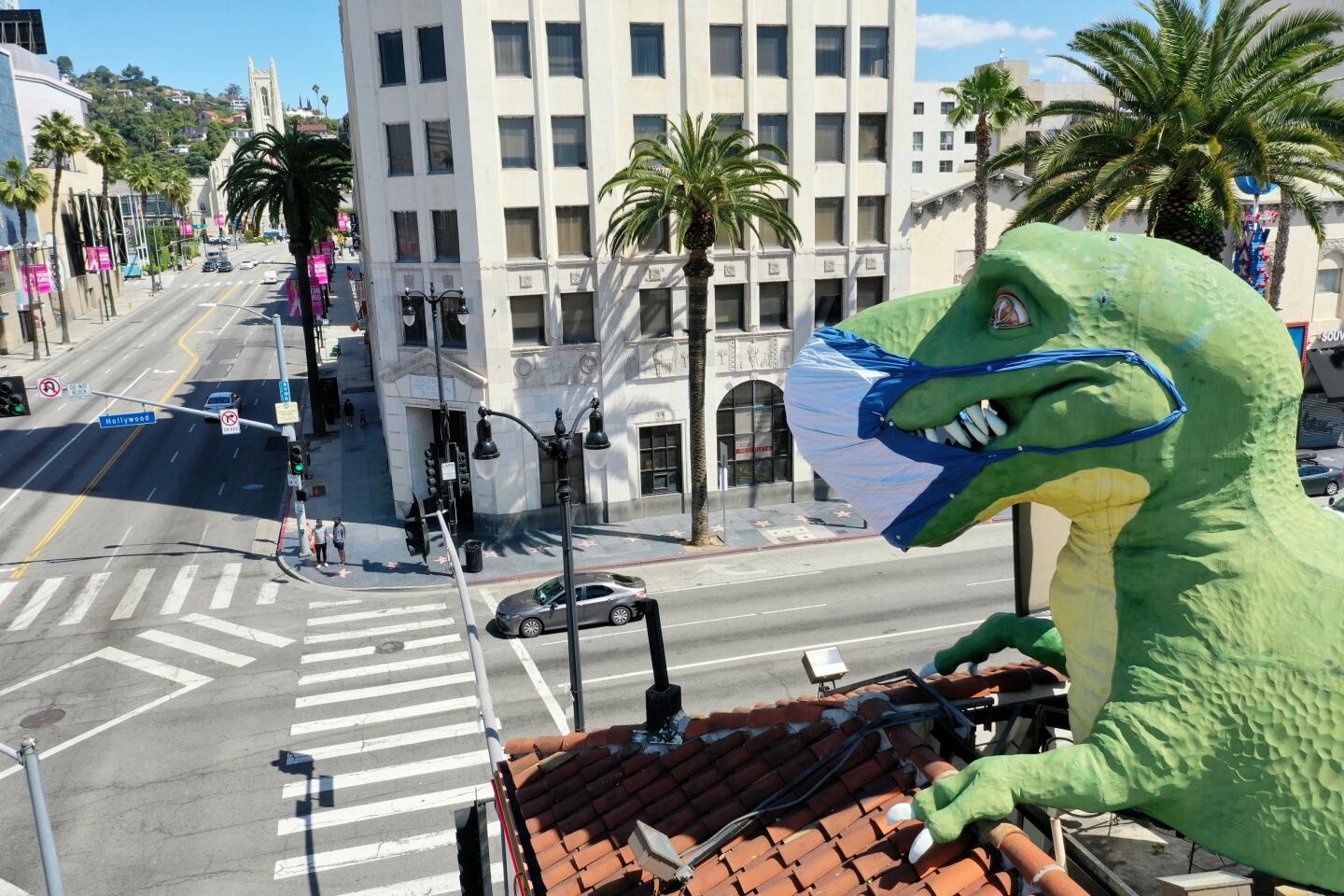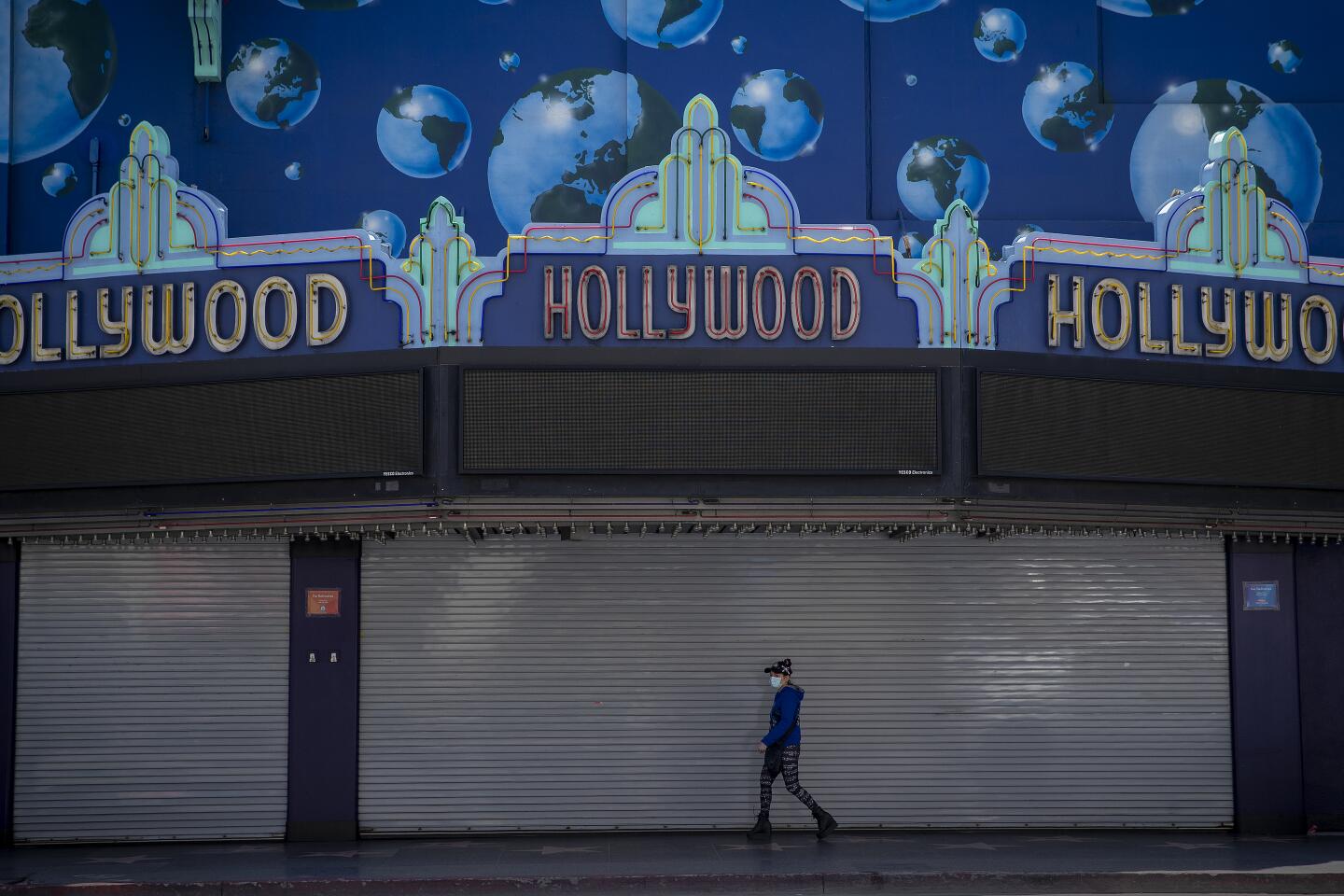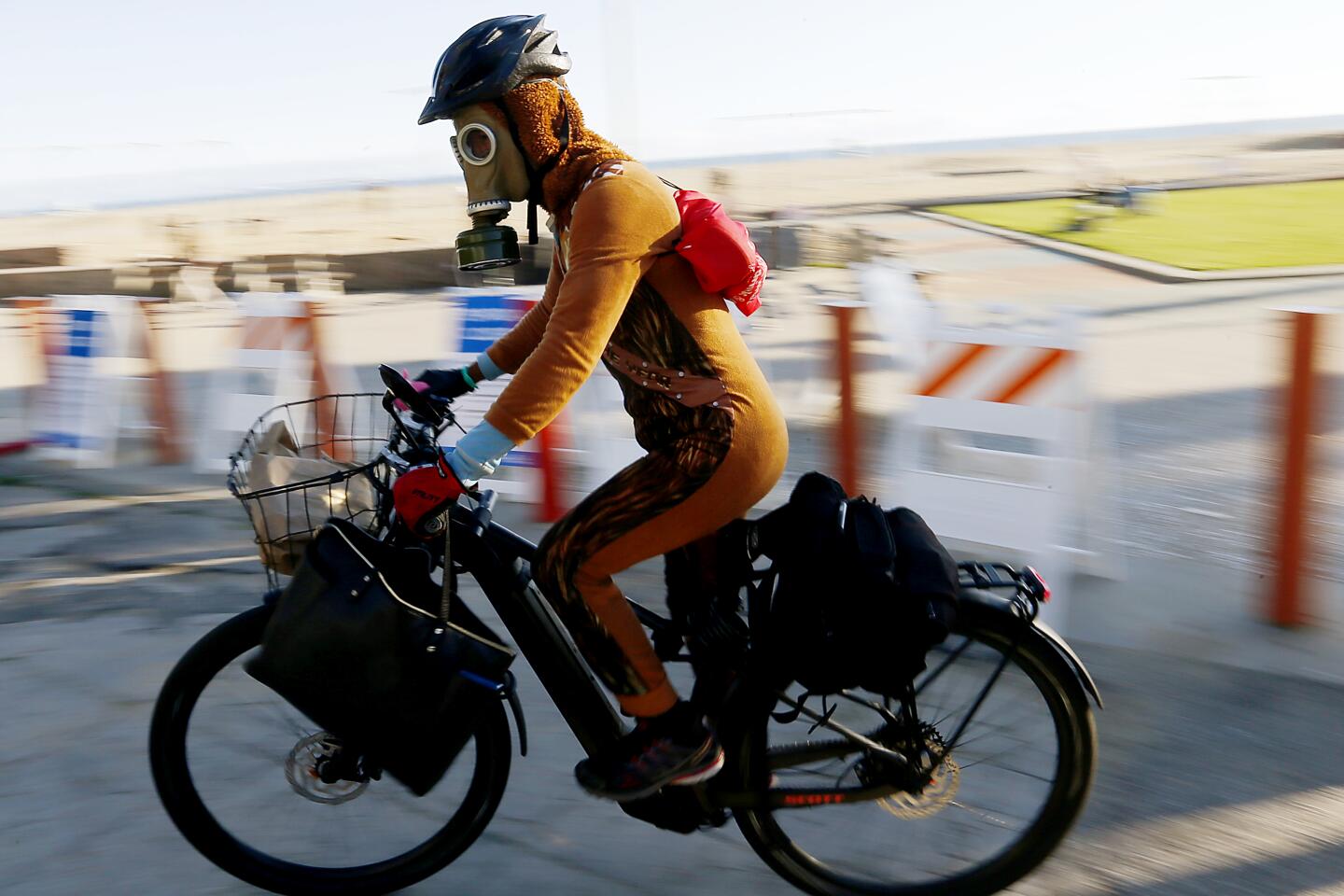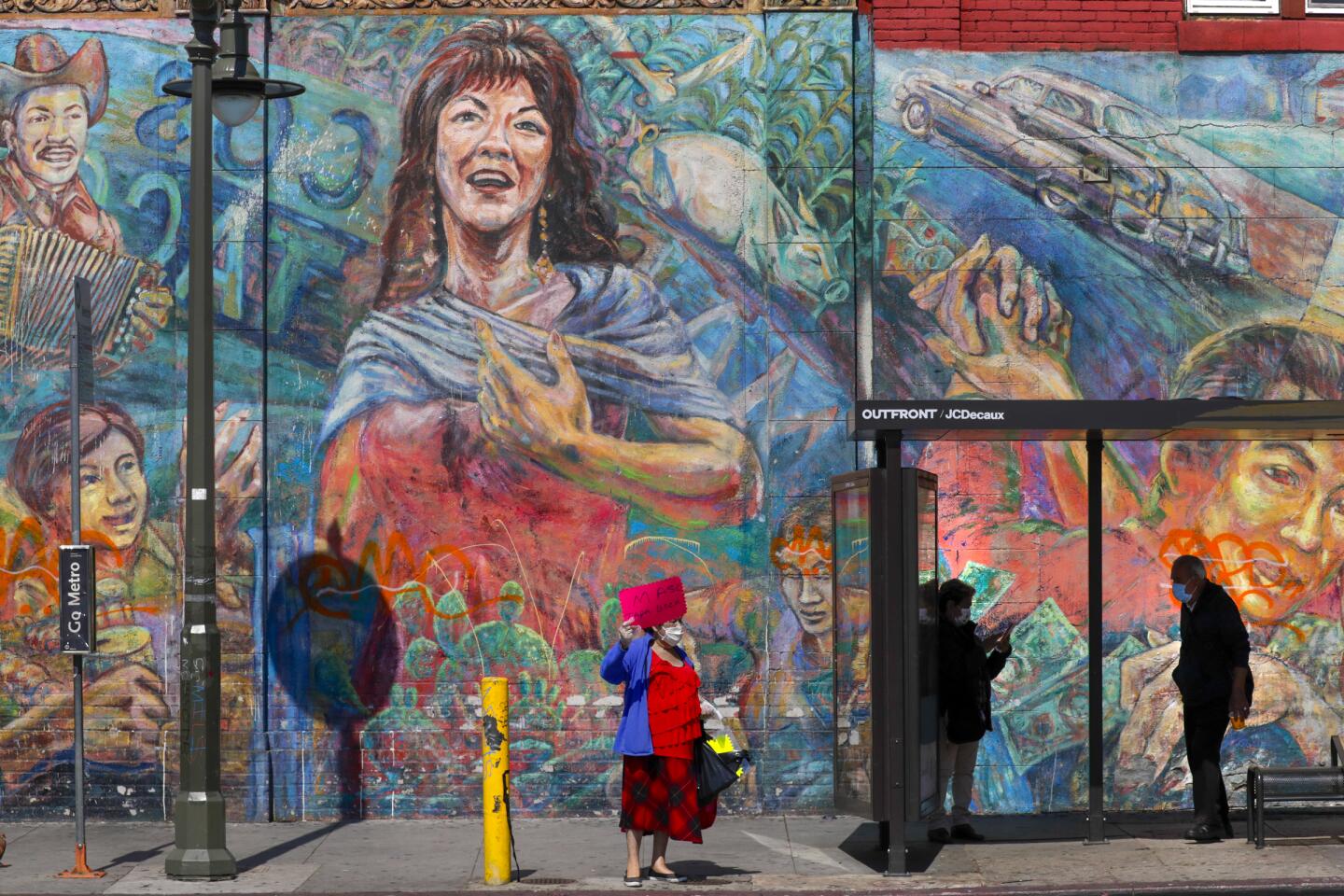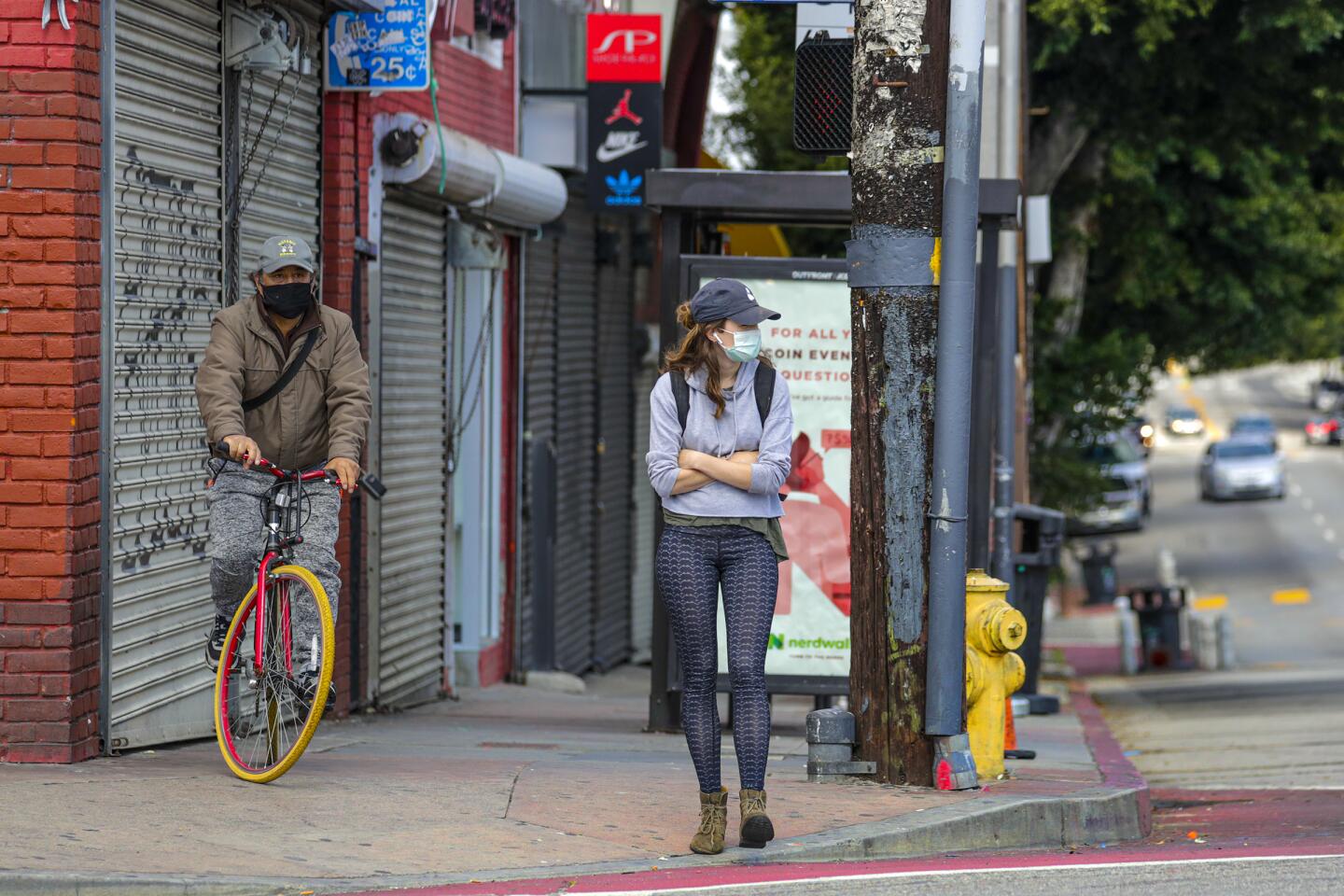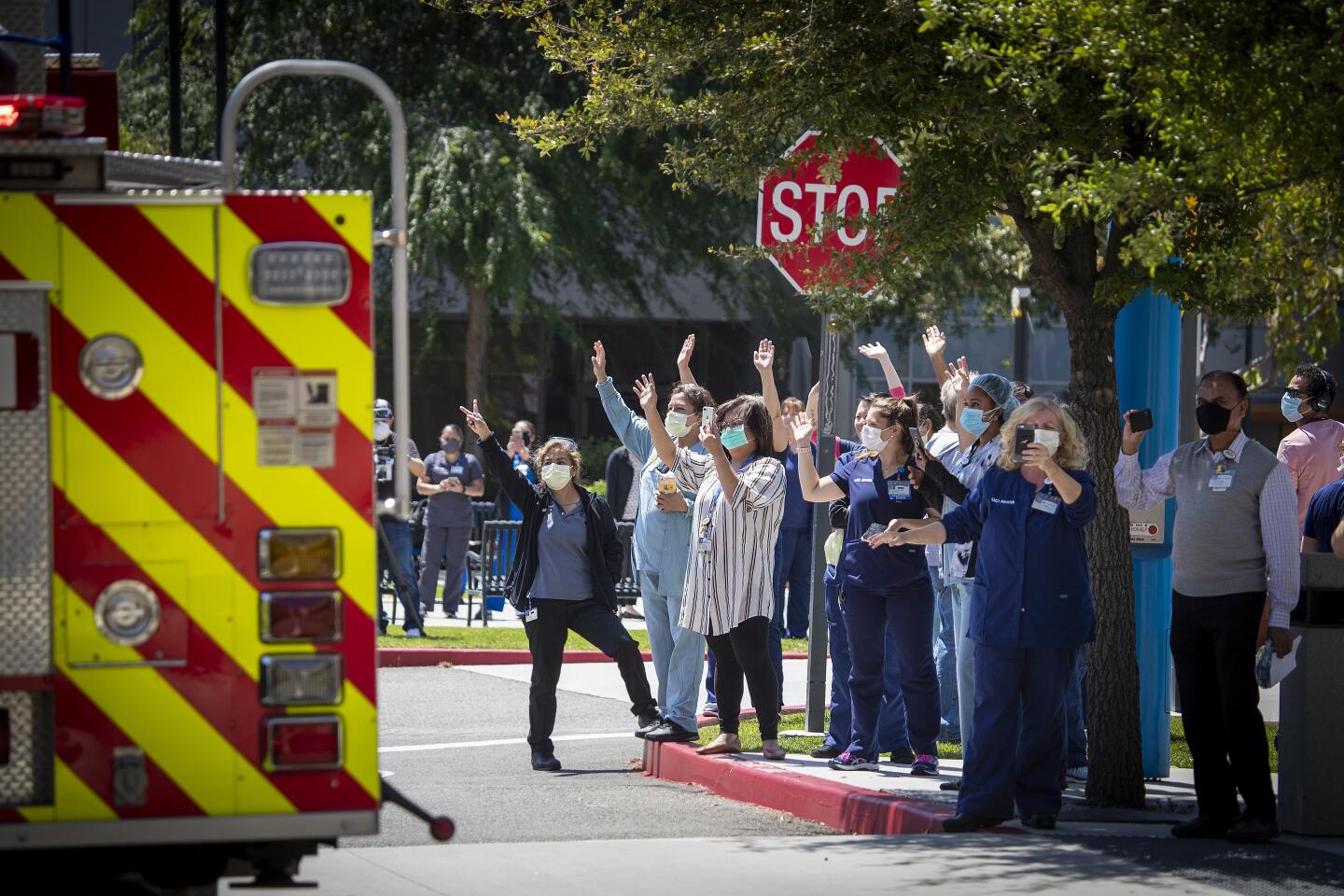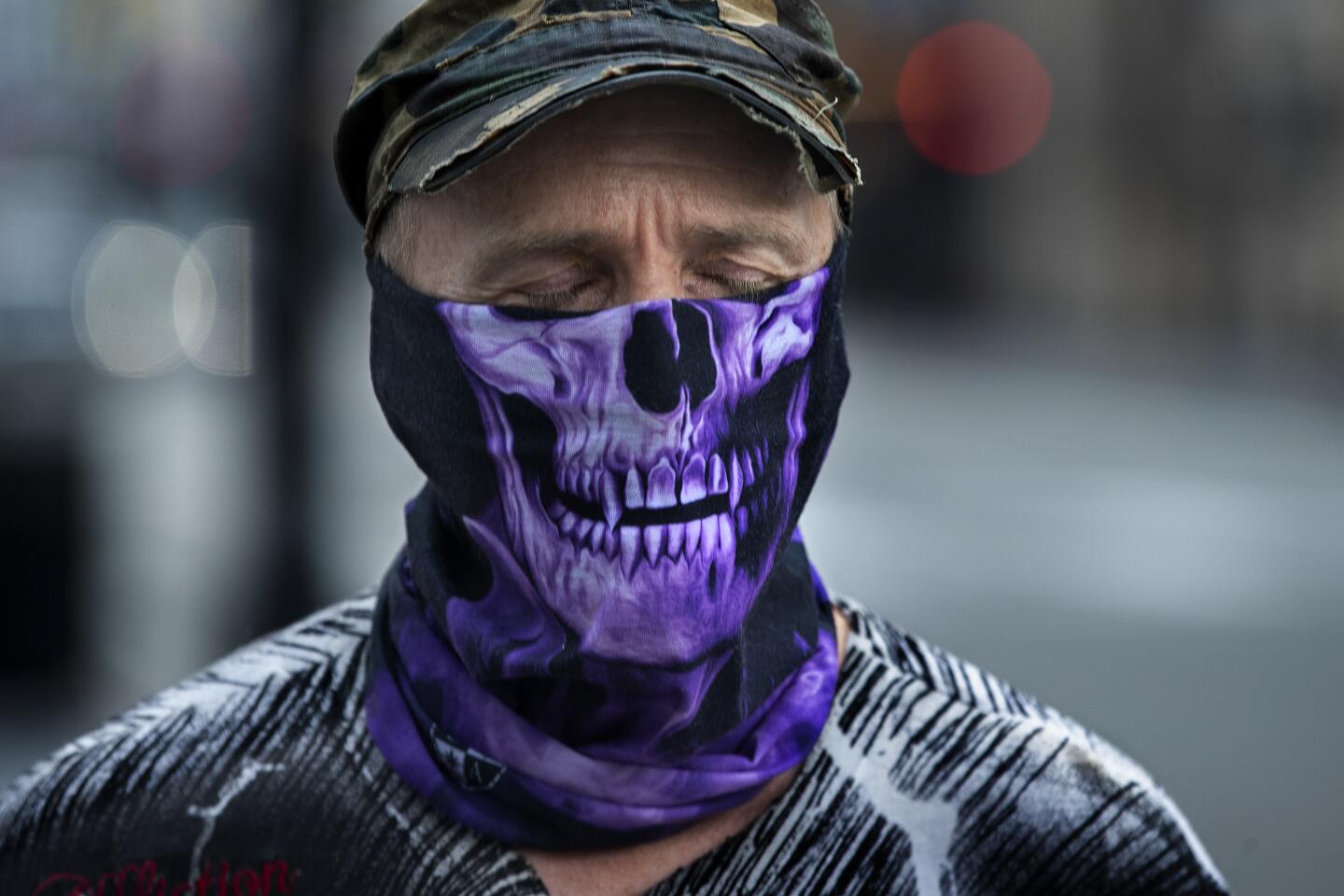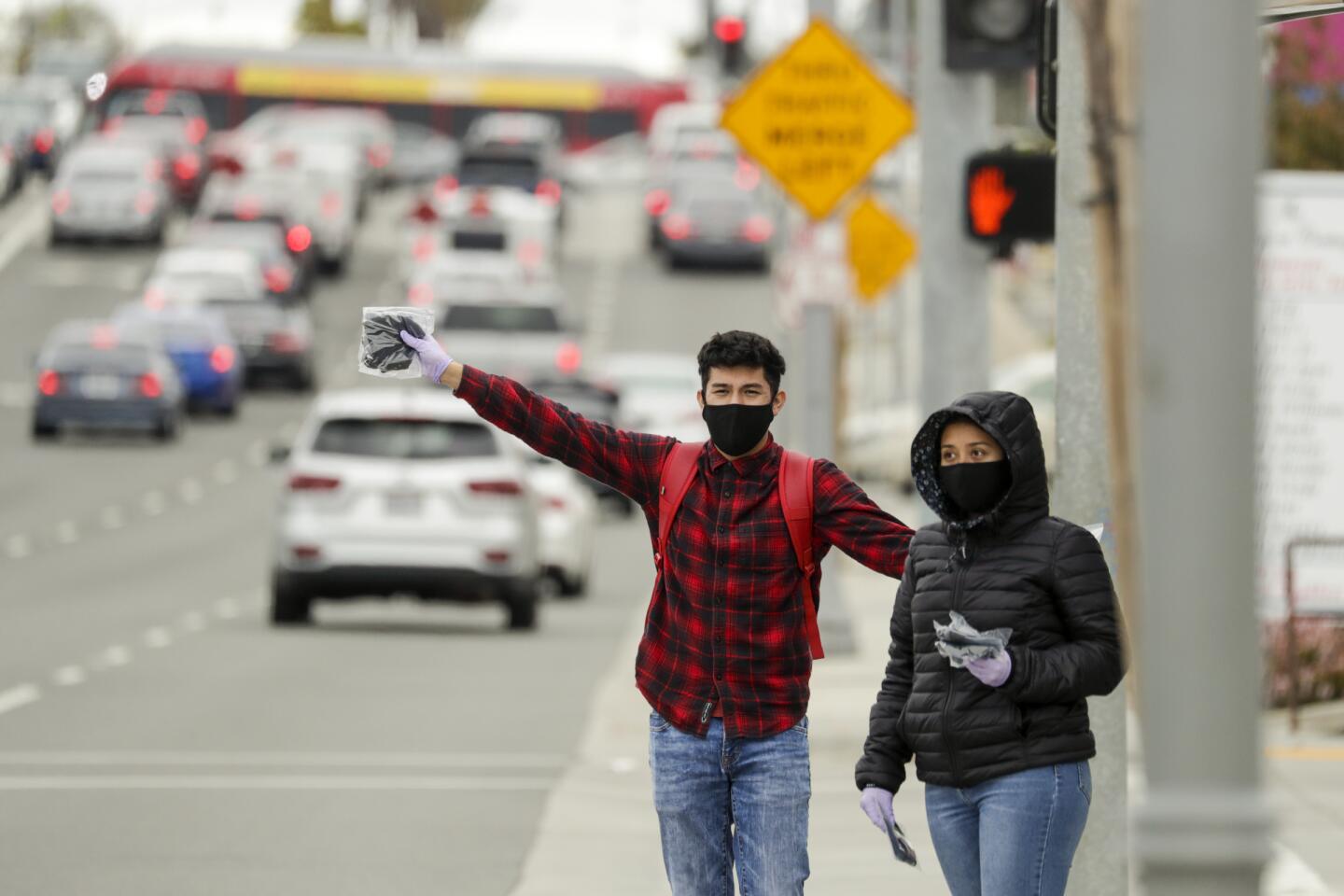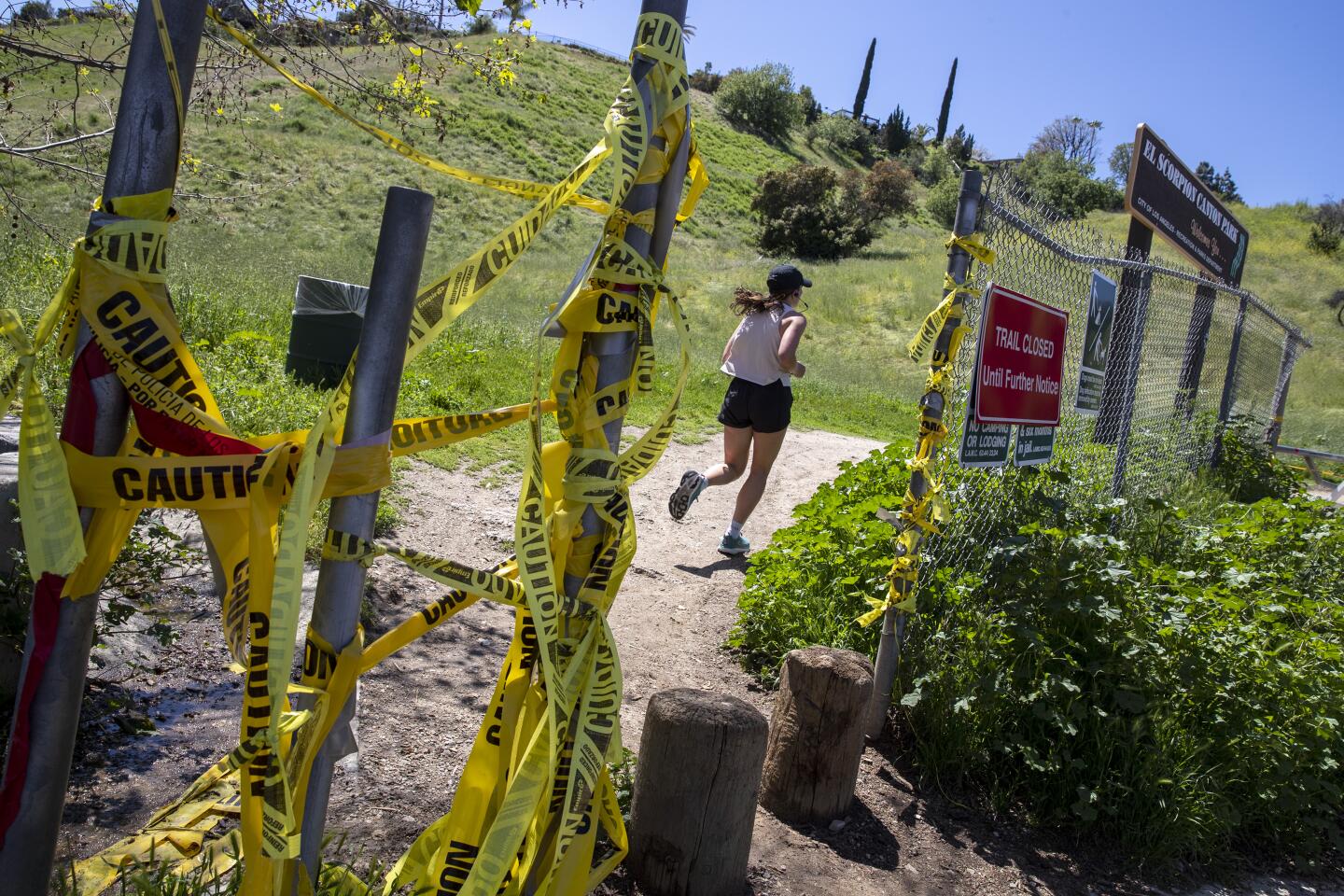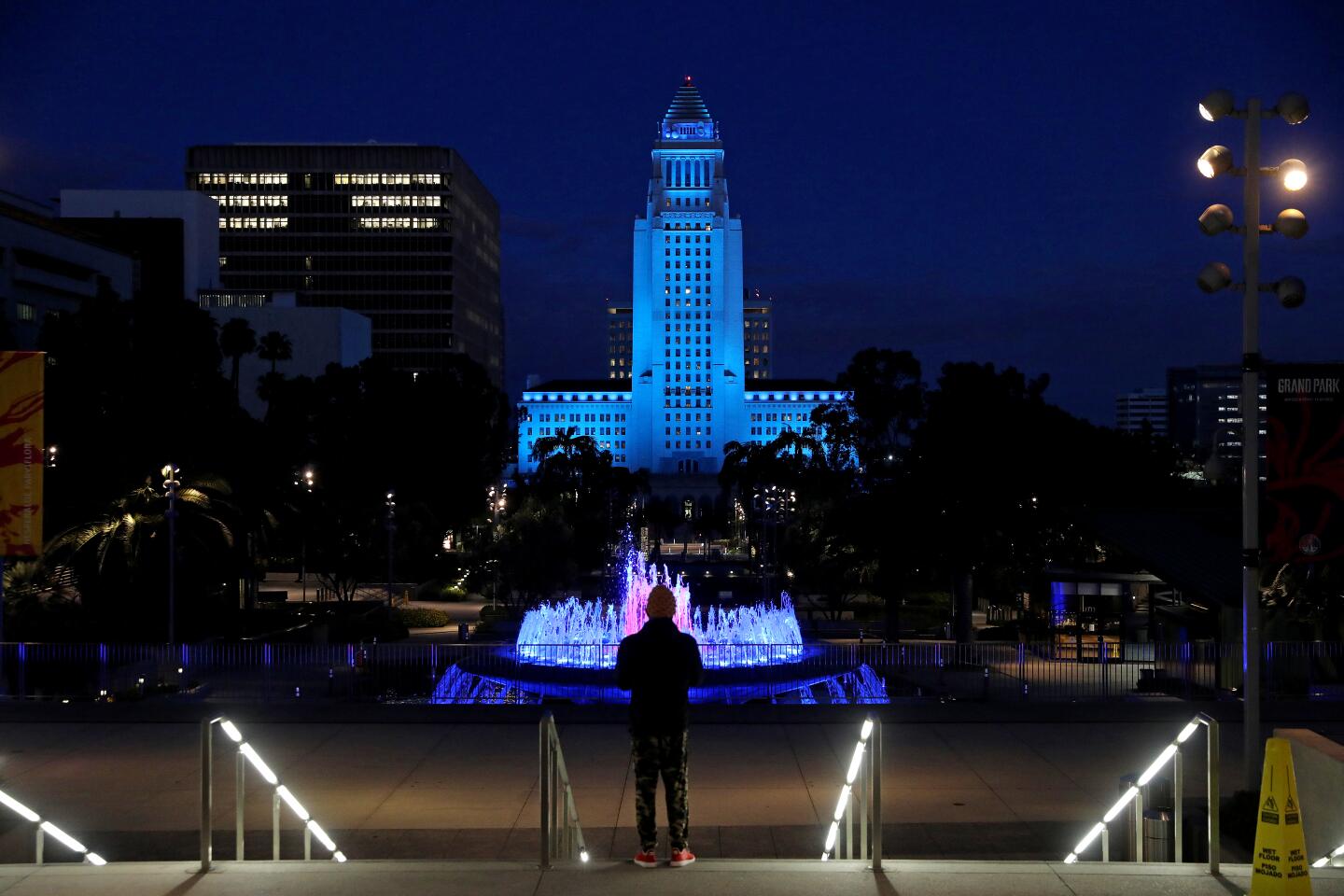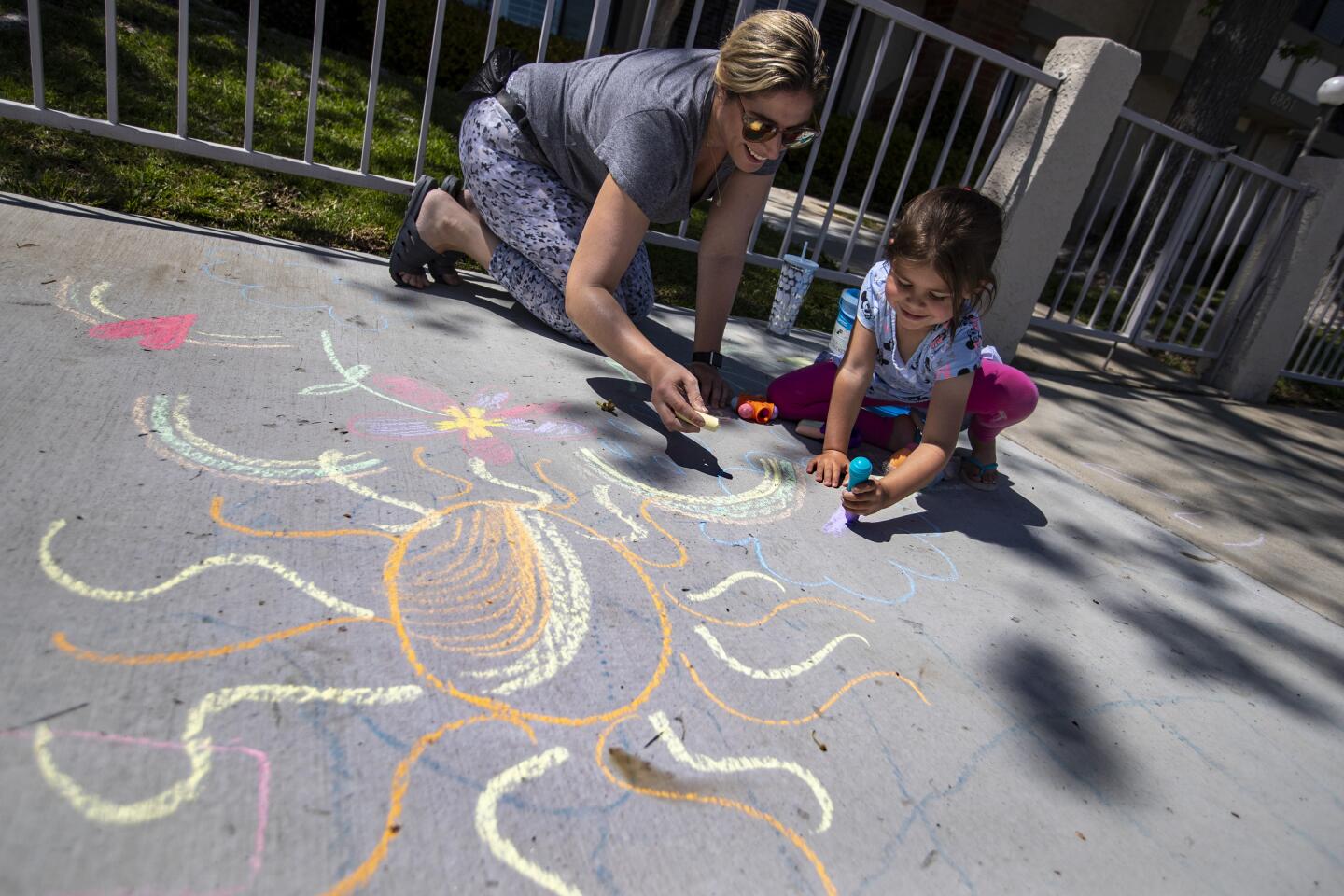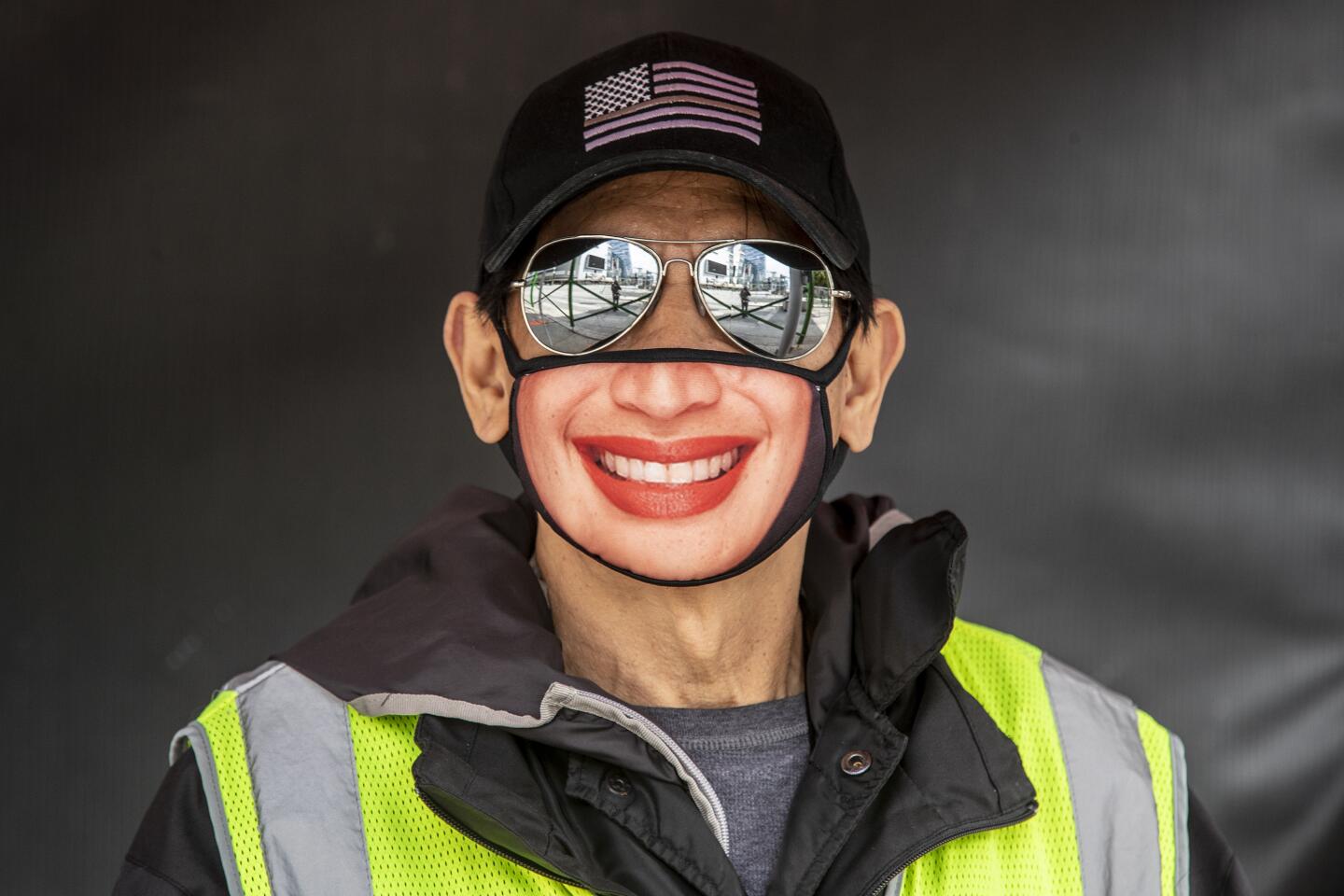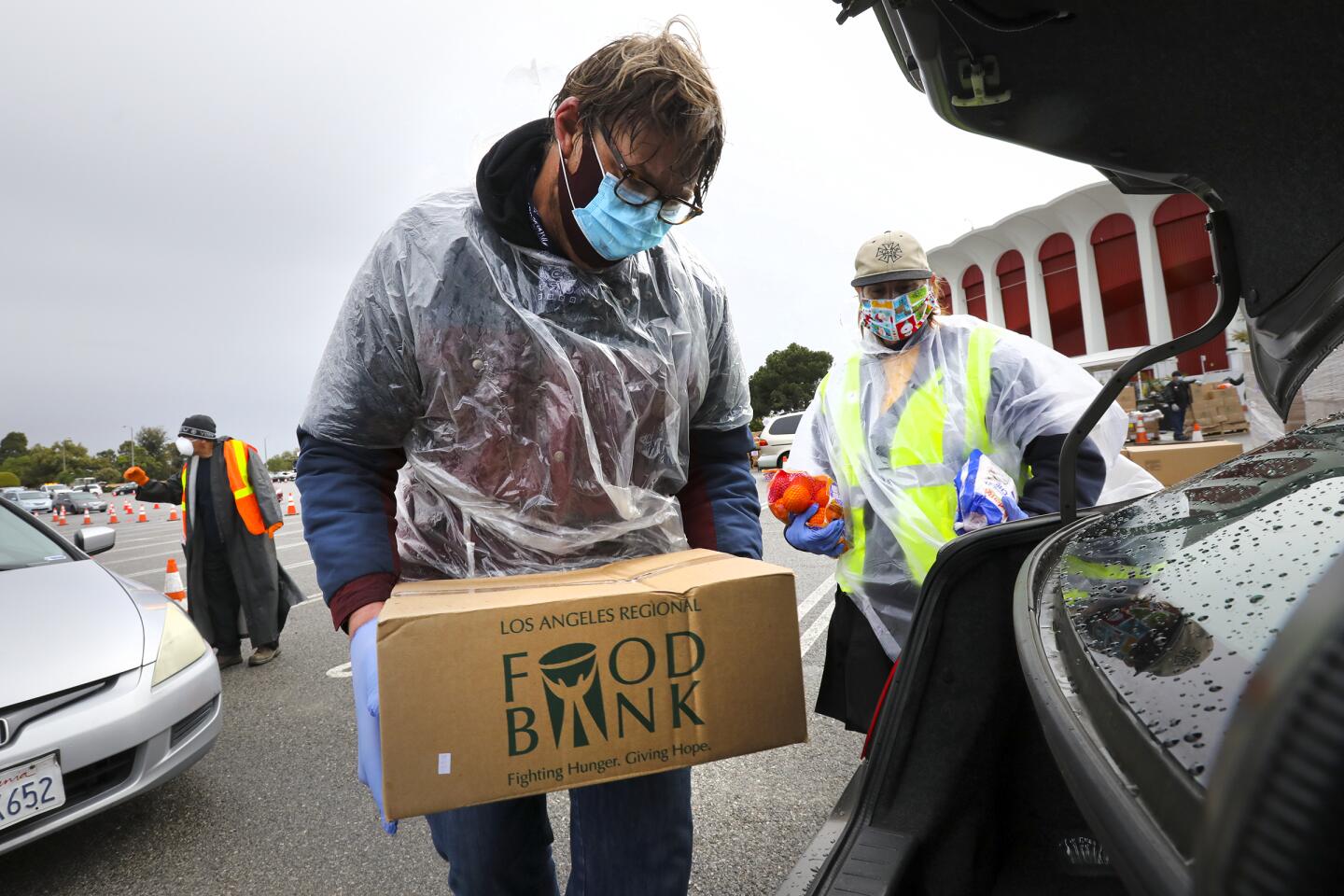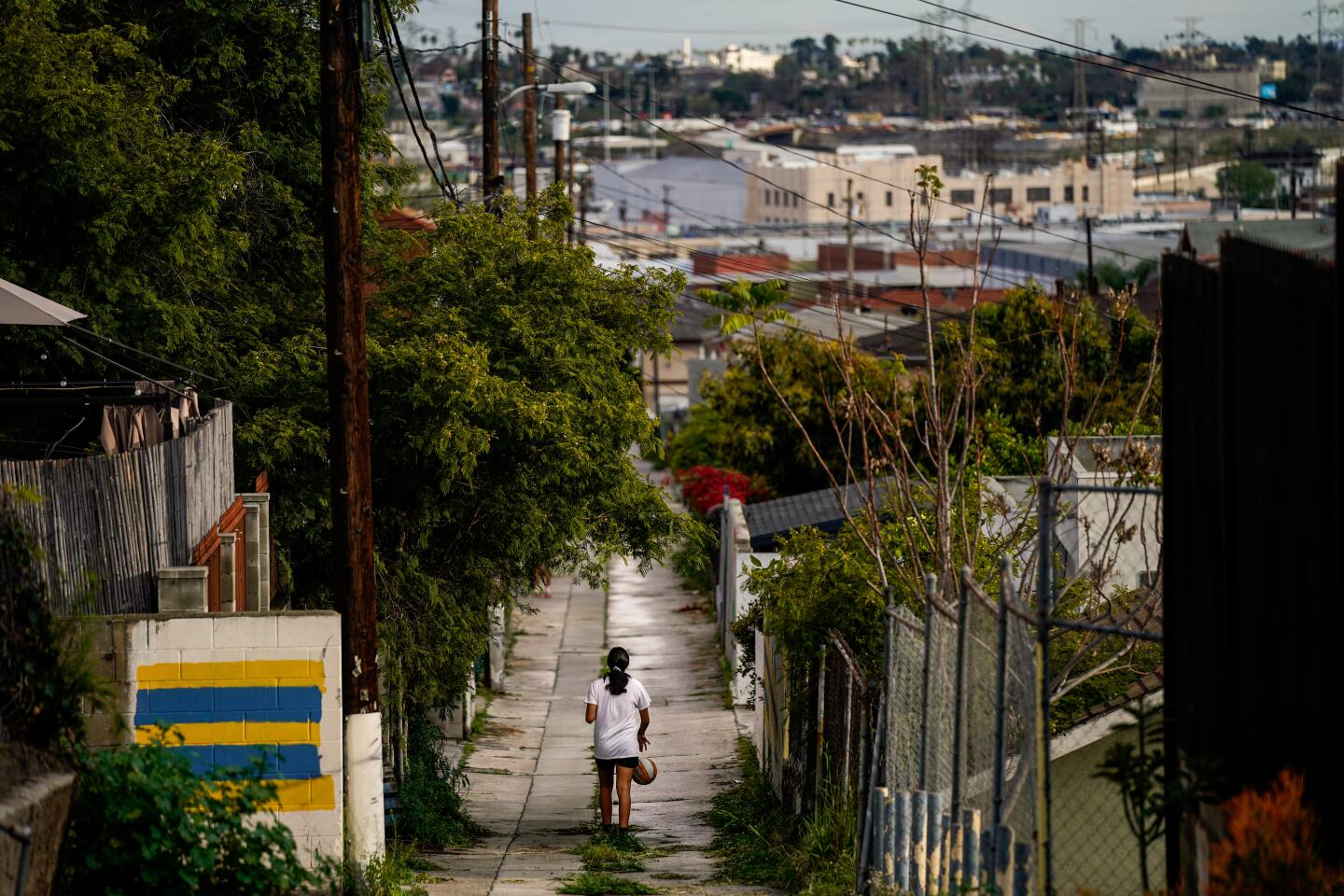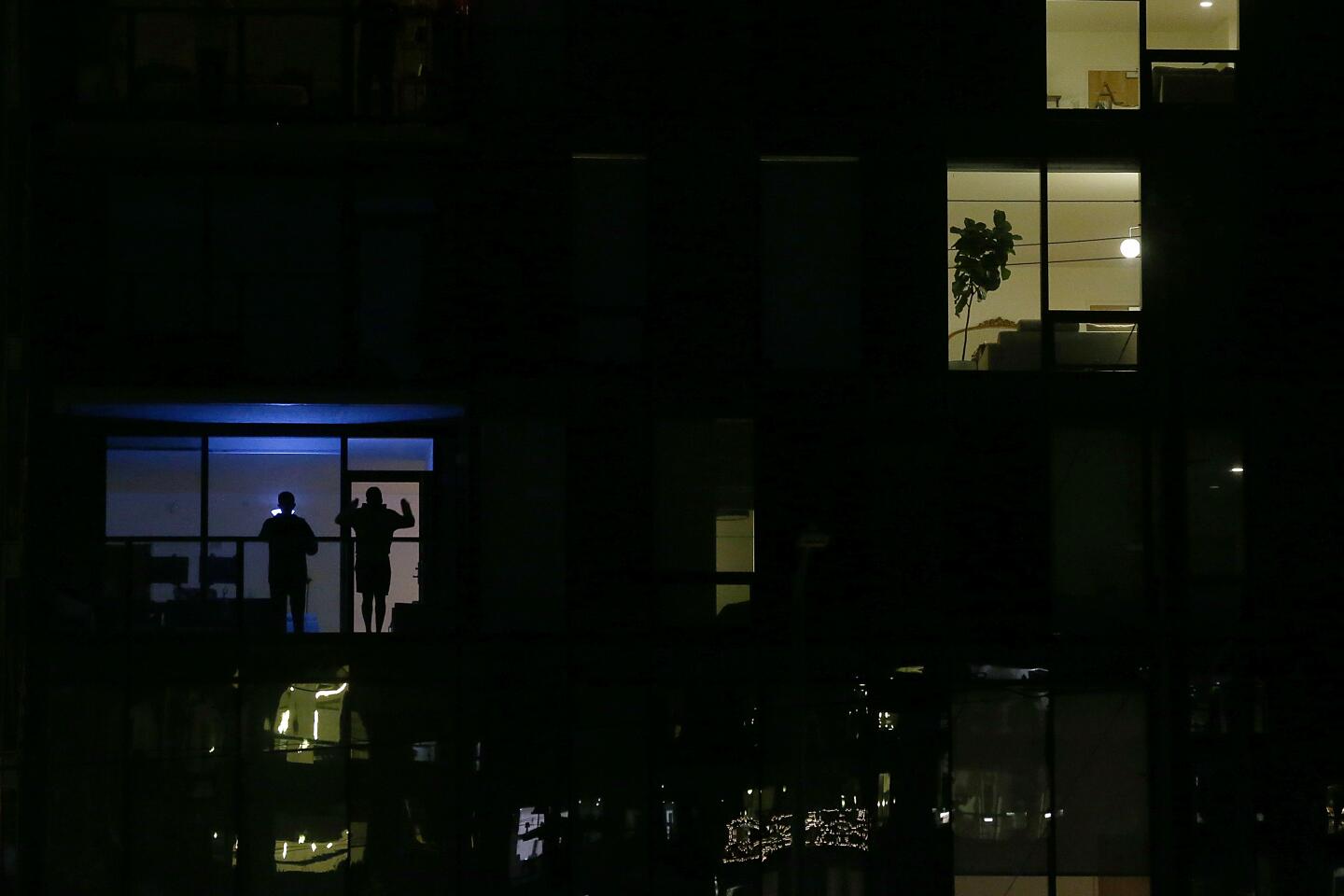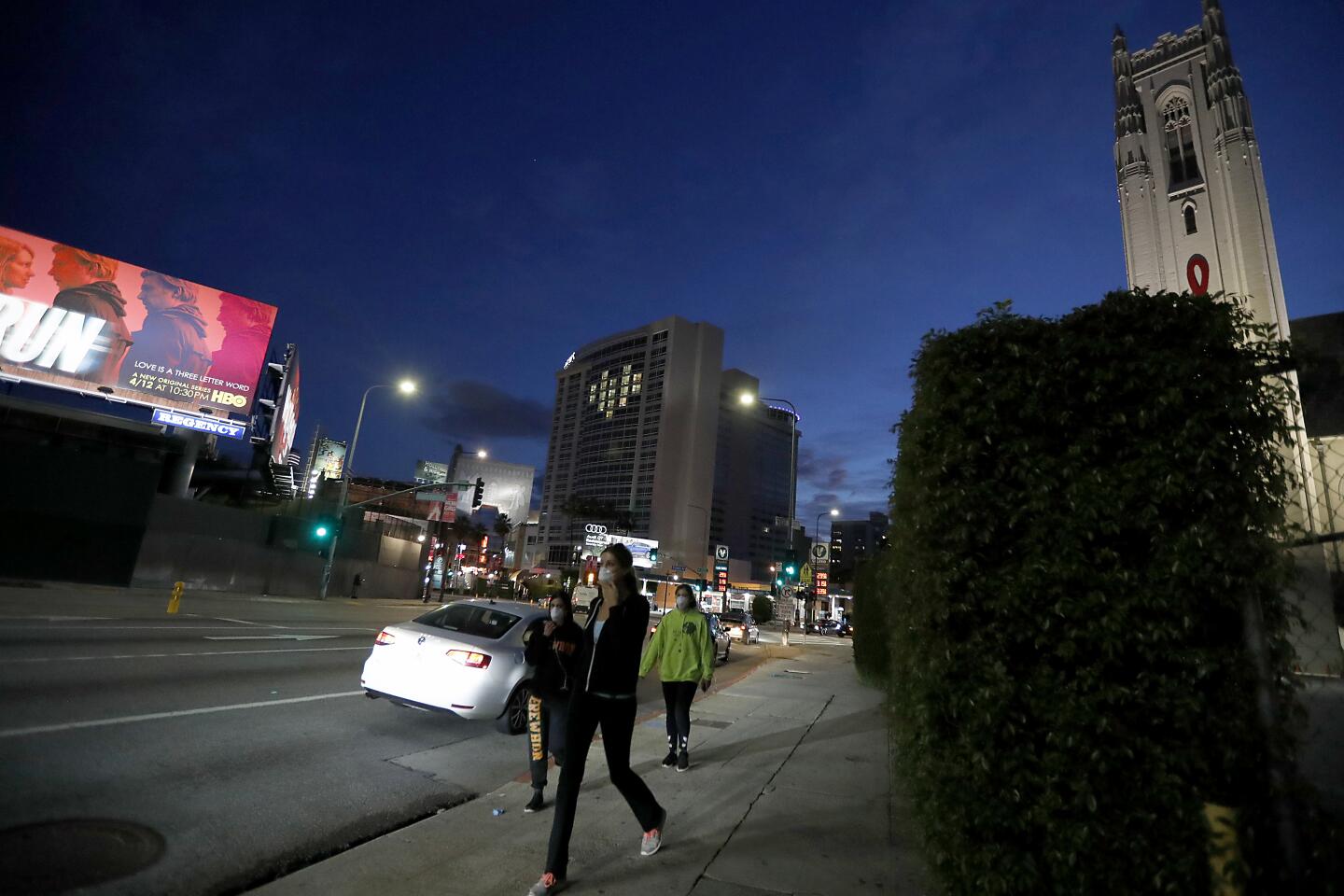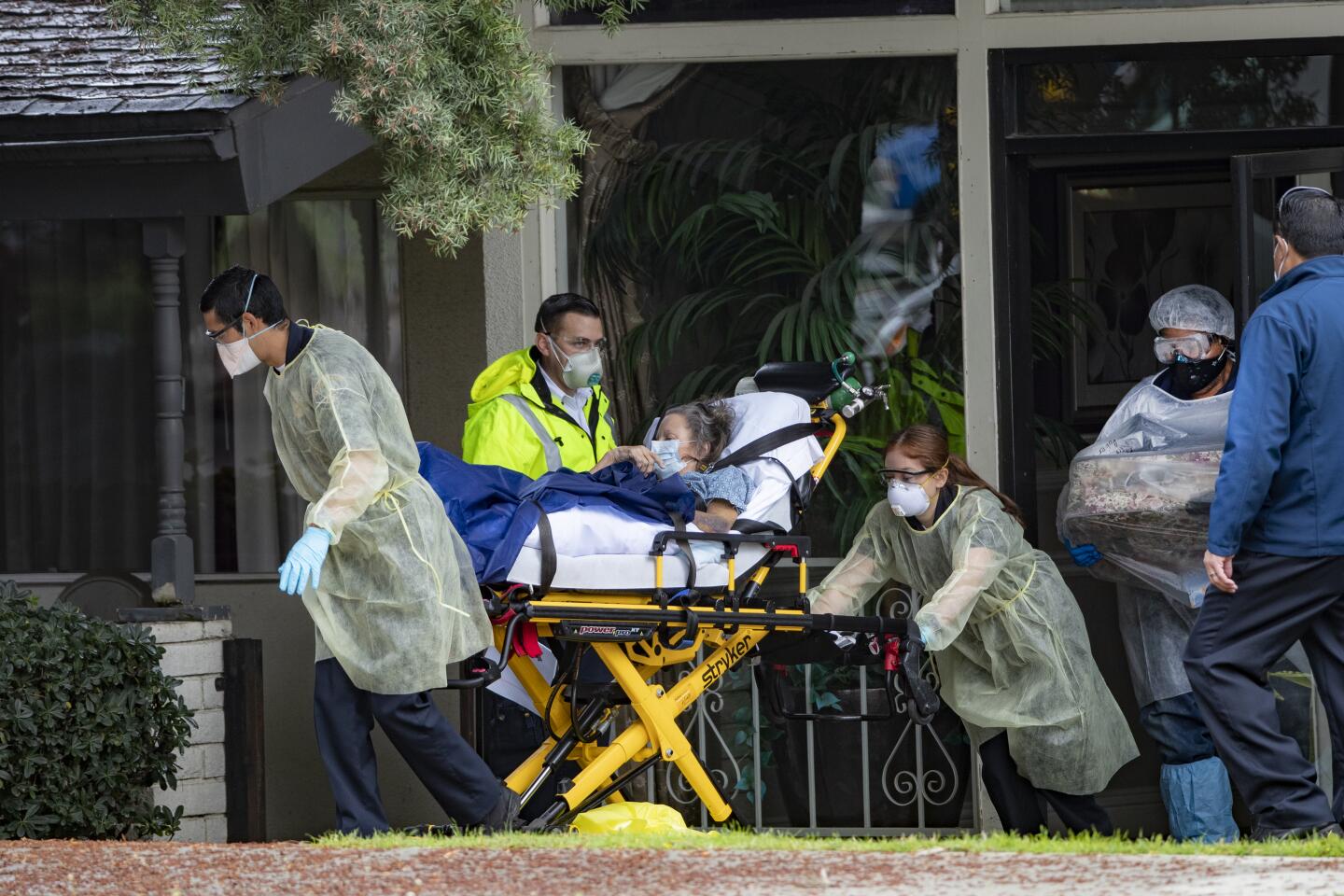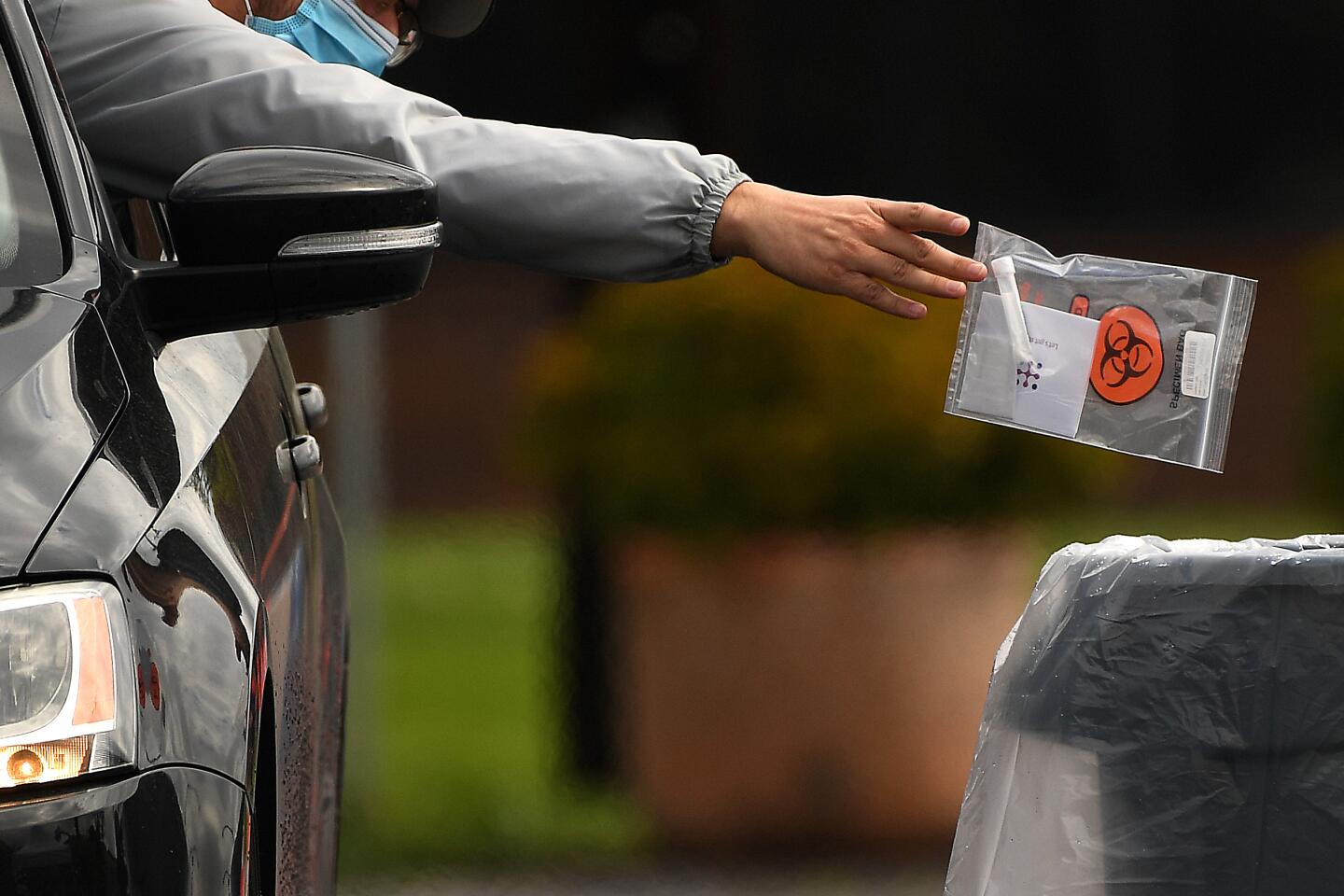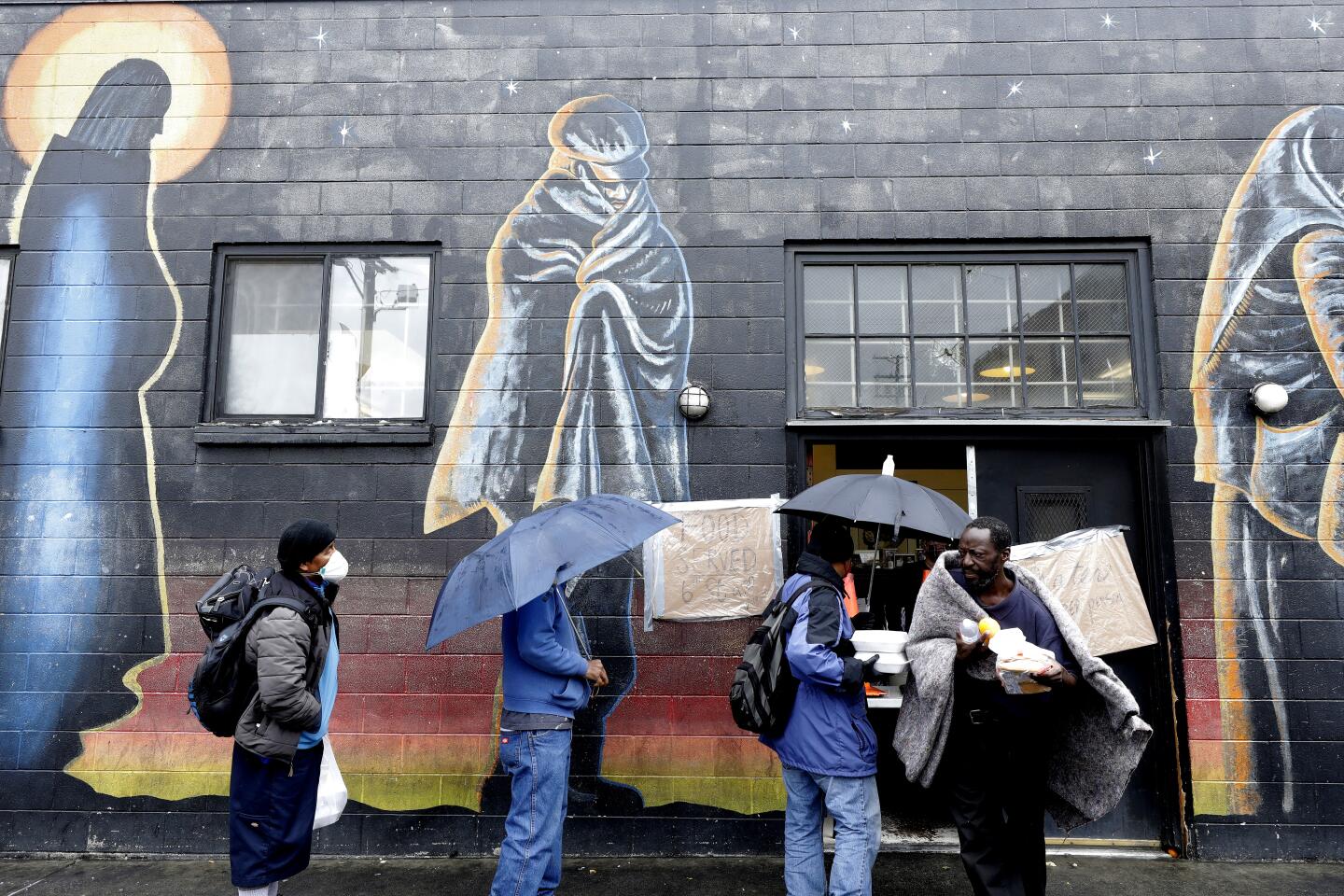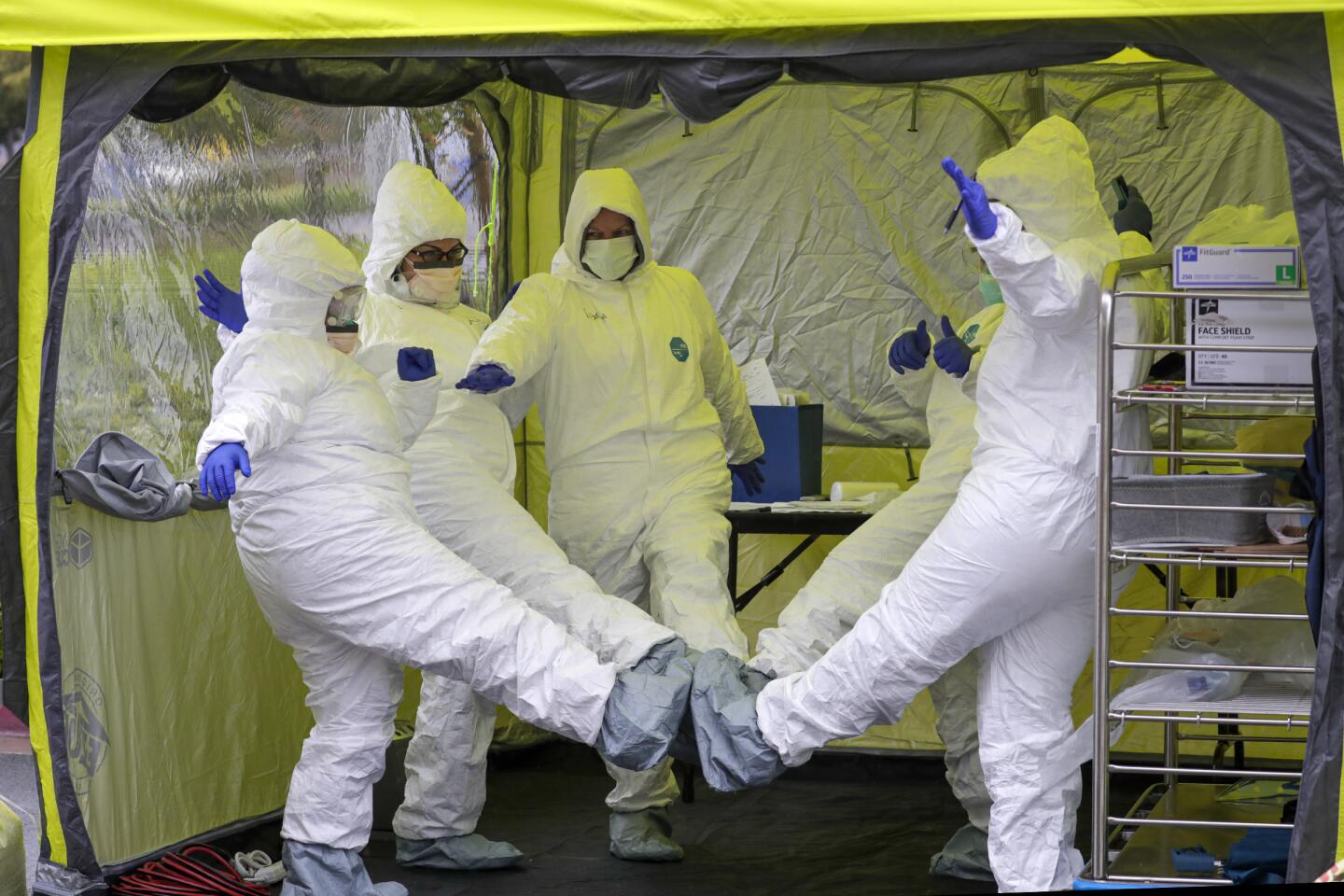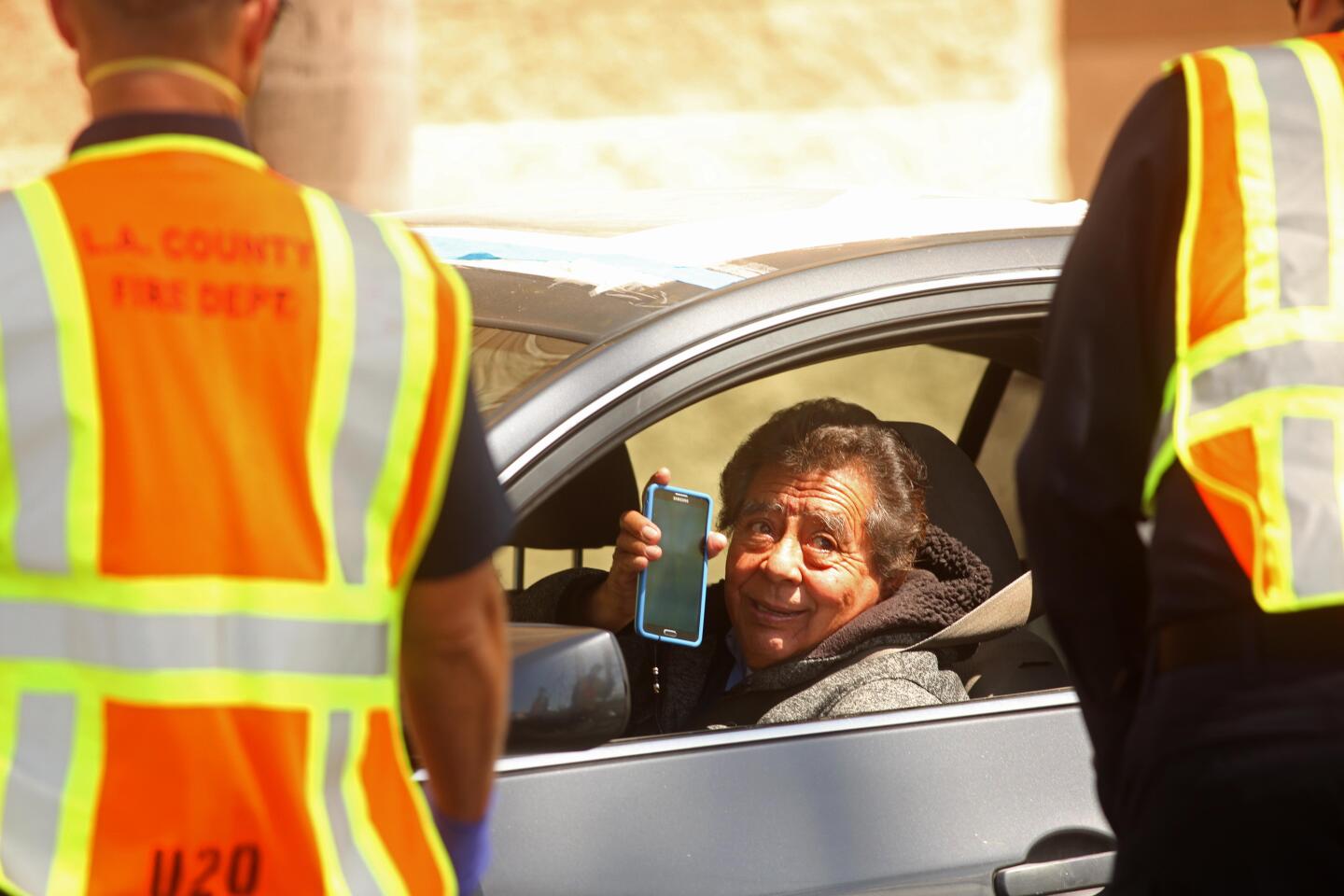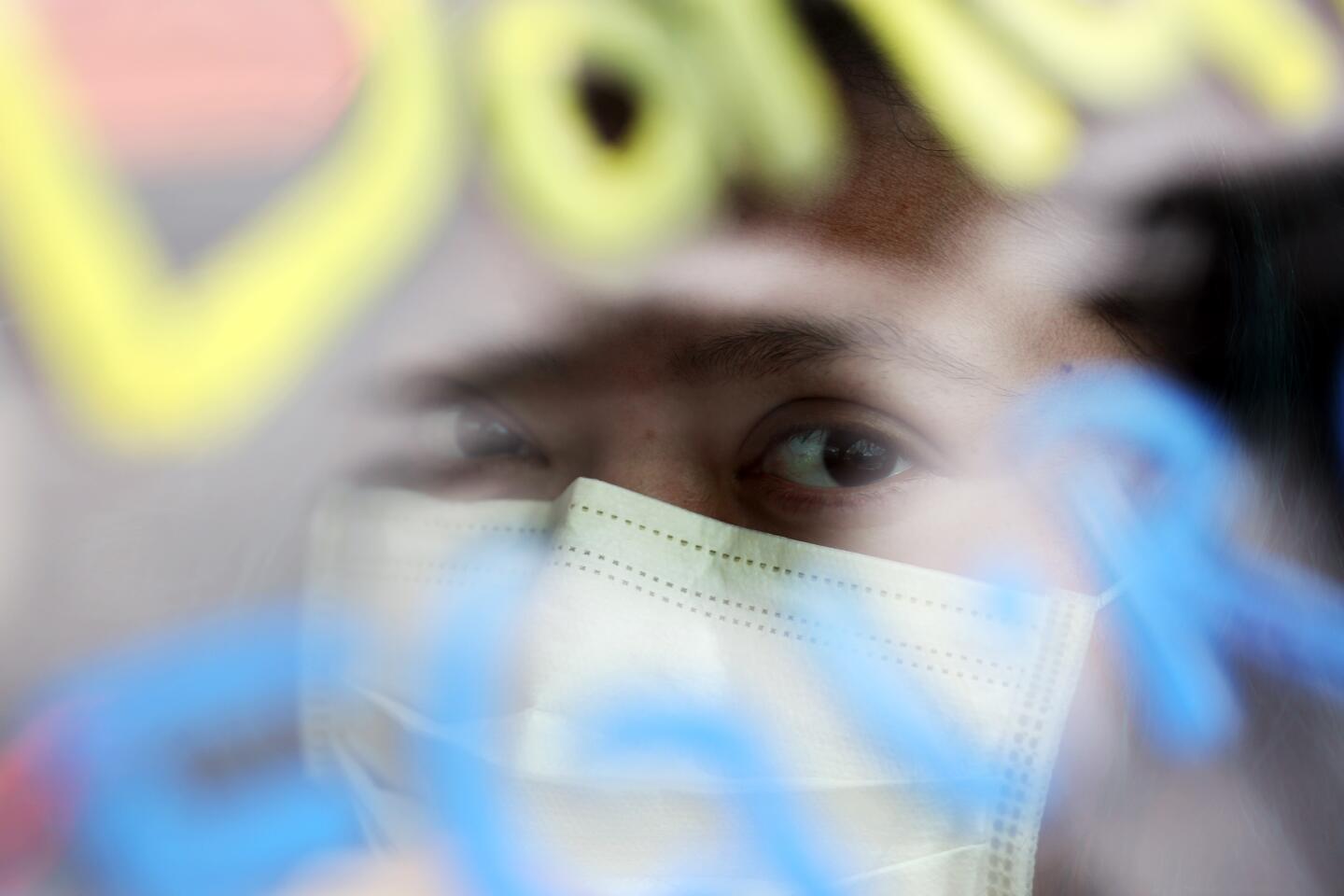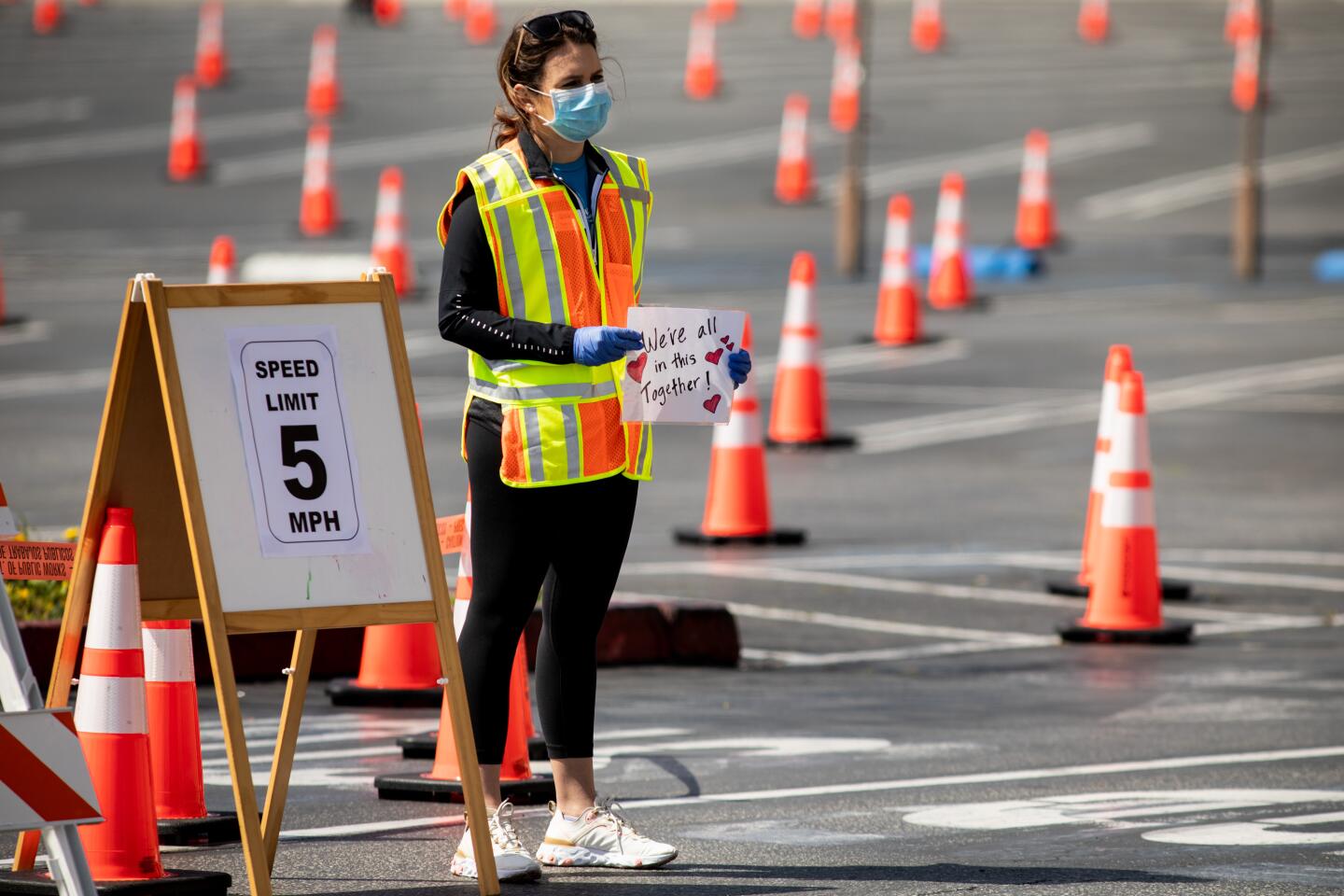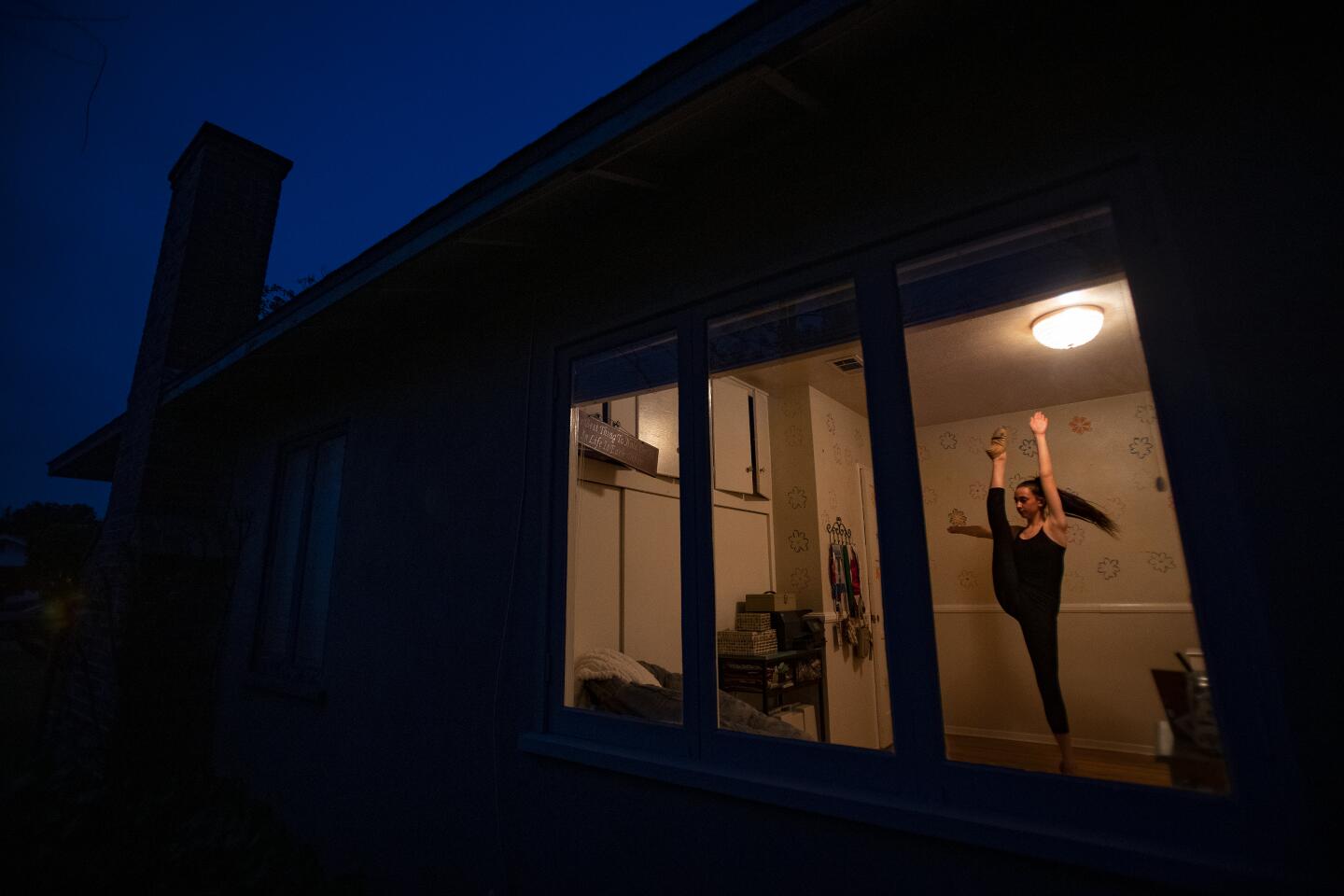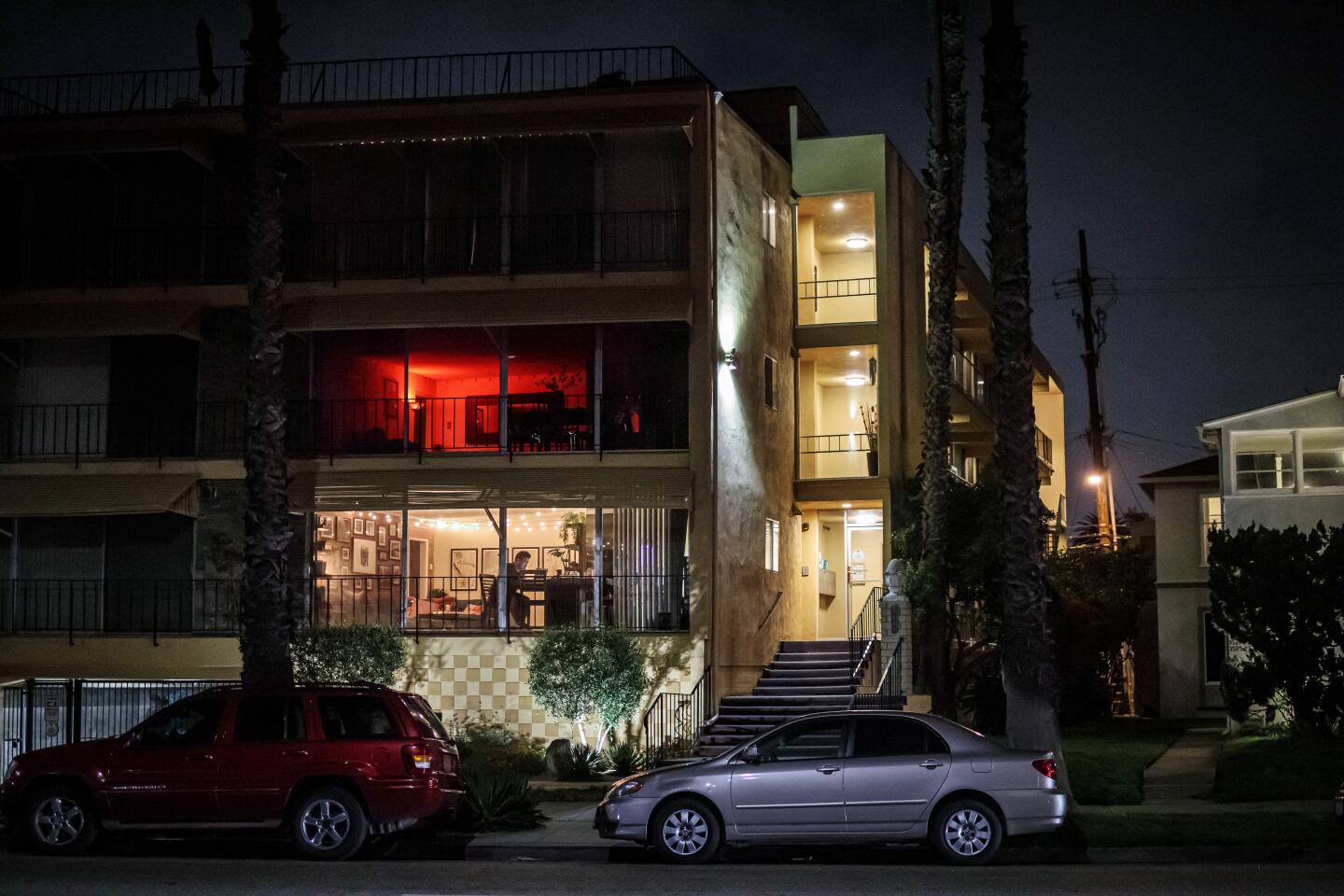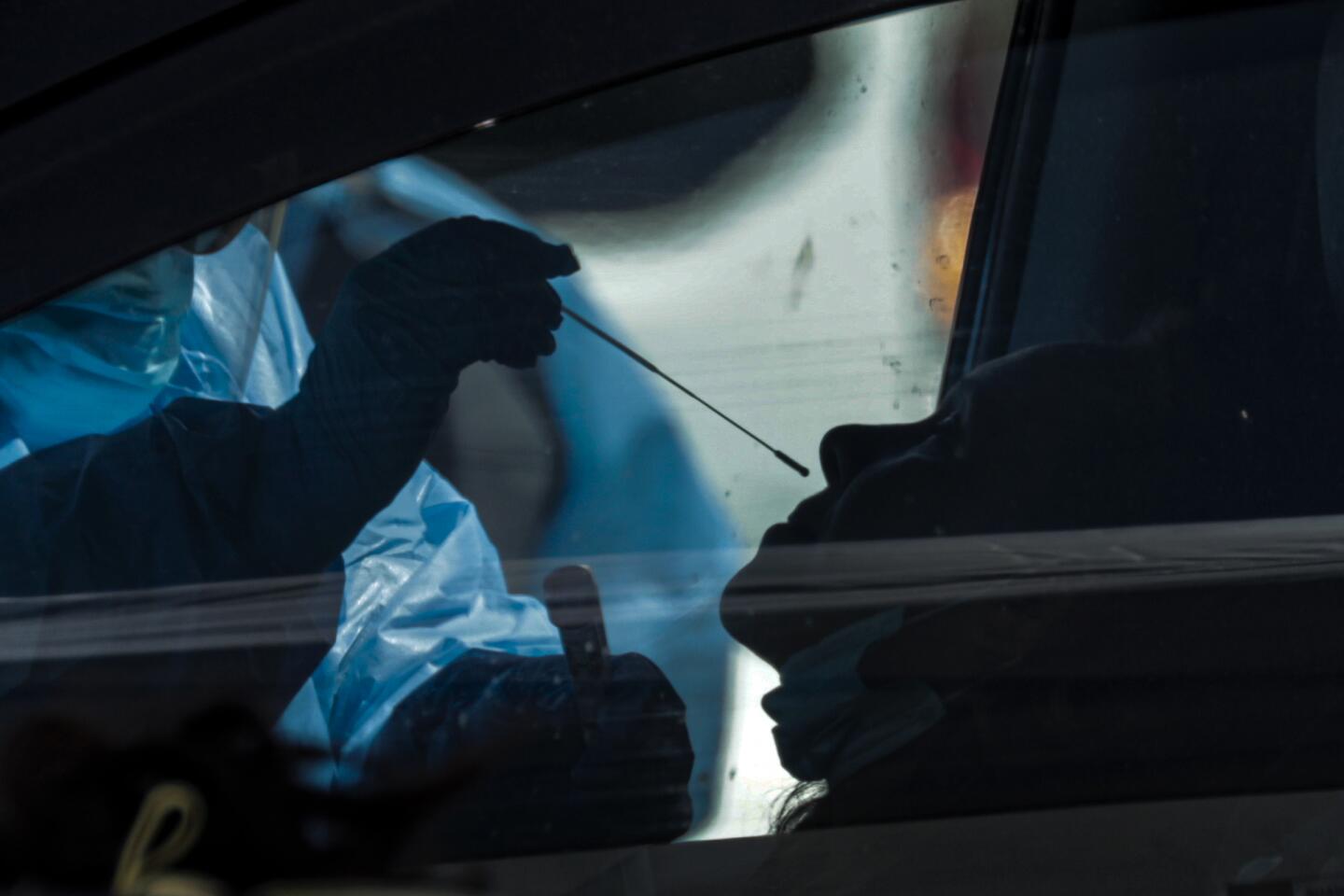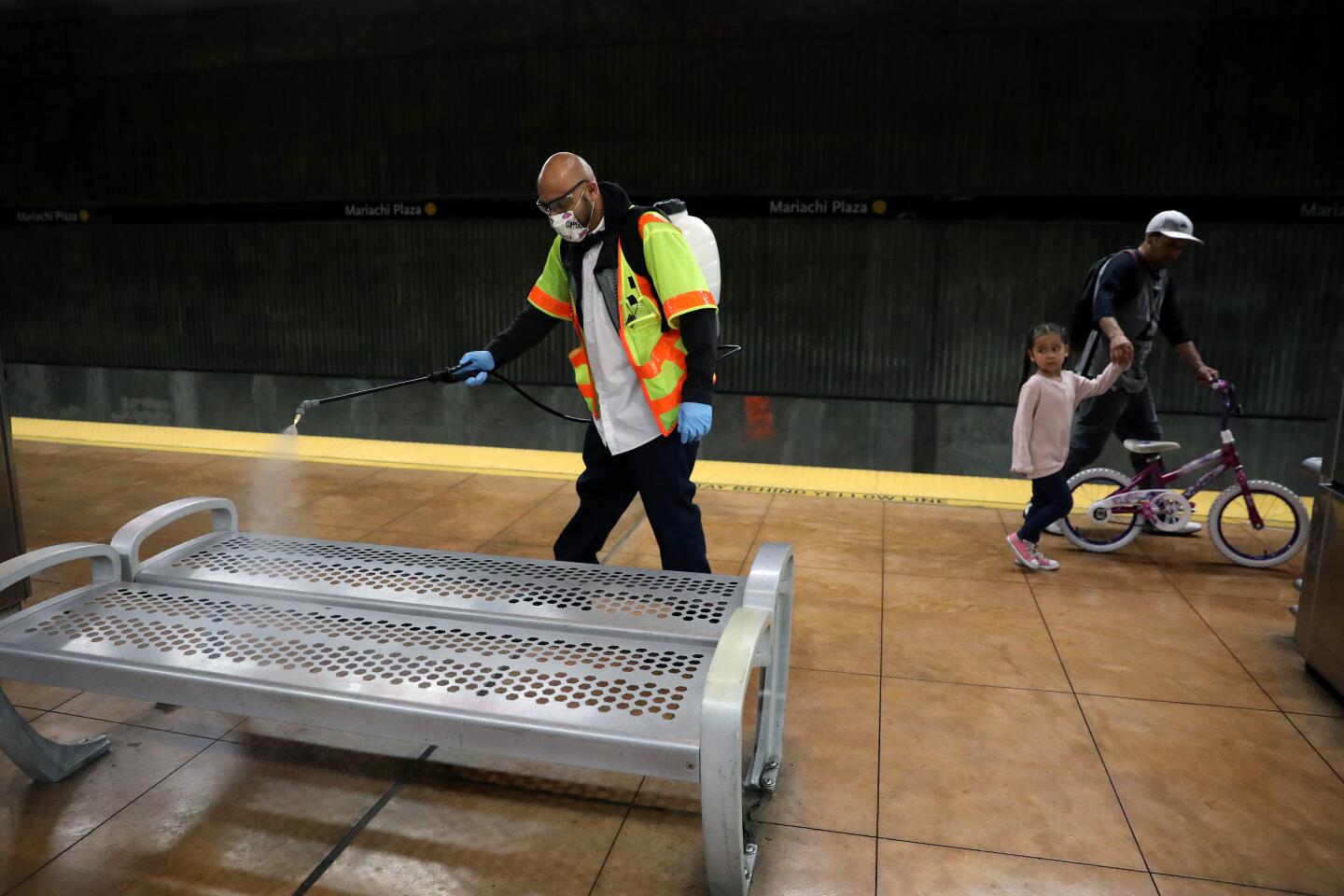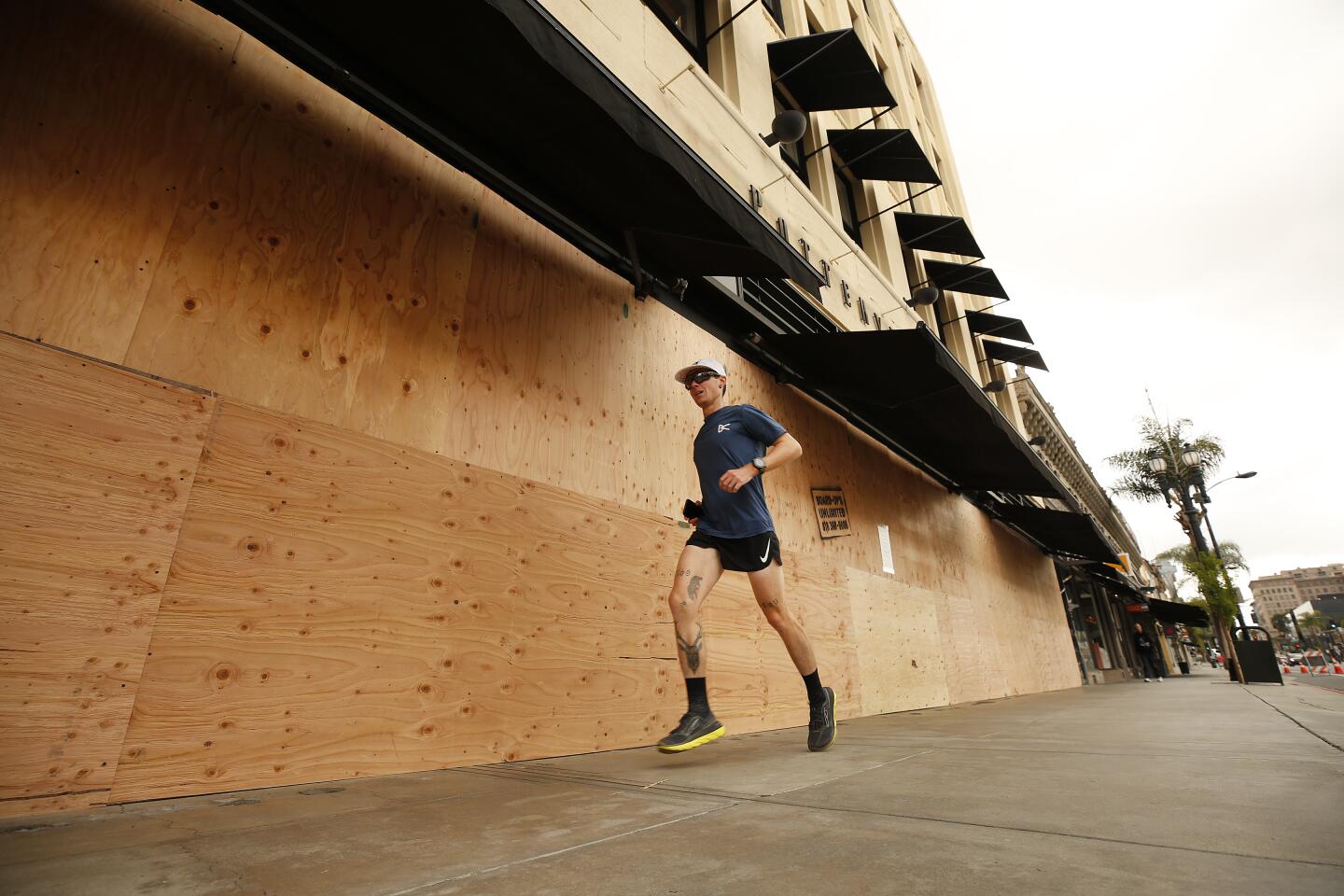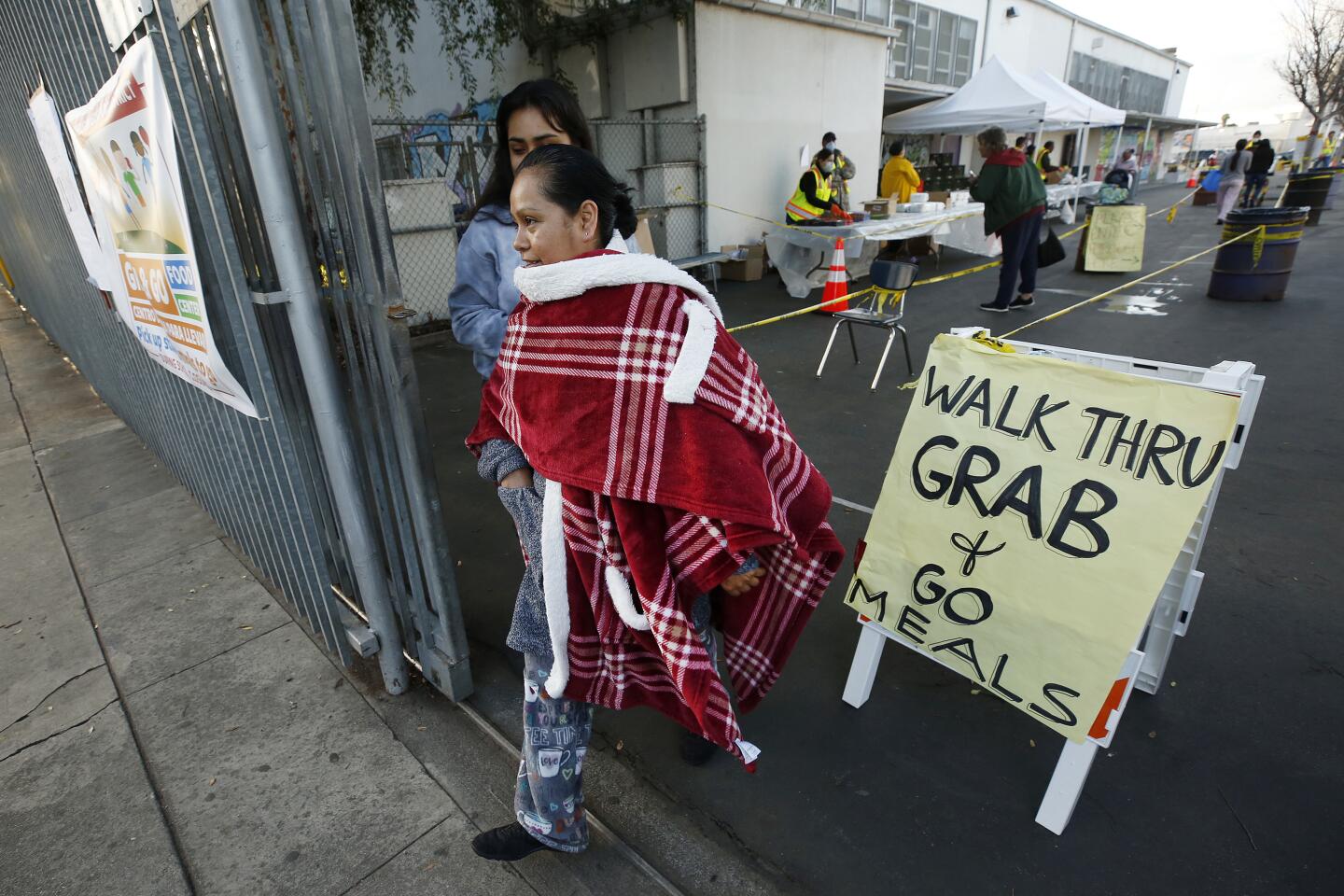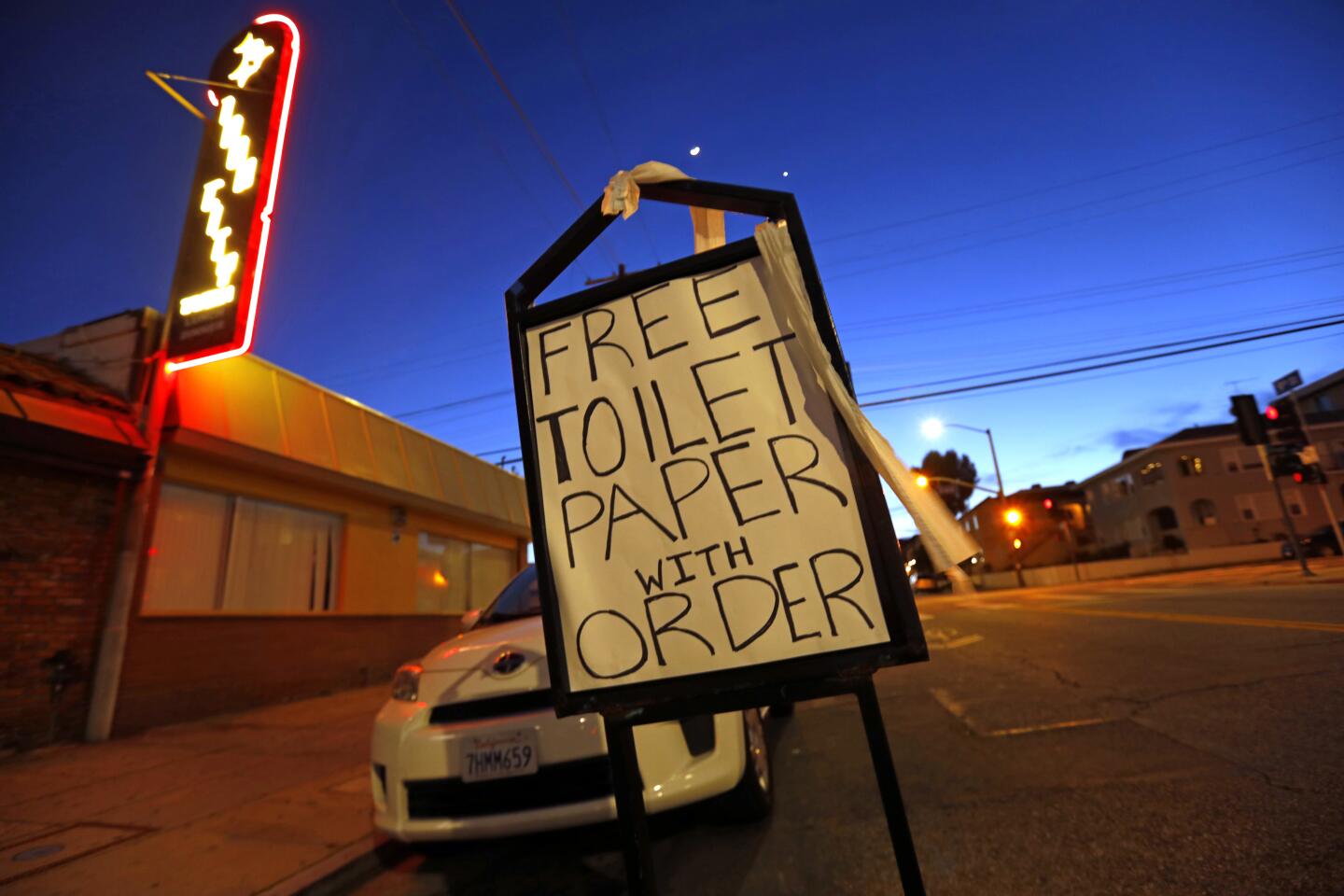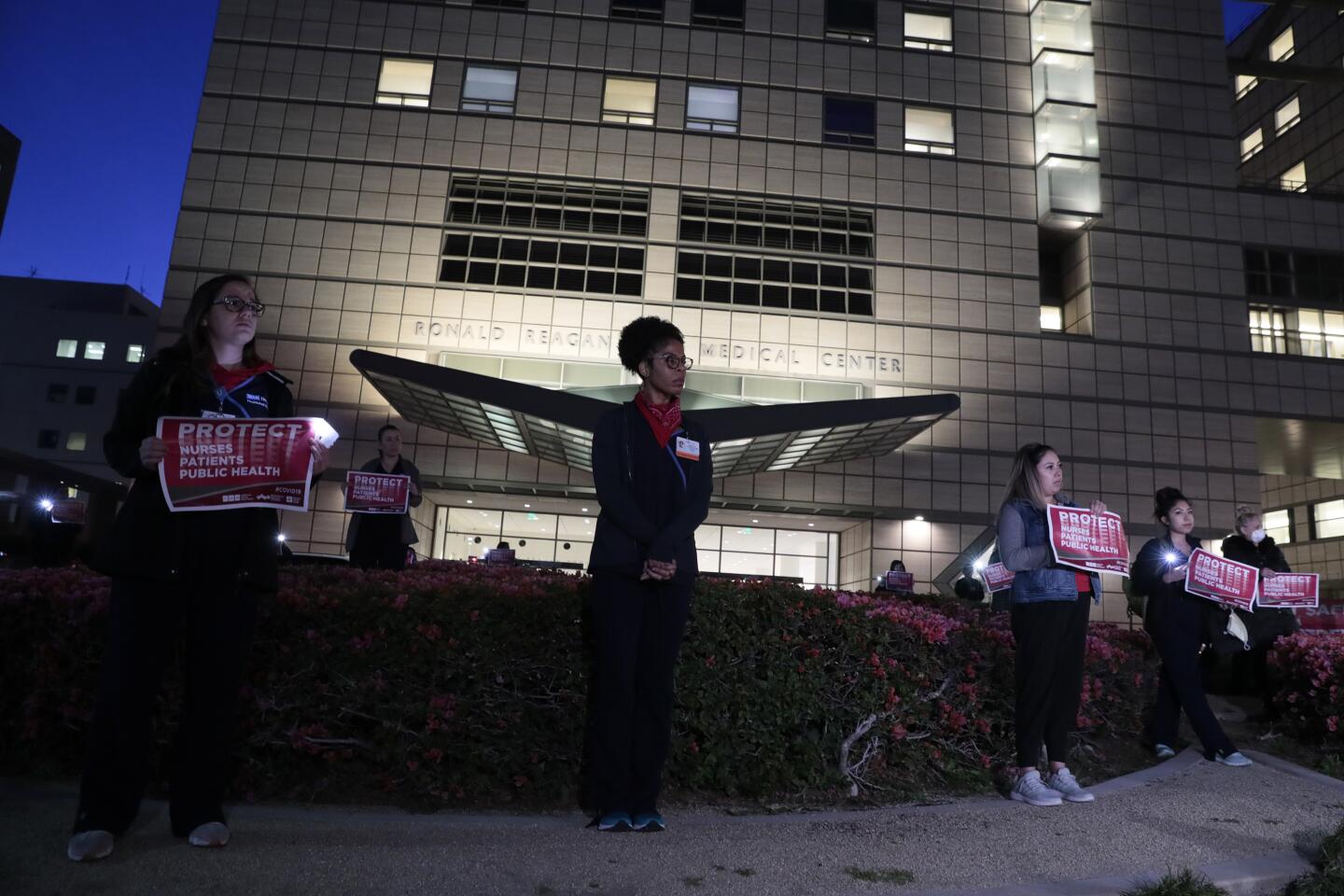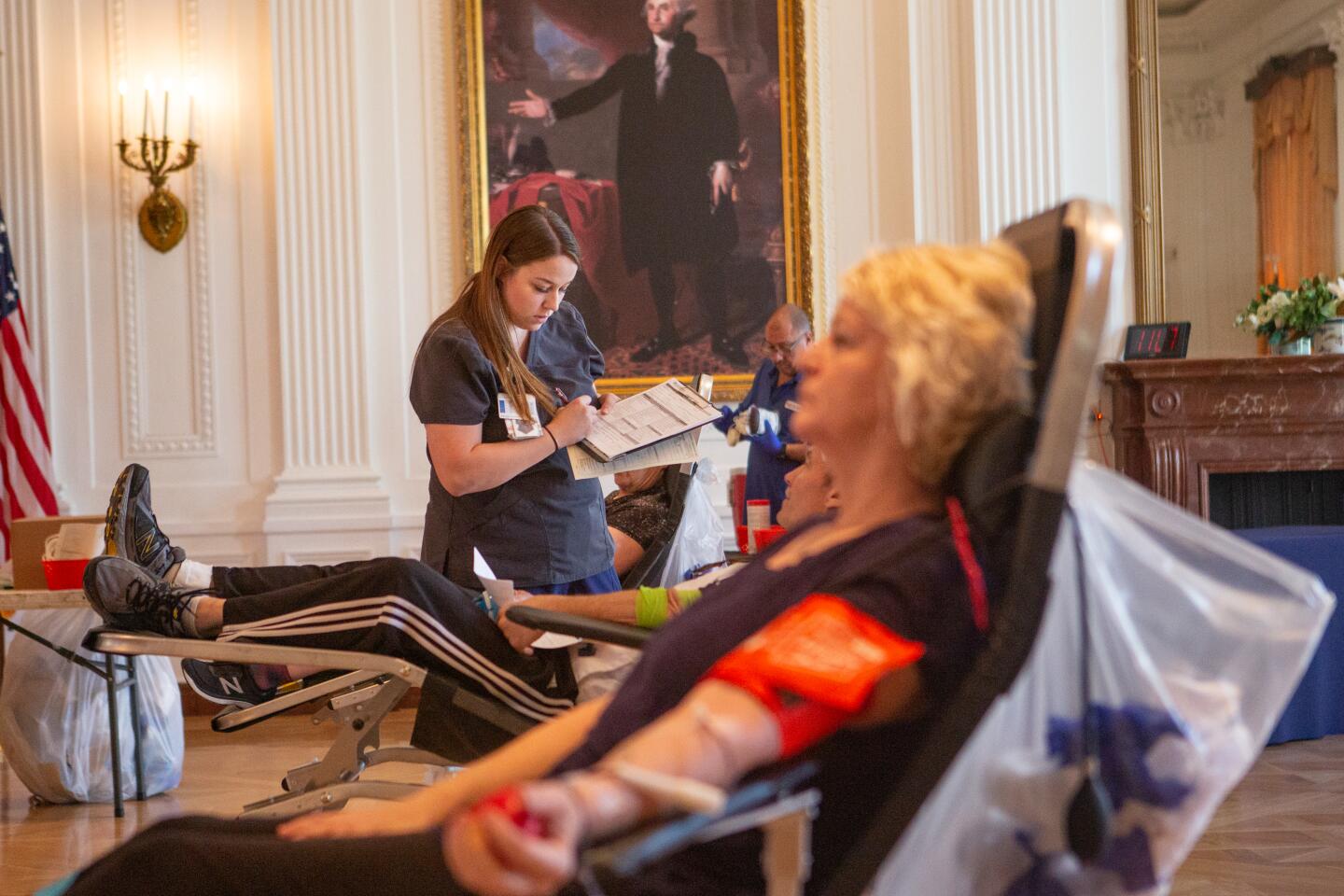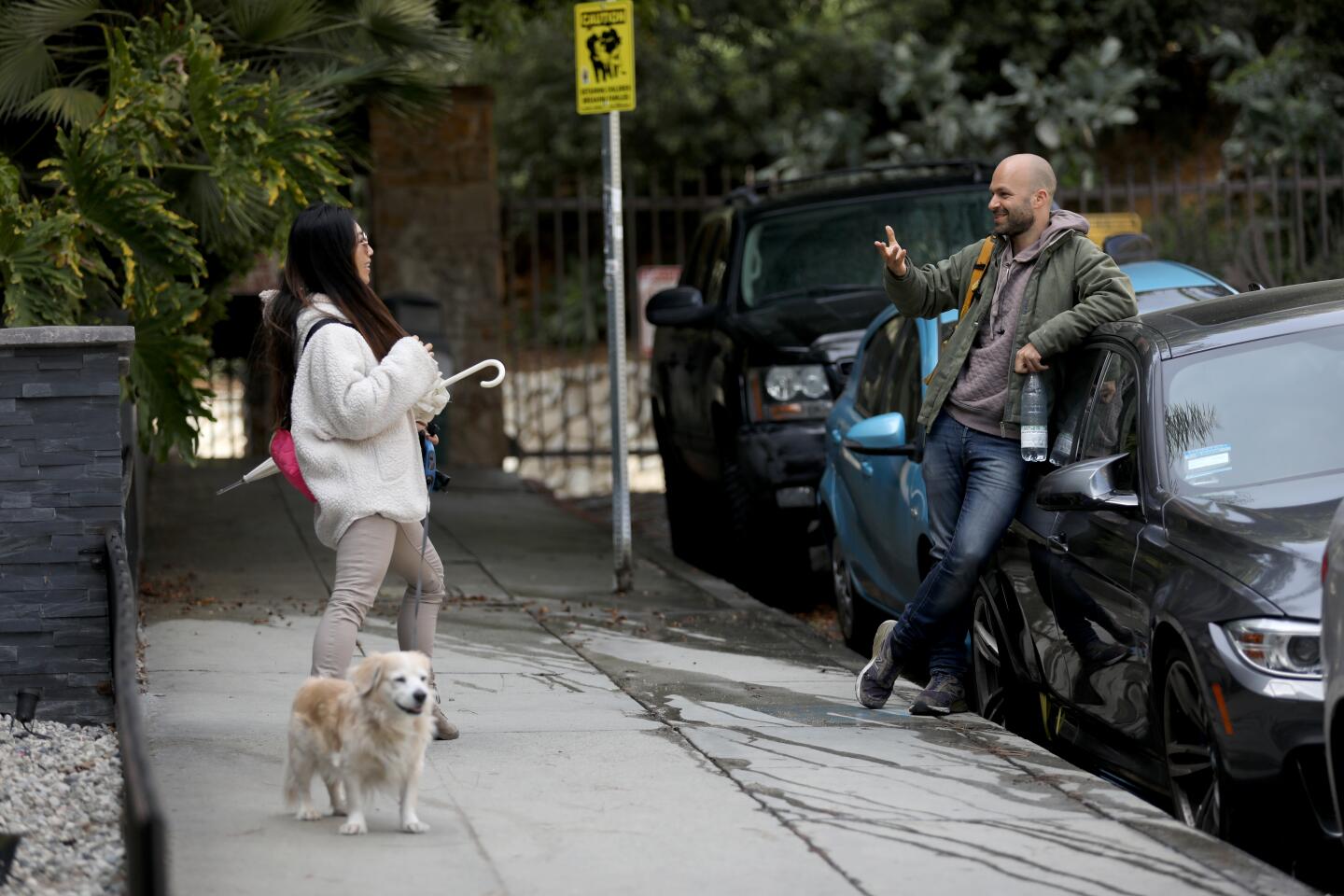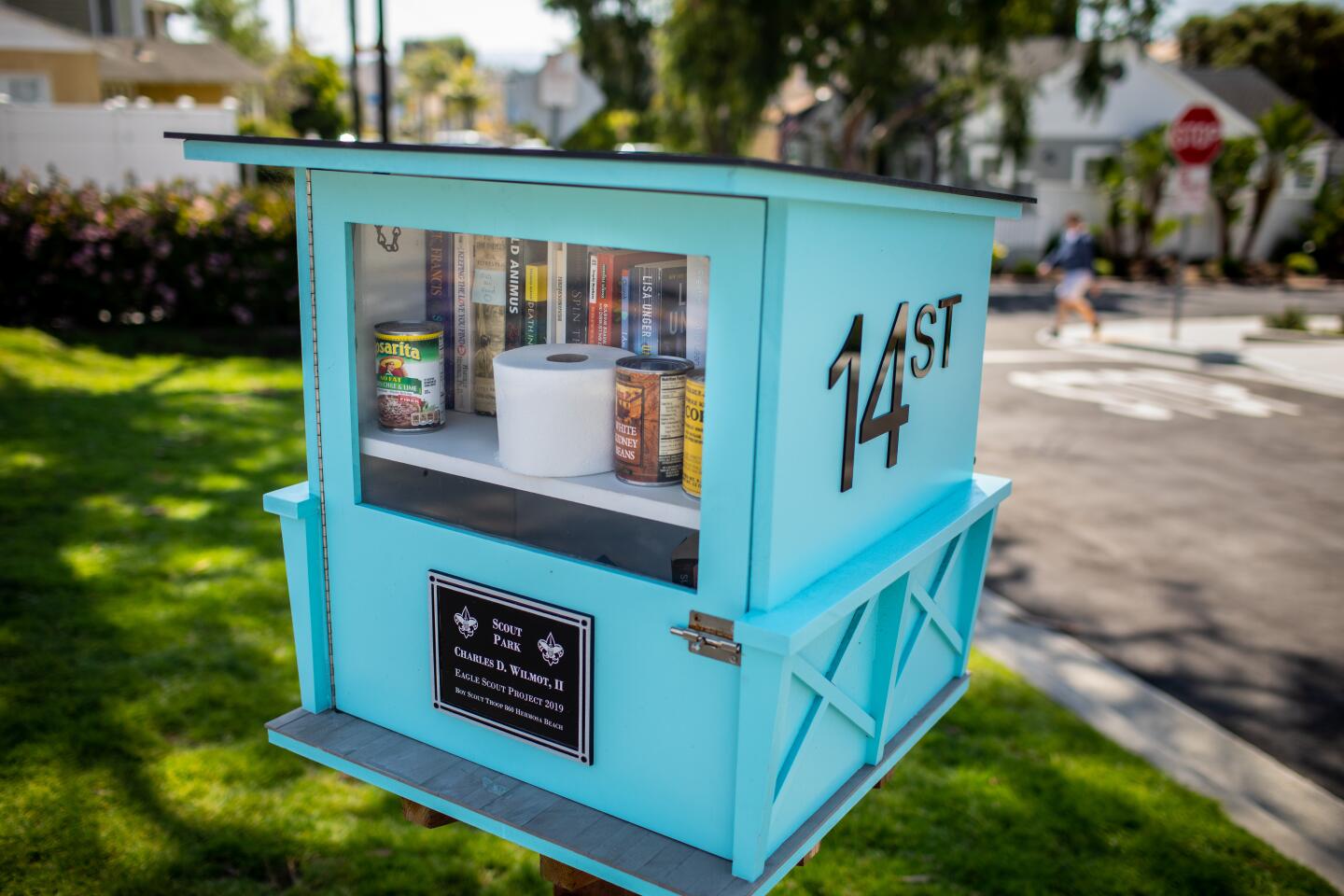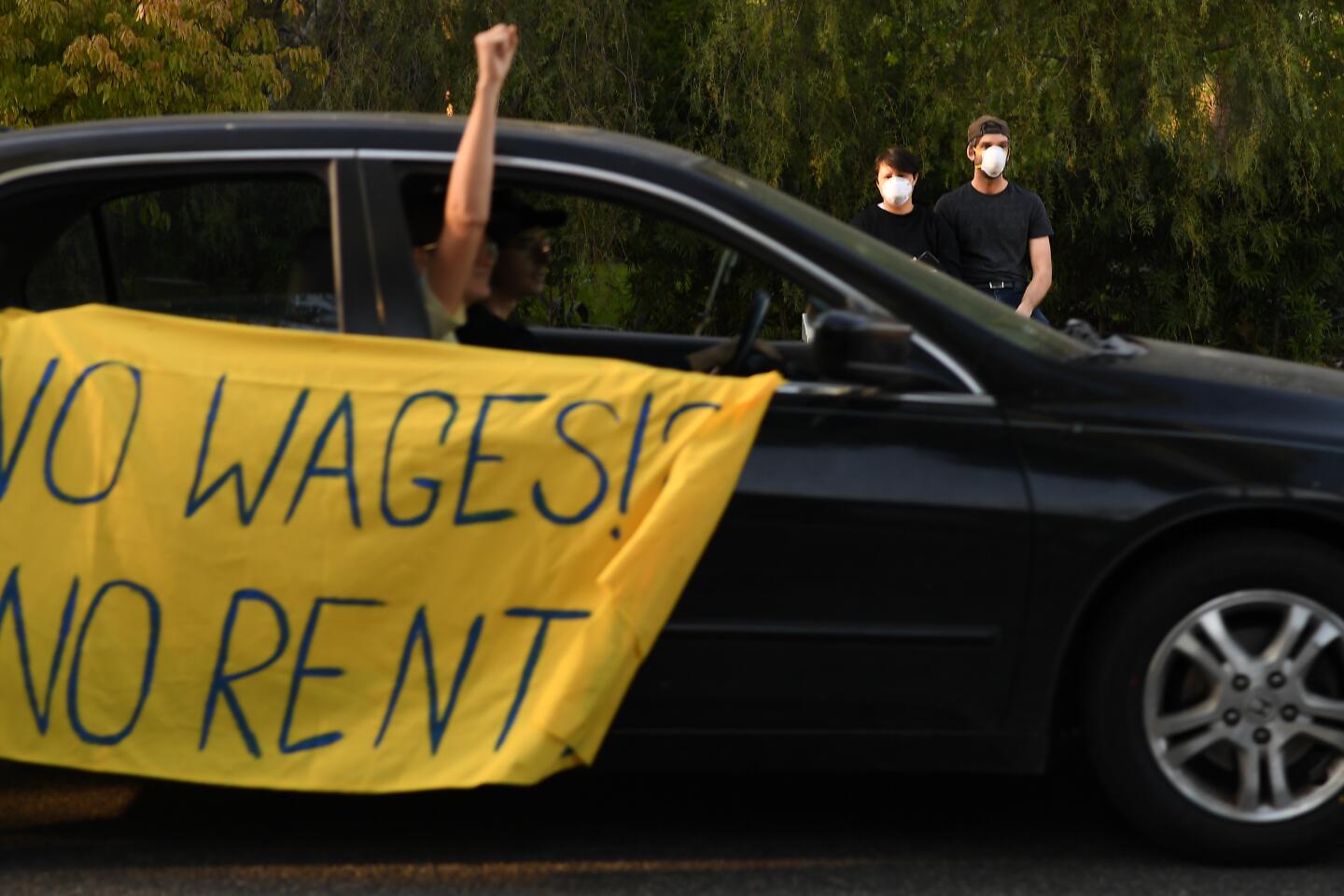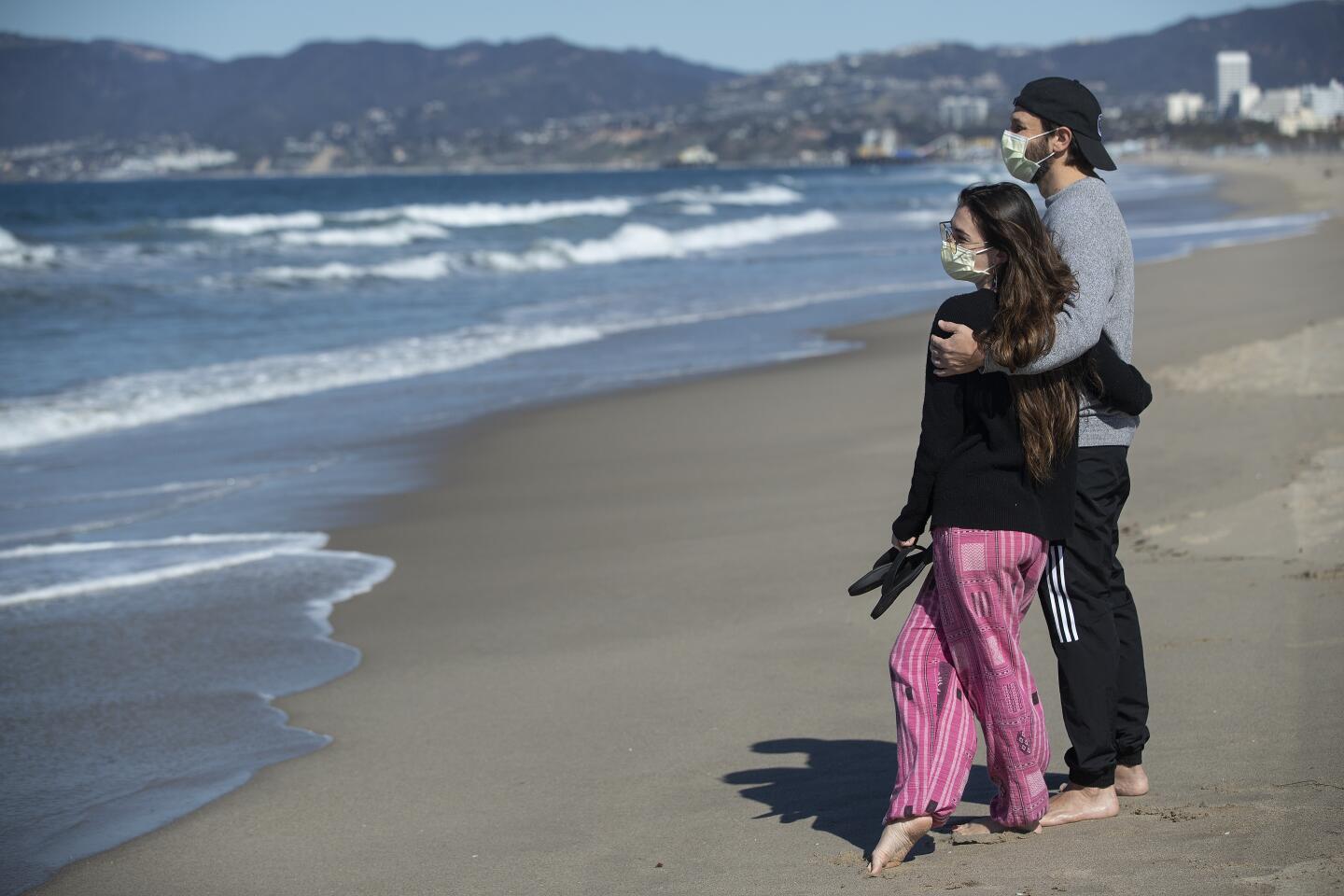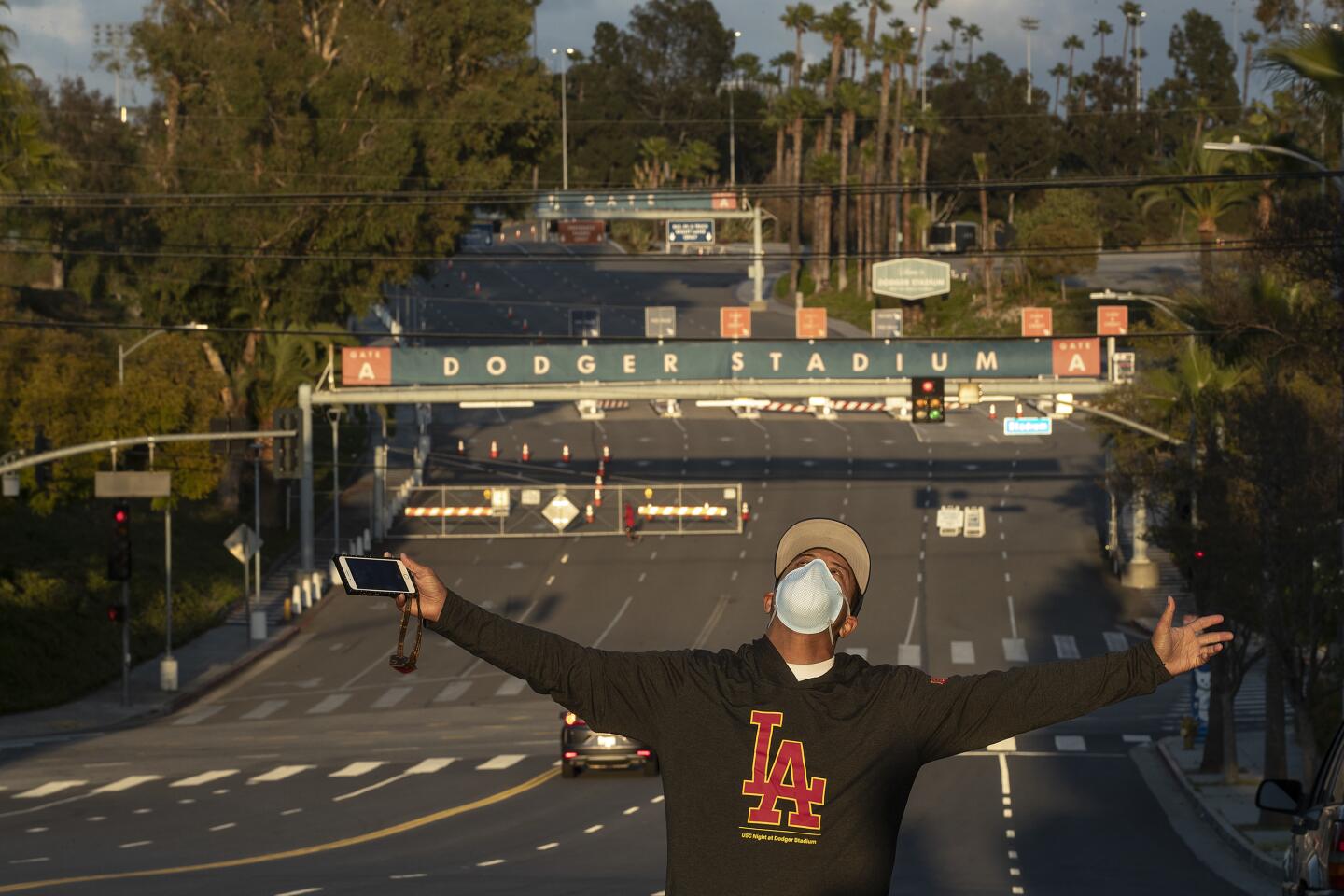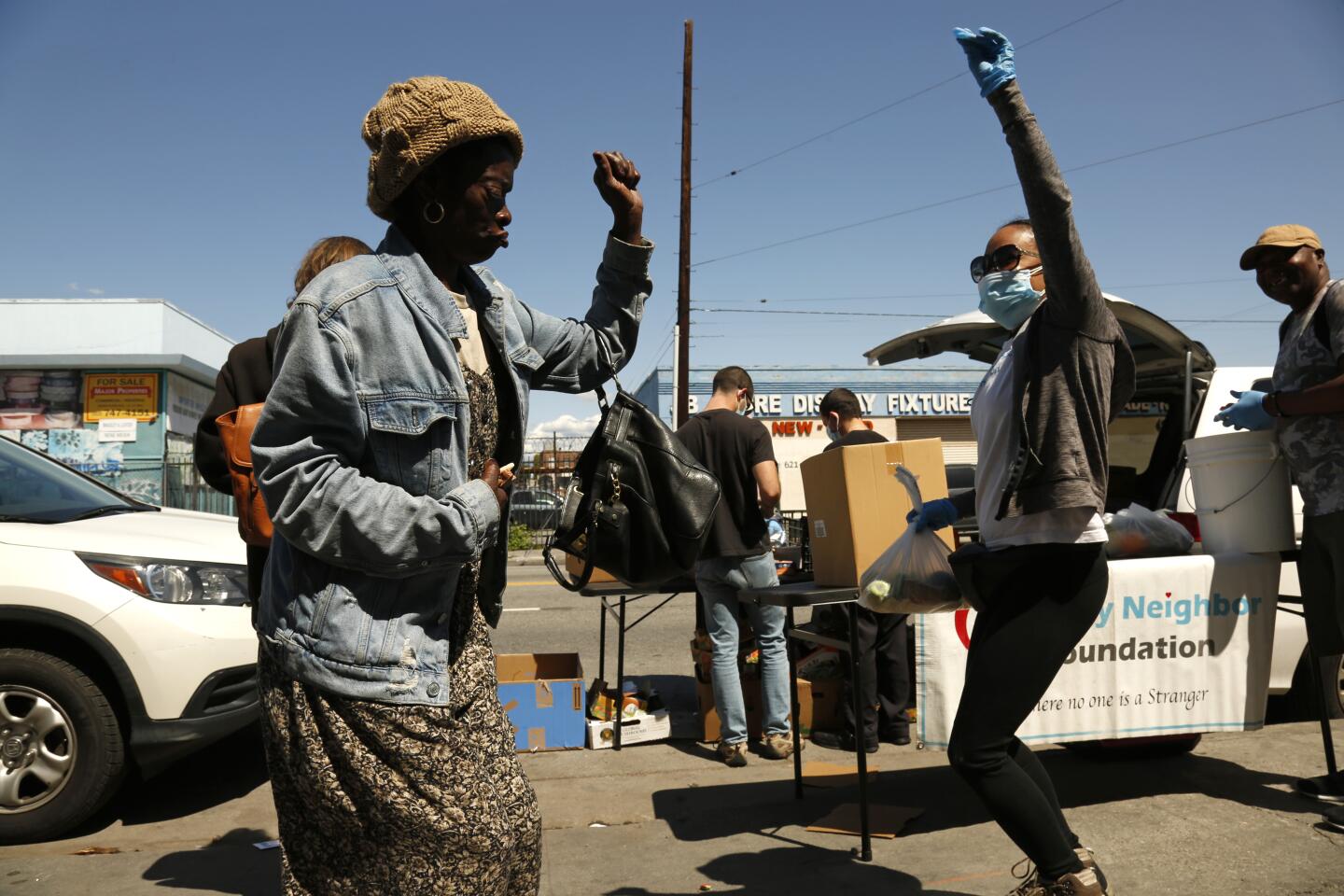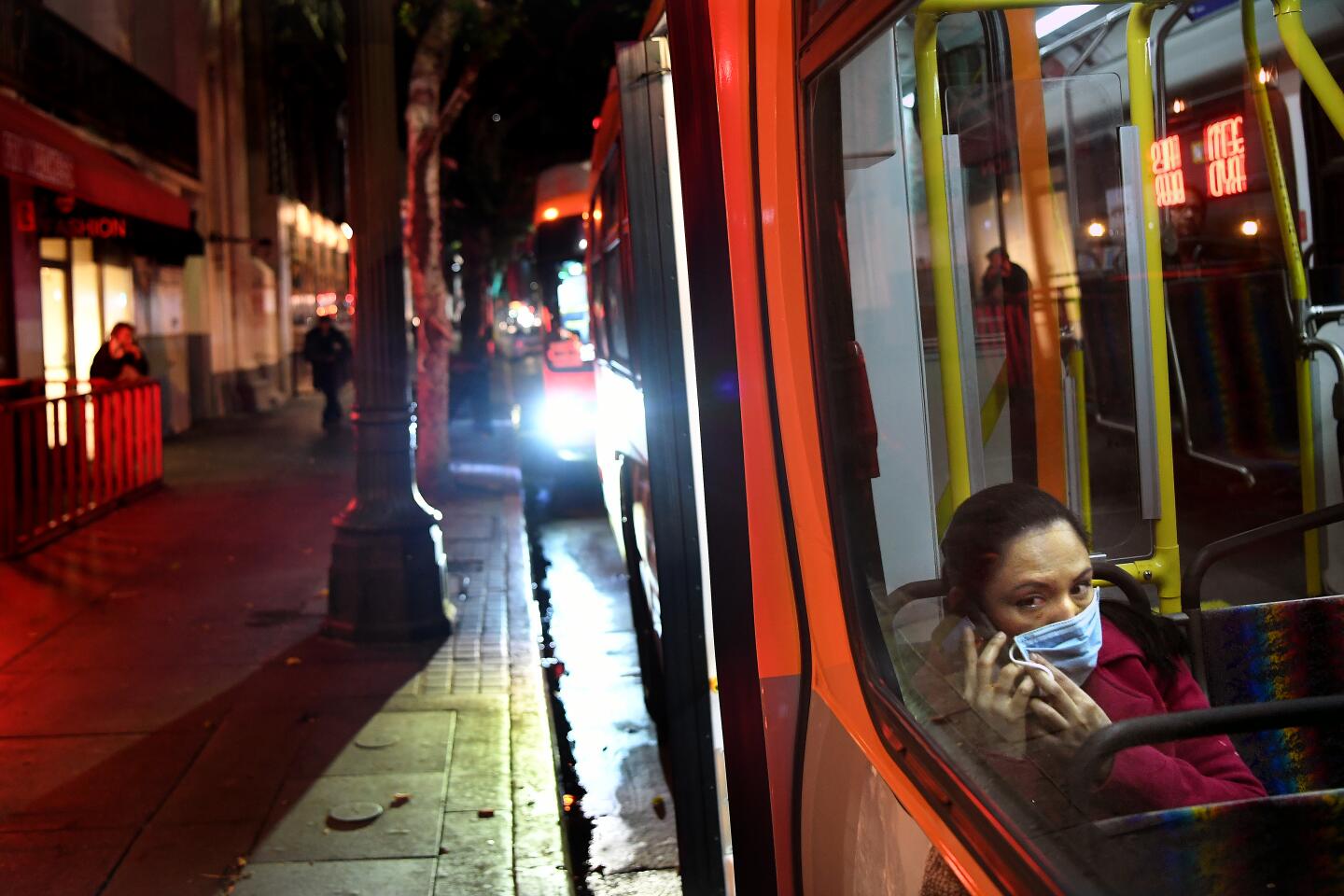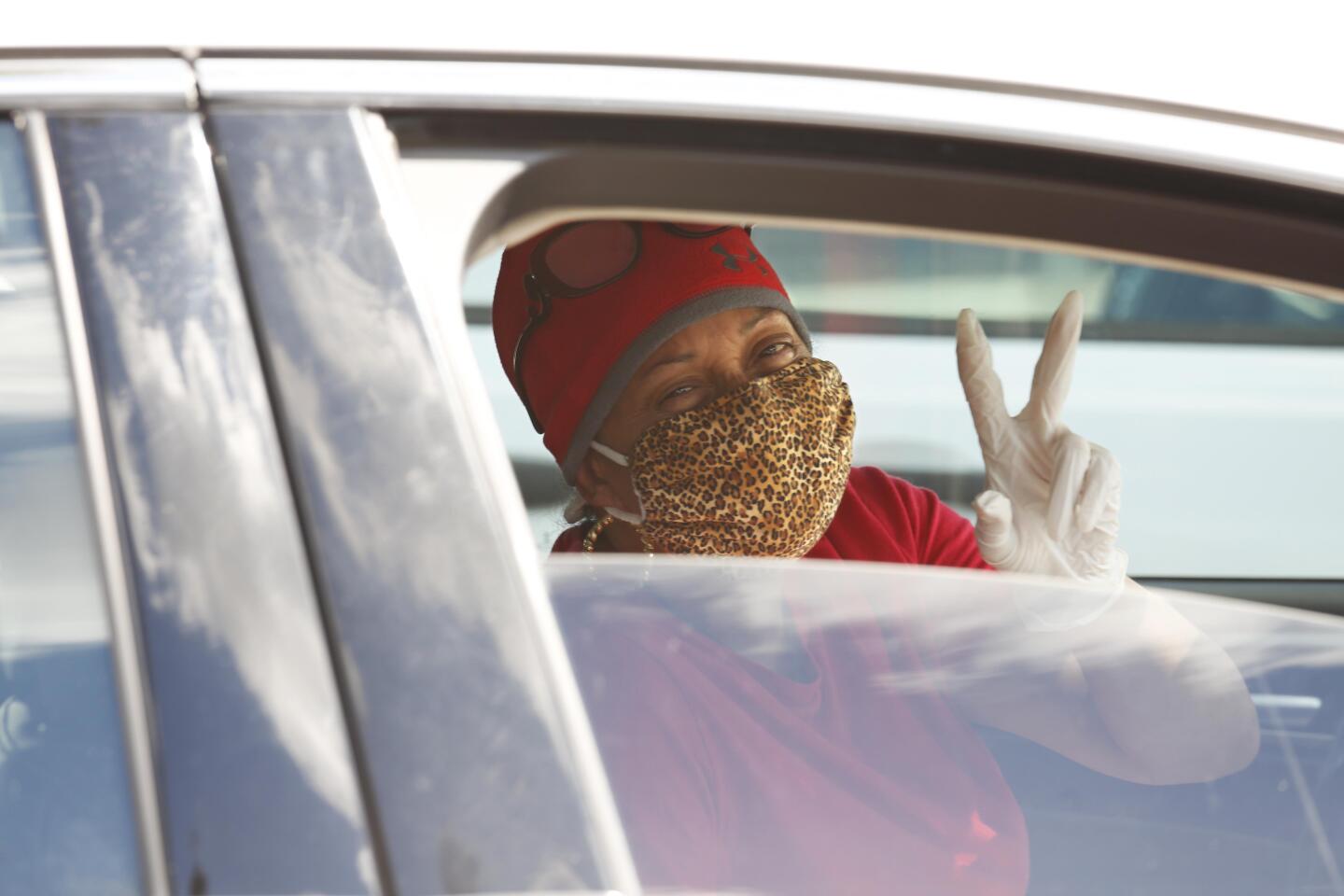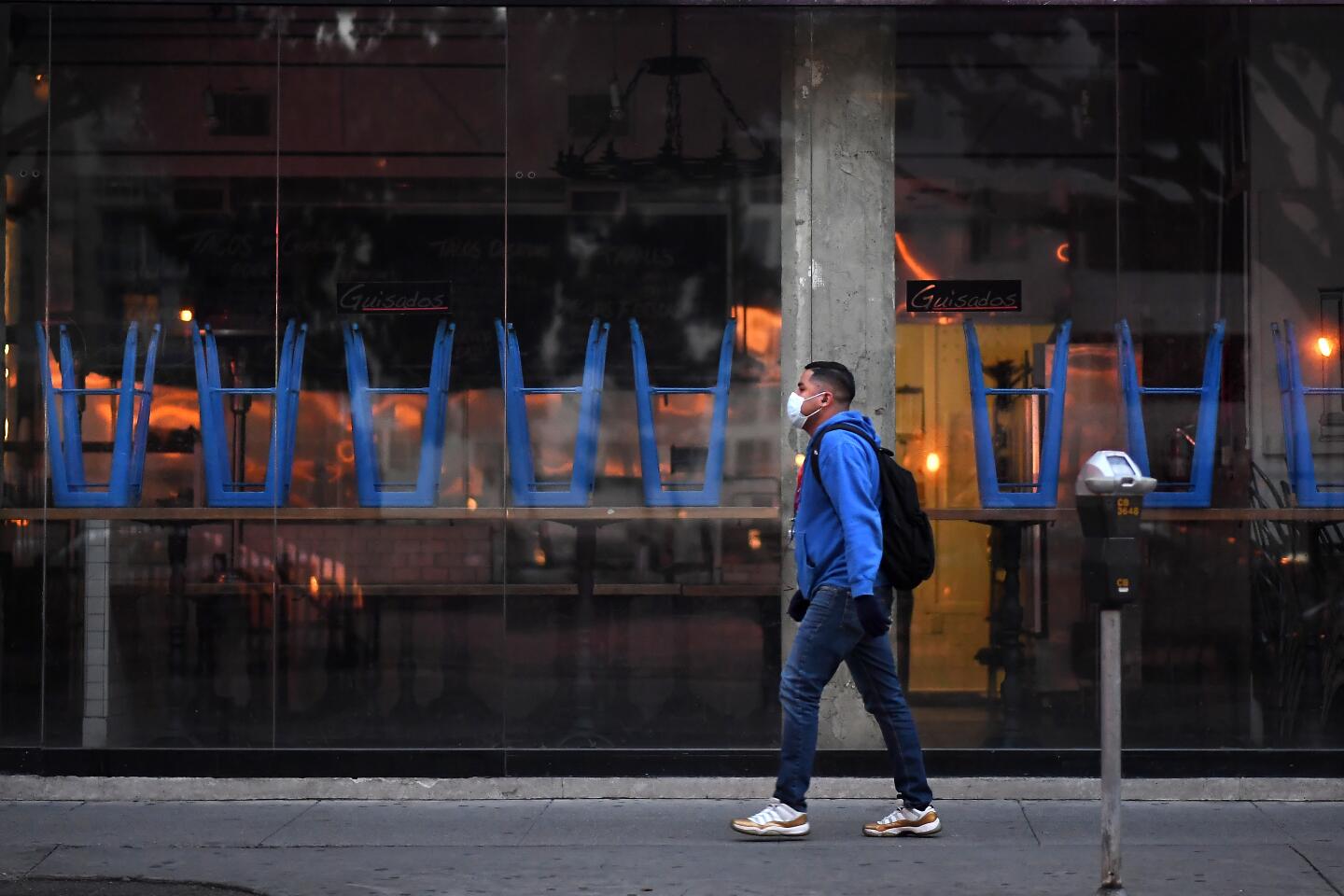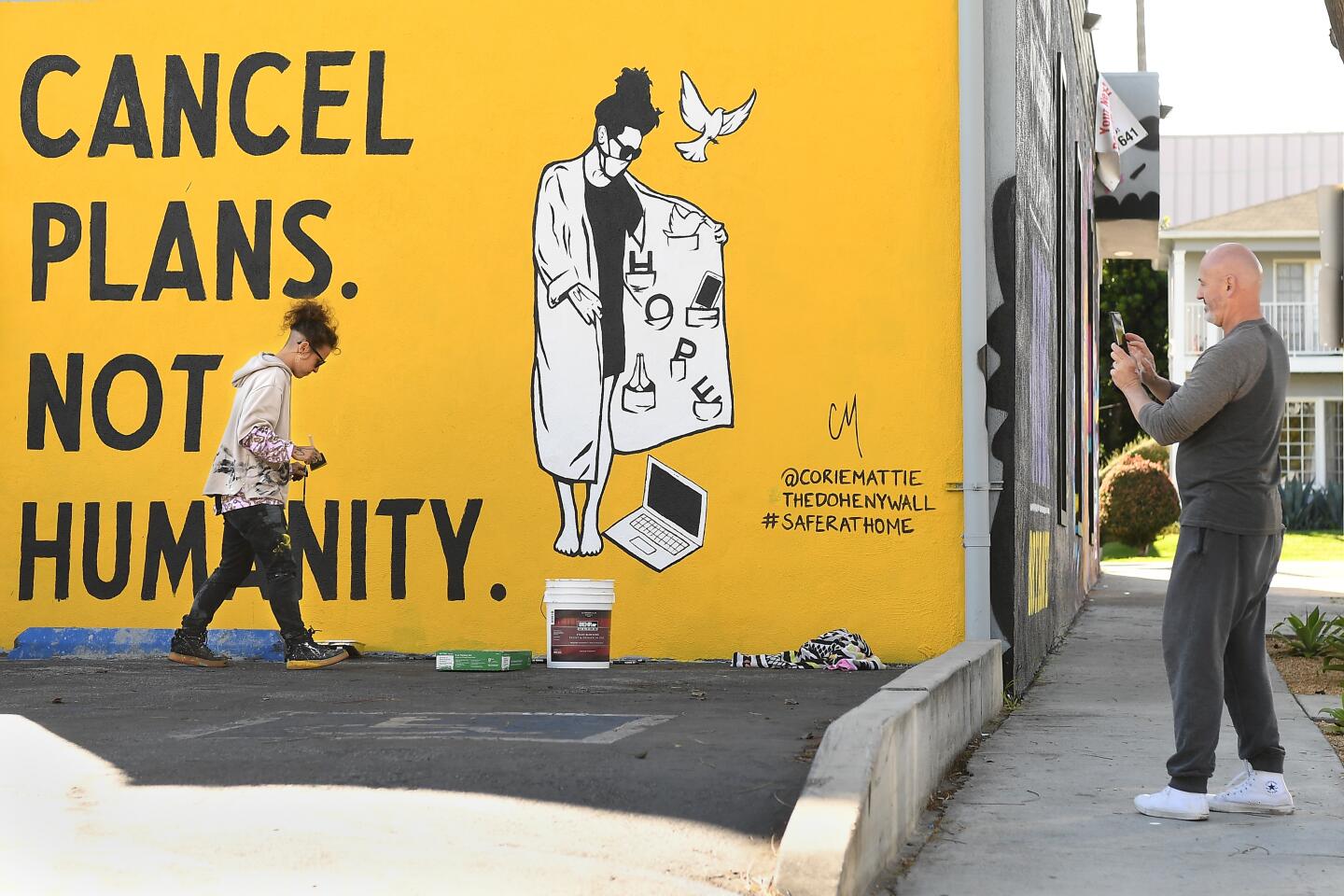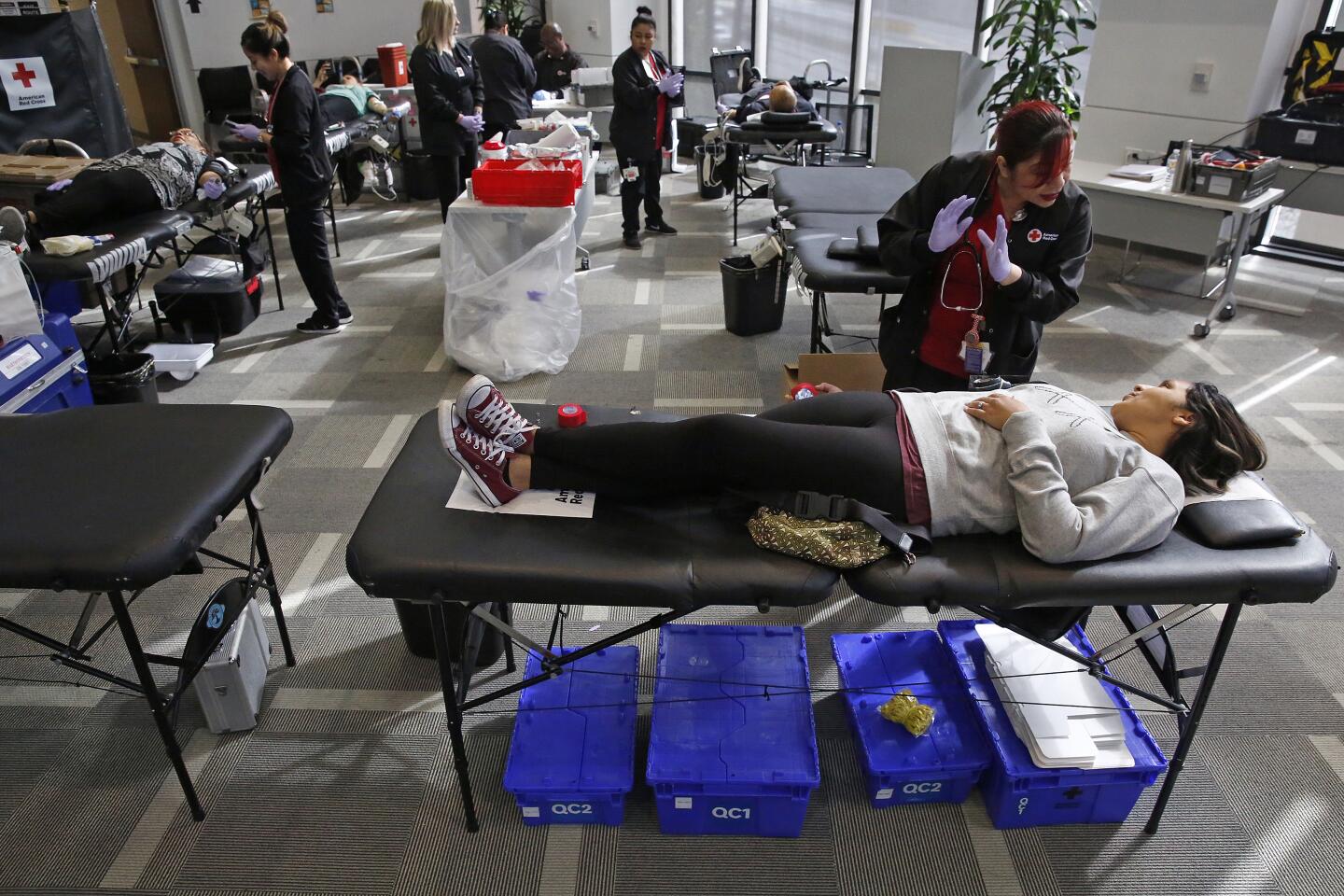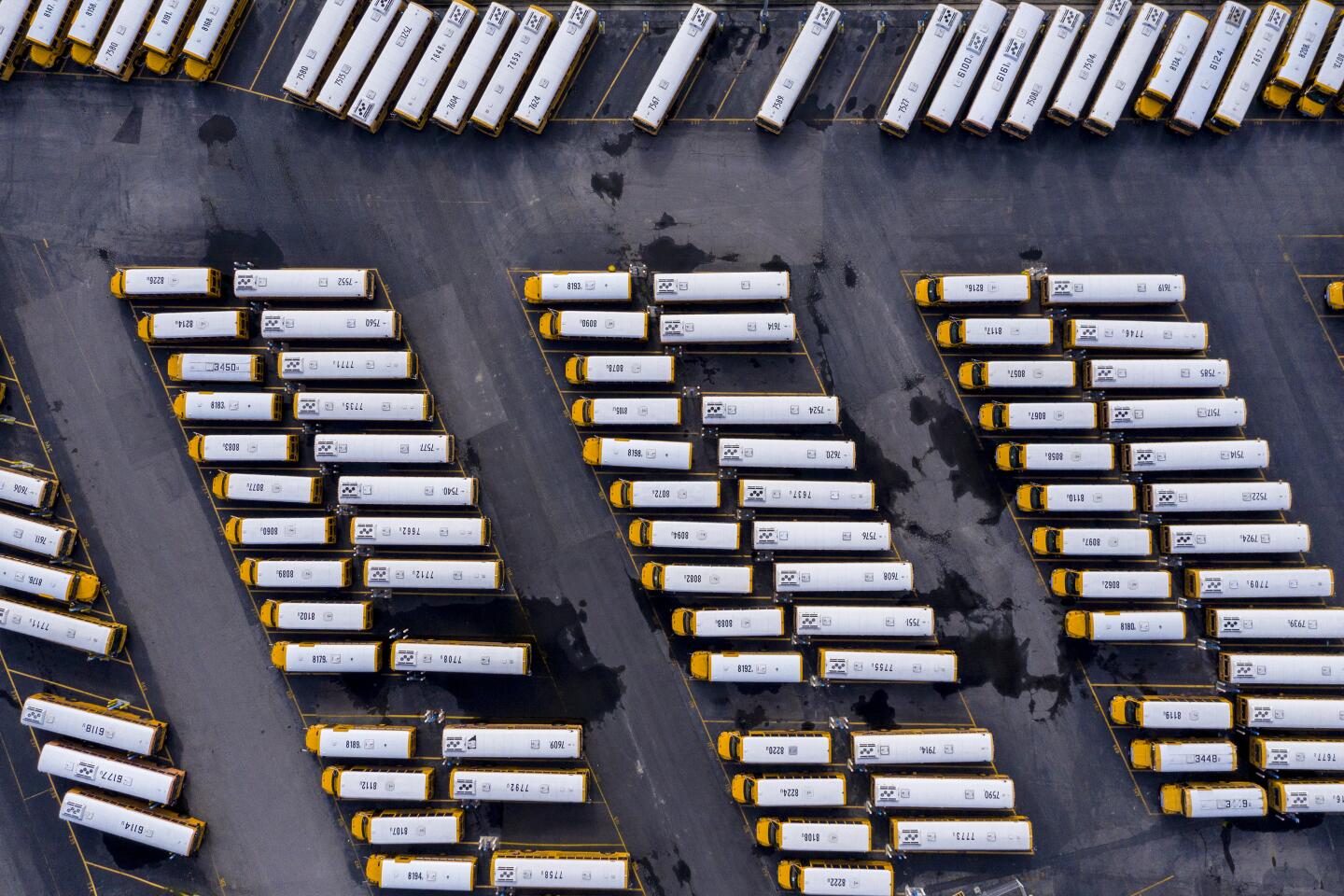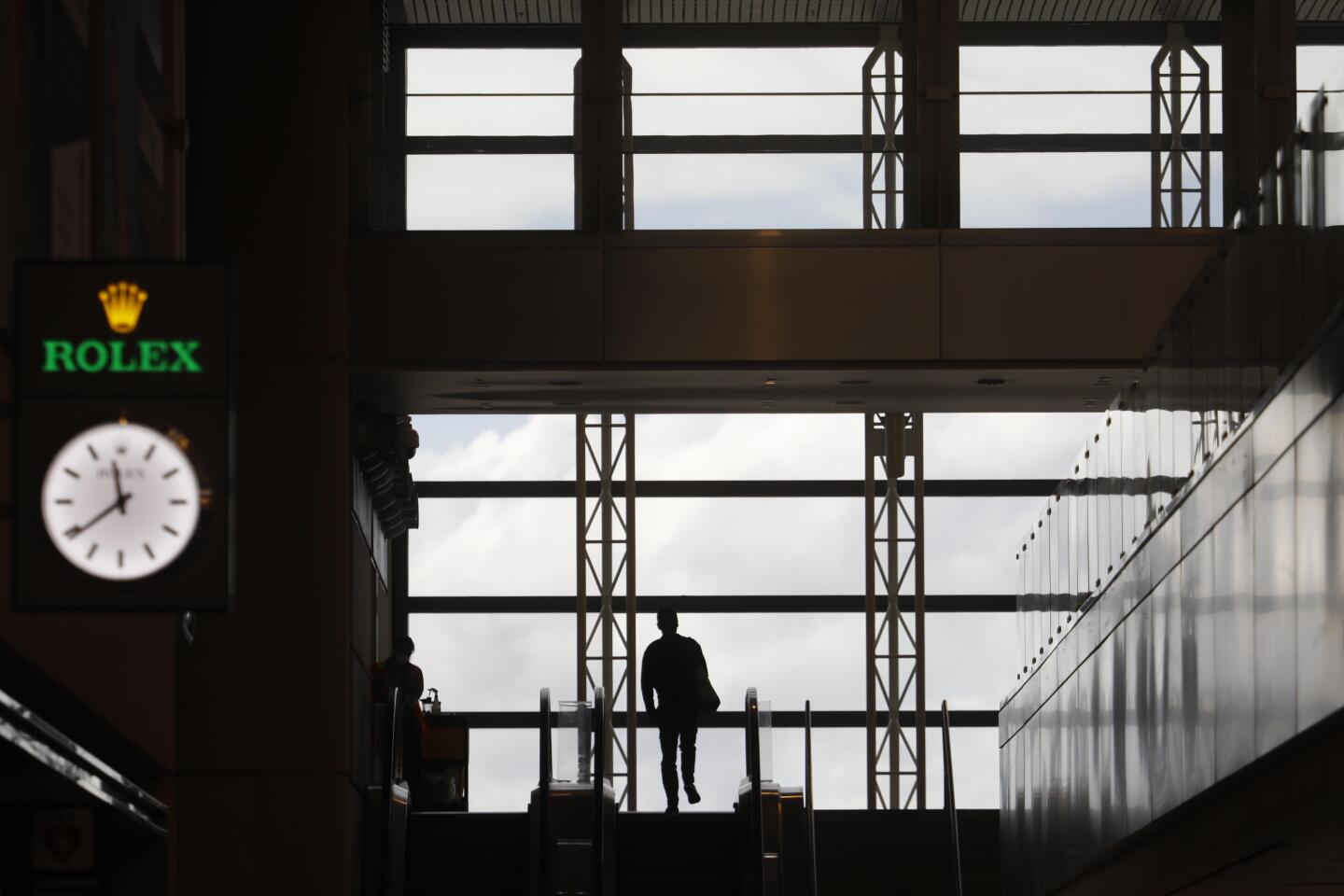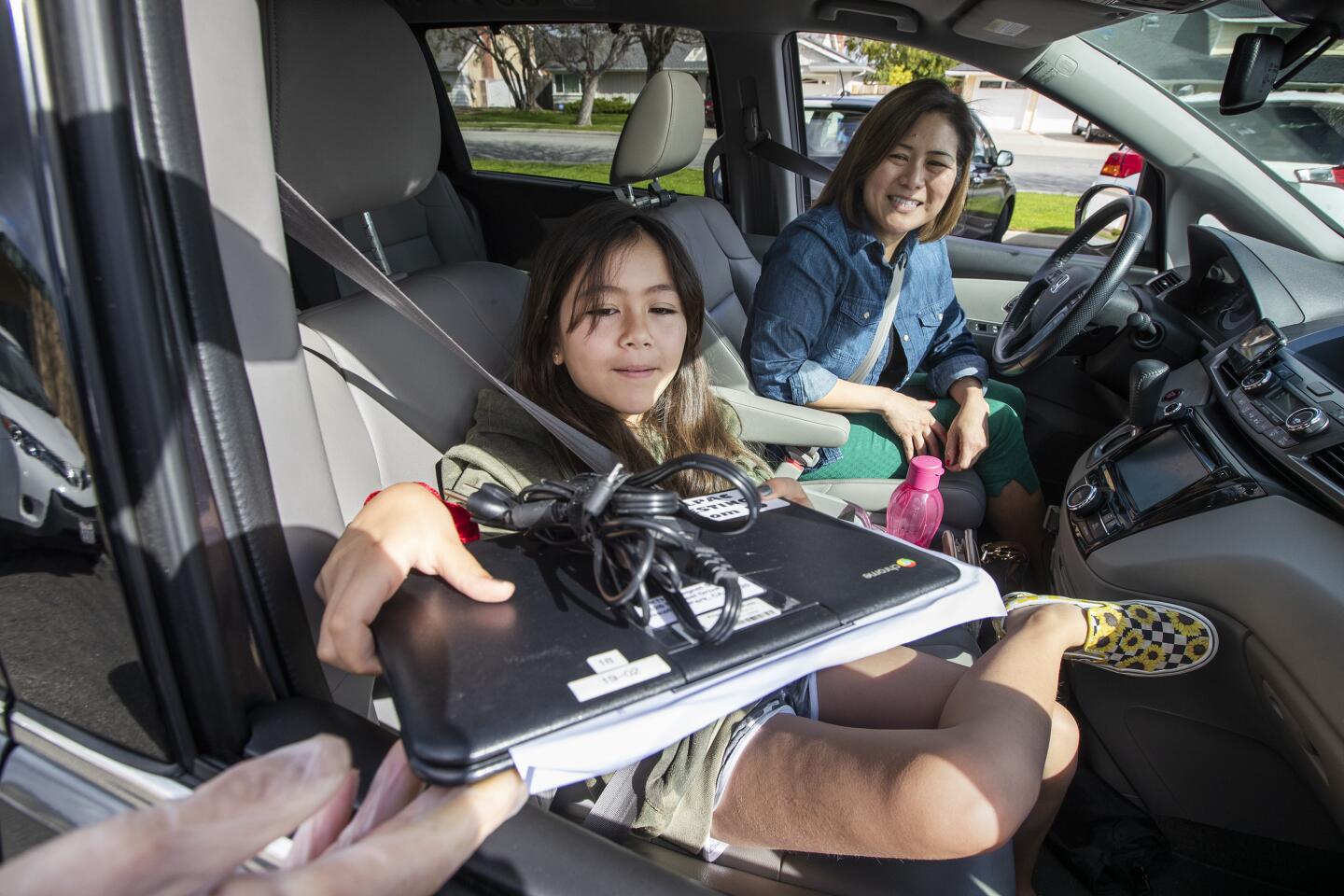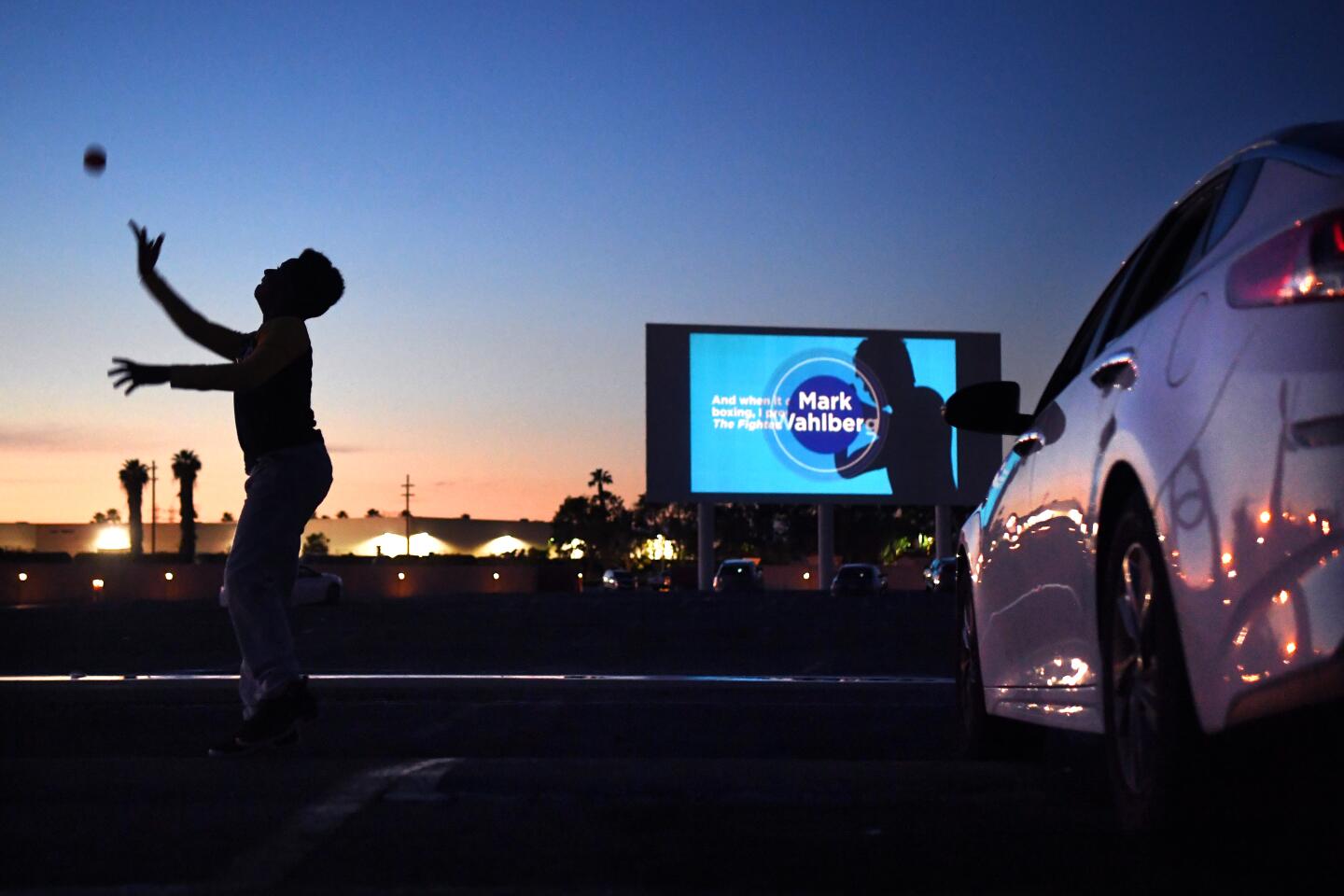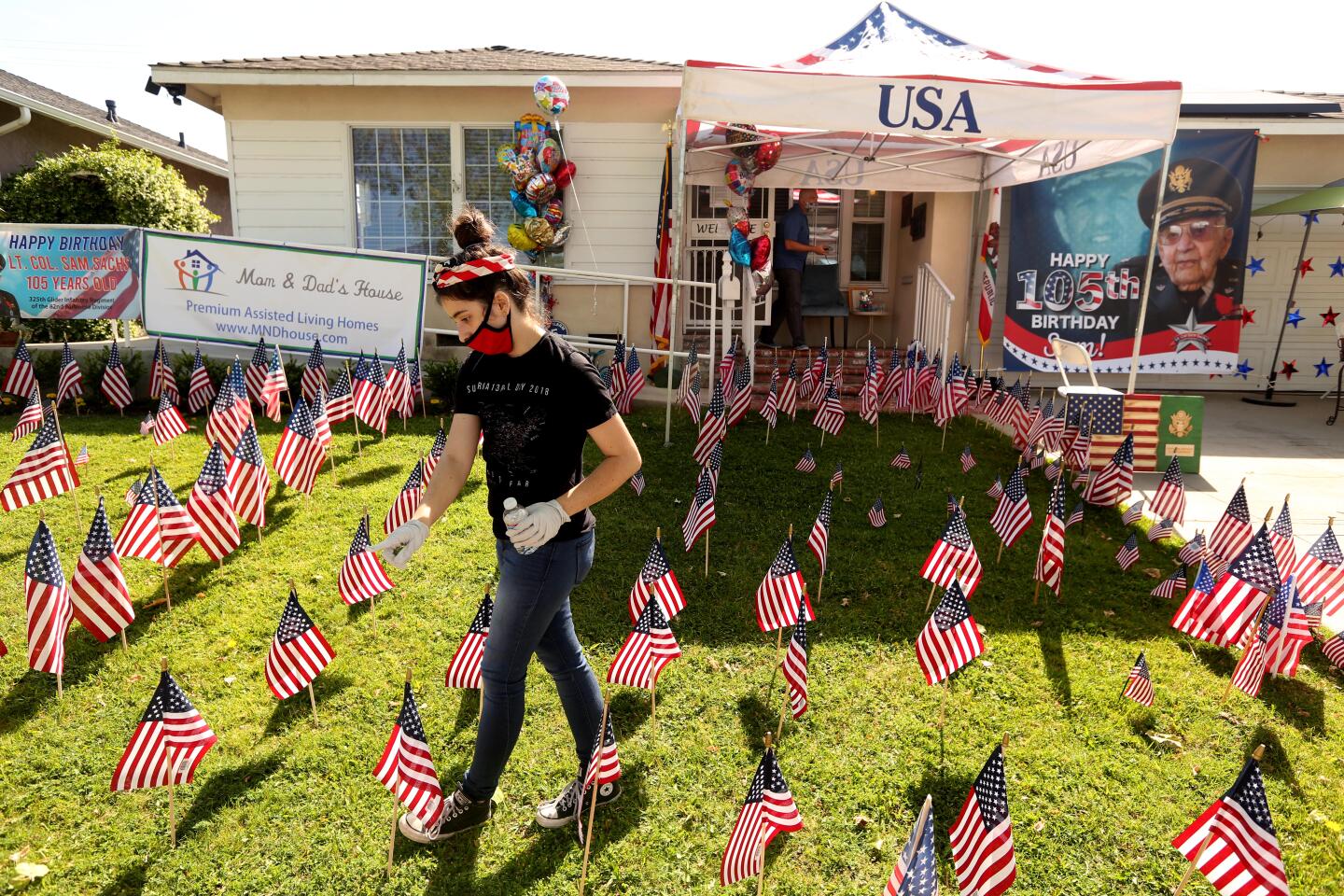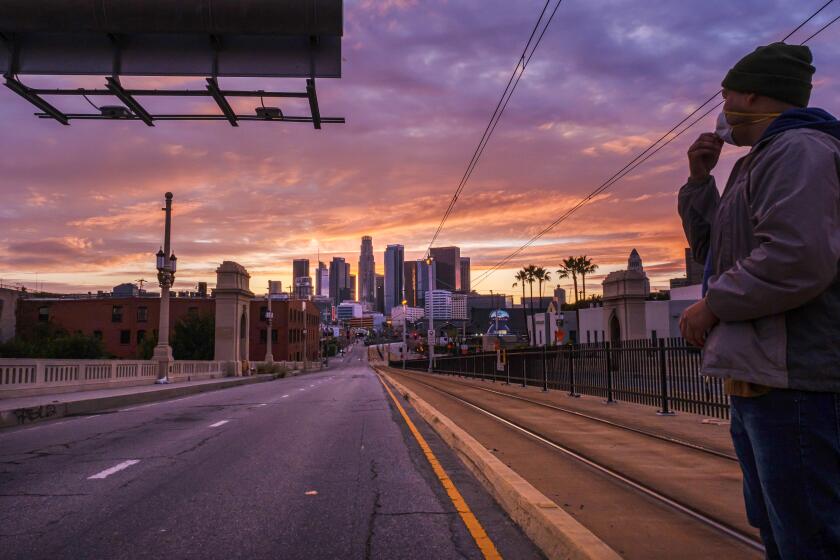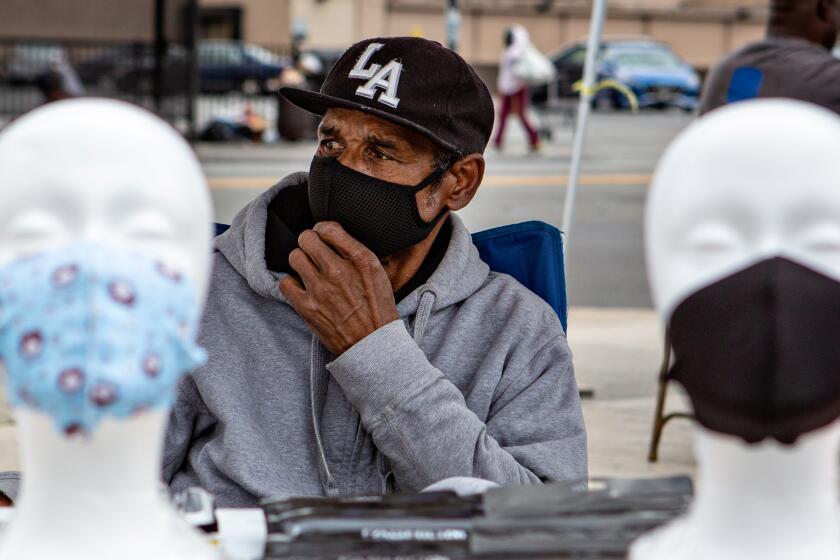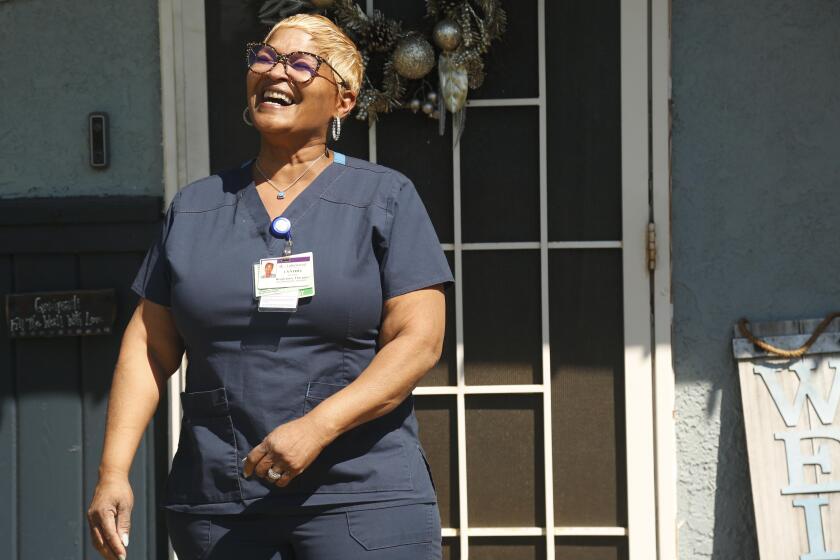All Los Angeles County public parks to close Easter Sunday over coronavirus
- Share via
All public parks in Los Angeles County will be closed Easter Sunday to help contain the coronavirus, Los Angeles Mayor Eric Garcetti announced at a Wednesday evening news conference.
City and county beaches and trailheads have already been closed to visitors, but from Saturday night through Monday morning that closure will be expanded to hundreds of parks encompassing tens of thousands of acres of land in Southern California where Angelenos have traditionally gathered for Easter celebrations.
“I know your heart breaks…. This is such a great tradition for the many families we have,” Garcetti said. “But we can’t afford to have one cluster of even just a few people together spread this disease to more people and kill them.”
Los Angeles County health officials on Wednesday confirmed 29 new coronavirus-linked deaths — the biggest daily jump of the pandemic — bringing the county’s death toll to 198.
The number of people testing positive for the illness has reached 7,530, marking a stark increase of 1,170 new cases over the course of two days. The rise in deaths Wednesday pushed the virus’ mortality rate in the county to 2.6%, Public Health Director Barbara Ferrer said.
These are some of the unusual new scenes across the Southland during the coronavirus outbreak.
Of those who have most recently died of the illness, 17 were older than 65, seven were between 41 and 65 years old and one person was between 18 and 40 years old. Details about four other deaths were not immediately known. At least 22 of those who died had underlying health conditions, Ferrer said.
Among the pathogen’s latest victims was an employee of the Los Angeles Community College District, who died Wednesday morning of complications from COVID-19, Chancellor Francisco Rodriguez announced in an email to district colleagues.
The employee, who had worked in the district’s information technology office for more than 15 years, was hospitalized March 29 after exhibiting symptoms of the disease.
The employee “was very well-respected, especially in response to this public health emergency,” Rodriguez said in the email. The district is not releasing the person’s name to maintain privacy and out of respect for the family.
Other employees who may have come in contact before the employee’s hospitalization have been notified.
During the county’s Wednesday news conference, public health officials reiterated earlier pleas for the public to stay home and try to avoid shopping amid the outbreak, emphasizing that it is making a difference in the number of infections and deaths countywide.
“I want to thank so many of you for settling into routines that allow you to stay home safely, maintain your physical distance from others, and now you’ve adopted wearing a cloth face covering when you must be out,” Ferrer said.
UCLA poll shows overwhelming numbers of people in Los Angeles County anxious about contracting COVID-19 and the financial burden of staying at home.
Though people will eventually get back to their normal routines, it will probably take weeks before any health orders are lifted, she said.
This week, Ferrer took the extraordinary step of telling families that it would be “perfectly appropriate” to pull loved ones out of long-term care facilities for their safety. She said some families can care for an infirm loved one now because so many people are working from home. But she acknowledged the “horrible choice” faced by families who cannot care for family members at home.
On Tuesday, Garcetti announced an order requiring all residents to wear a face covering when visiting the majority of essential businesses in hopes that it will protect workers and slow the spread of the coronavirus.
Effective Friday, residents must wear a mask, bandanna or other type of covering over their noses and mouths when in grocery stores, pharmacies, hardware stores, coin-operated laundry services, restaurants, hotels, taxis, ride-hail vehicles and several other essential businesses. Workers must also wear masks.
Despite the grim update from county public health officers Wednesday, California officials are offering glimmers of optimism that the state is seeing progress in its fight against the coronavirus, even as the death toll climbs.
California has not seen the rate of deaths of hot spots such as New York, where more than 4,000 have died. California has recorded more than 480 deaths and more than 18,000 confirmed cases. And while the virus continues to spread rapidly in some places, including Los Angeles County, there are signs that its rate of growth is slowing in parts of the Bay Area.
On Wednesday, Alameda County added 38 new coronavirus cases to its total and one death, bringing its totals to 640 cases and 16 deaths. The county had reported a higher number of new cases and two fatalities a day earlier.
Officials say the state’s strict stay-at-home rules are making a difference. Gov. Gavin Newsom offered a “sense of optimism” to Californians on Tuesday about bending the coronavirus curve while also emphasizing the need to maintain social distancing efforts.
“While the curve is bending in the state of California, it’s also stretching, and at any moment we pull back, you can see that curve go back up, that slope go back up,” he said.
Bending the curve means reducing the transmission of the virus to prevent a sudden and large increase in patients with the illness. Instead of a rapid surge, infections grow more gradually, essentially “stretching” out a bell curve over time, as Newsom said, to avoid overwhelming the healthcare system with more seriously sick patients than there are resources to treat them.
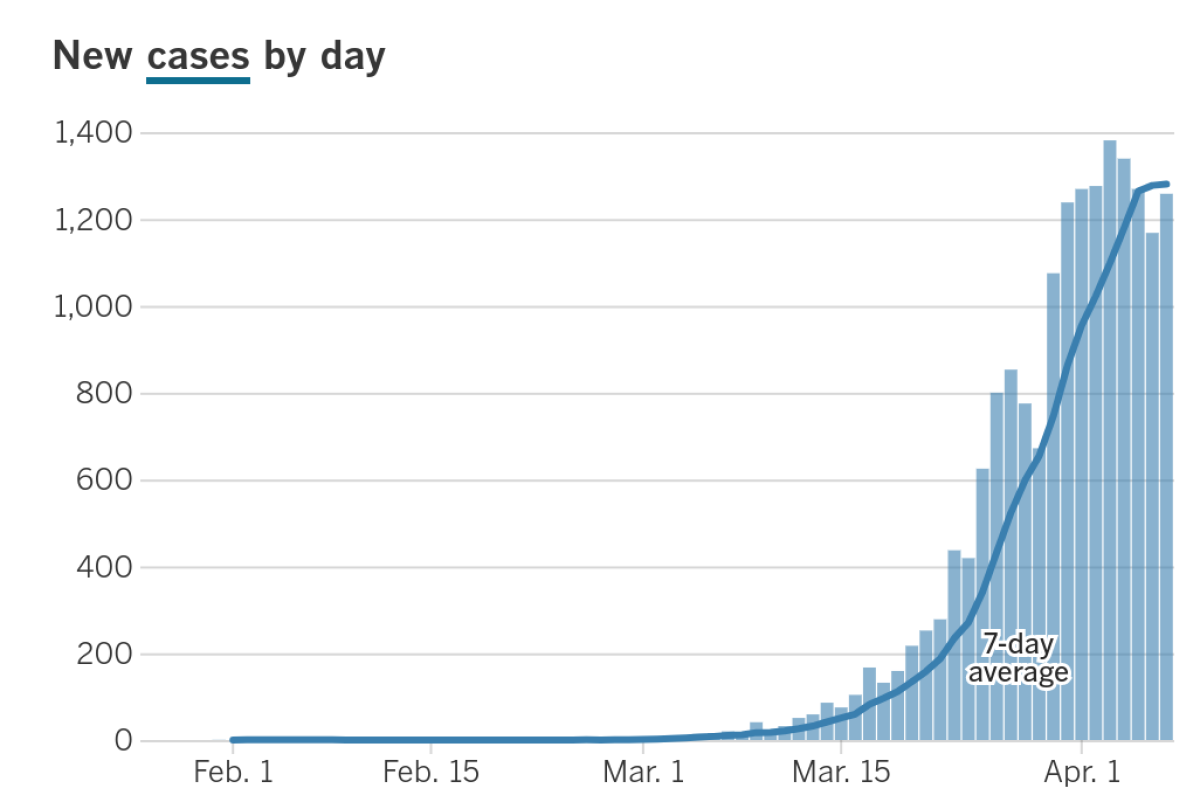
As part of that push, the state Wednesday received federal approval to allow food stamp recipients to buy food online to avoid the risk of exposure to the coronavirus when going to the grocery store. The state hopes to have the new program in place in late April.
U.S. Secretary of Agriculture Sonny Perdue said he approved requests from California and Arizona to participate in a pilot program that allows online food purchases from government-approved businesses for people in the federal Supplemental Nutrition Assistance Program, also known as SNAP. Six other states, including New York and Oregon, had previously been approved for the test program.
“Enabling people to purchase foods online will go a long way in helping Americans follow CDC social distancing guidelines and help slow the spread of the coronavirus,” Perdue said in a statement.
Calfresh, the state’s SNAP program, serves more than 4 million people, with new applications coming in at record levels as people have lost income and jobs during the preventive measures ordered by the state in response to COVID-19.
Under the program, Calfresh recipients will be able to use their electronic benefit transfer cards to buy food online from Amazon and Walmart, while the state is hoping to expand the list of approved retailers in the future.
Elsewhere, Newsom reported on Wednesday that 16,957 people have tested positive for COVID-19. Hospitalizations from the virus increased 3.9% to 2,714 in the last day, including a 4.2% bump in patients receiving intensive care to 1,154.
He repeated earlier remarks that the duration of the stay-at-home order is dependent on whether Californians continue to follow it and wear appropriate face coverings if they go out. The governor said the state is expanding testing, including serology tests and community surveillance testing, to better understand when “we get back to a new normalcy.”
Newsom also said this week that California has secured a monthly supply of 200 million N95 respiratory and surgical masks to help protect healthcare workers and other essential personnel at the front lines of the coronavirus outbreak in the state.
“We decided enough’s enough. Let’s use the power, the purchasing power of the state of California, as a nation-state,” Newsom told MSNBC host Rachel Maddow. “We did just that. And in the next few weeks, we’re going to see supplies, at that level, into the state of California and potentially the opportunity to export some of those supplies to states in need.”
The masks are among the most coveted supplies needed in hospitals and medical facilities that are treating people infected with the coronavirus amid a nationwide shortage of personal protective equipment for healthcare workers. They will come from a consortium of suppliers, including a California nonprofit, a California manufacturer with suppliers in Asia and from a company sterilizing used masks, according to Nathan Click, the governor’s spokesman.
Newsom is also working with hospitals, healthcare providers and manufacturers to procure and staff 50,000 new hospital beds — in addition to the more than 70,000 currently in the state’s healthcare system — to adequately care for the anticipated rise in patients.
Severe cases of COVID-19 can cause fluid to build up in the lungs, leading to shortness of breath or difficulty breathing. Dr. Mark Ghaly, the state’s secretary of Health and Human Services, said he expects California to need 15,000 to 20,000 more ventilators, machines that push air in and out of the lungs, to care for seriously ill patients. The state currently has roughly 11,000 ventilators, Newsom said.
Effective Friday, Los Angeles workers and residents must wear a mask, bandanna or other type of face covering while at essential businesses under an order from Mayor Eric Garcetti.
Newsom announced this week that California was lending 500 state-owned ventilators to the Strategic National Stockpile to help New York and other COVID-19 hot spots facing shortages of the desperately needed medical devices.
Given that under current estimates, coronavirus cases here are not expected to peak until May, California could afford to lend the medical devices to parts of the country where they are in short supply, Newsom said.
Despite the governor’s assertion, Santa Clara County issued an order Wednesday asking individuals and businesses to report large inventories of personal protective equipment and ventilators in anticipation of a shortage as cases of the virus continue to rise.
Though the county has a sufficient supply of equipment, officials are preparing for the possibility more supplies may be needed than the state and federal government can provide in the future. The order comes one day after the county confirmed 1,380 COVID-19 cases and 46 deaths.
As states scramble to secure ventilators during the crisis, a potential shortage looms of respiratory therapists, the workers trained to operate them.
Individuals and businesses that have more than 5,000 nitrile or vinyl gloves, more than 500 N95 masks, more than 500 surgical or procedure masks, more than 100 safety goggles and face shields, more than a gallon of hand sanitizers or any ventilators are expected to report their supplies to the county by April 15.
“The order is about protecting the people who protect us,” county counsel James Williams said. “We’re sheltering at home. These people are out there on the front lines protecting people who are infected. We need to protect the protectors.”
Times staff writers Colleen Shalby, Nina Agrawal and Kailyn Brown contributed to this report.
More to Read
Sign up for Essential California
The most important California stories and recommendations in your inbox every morning.
You may occasionally receive promotional content from the Los Angeles Times.
